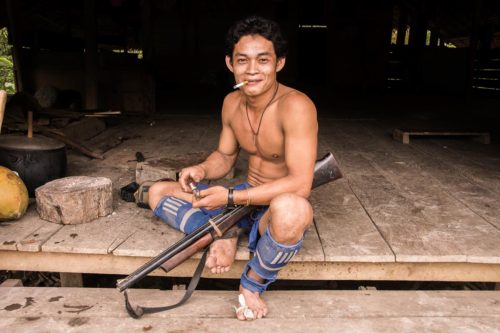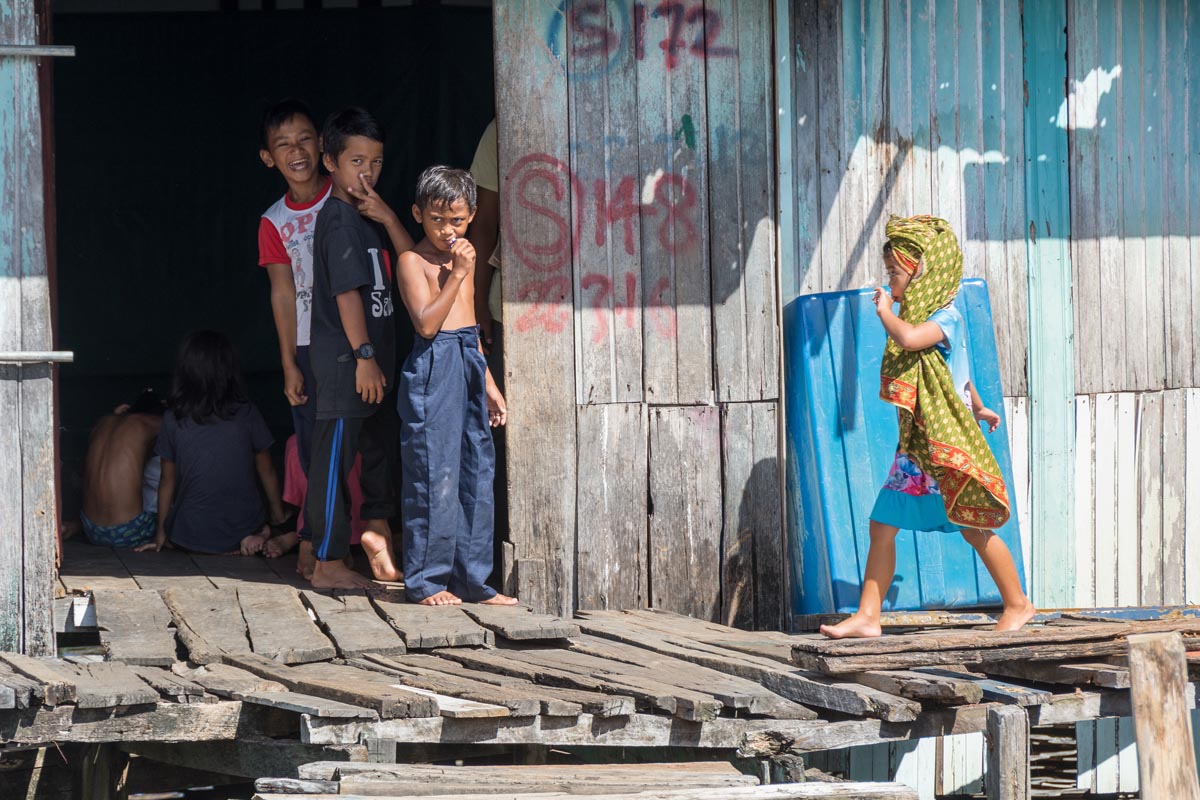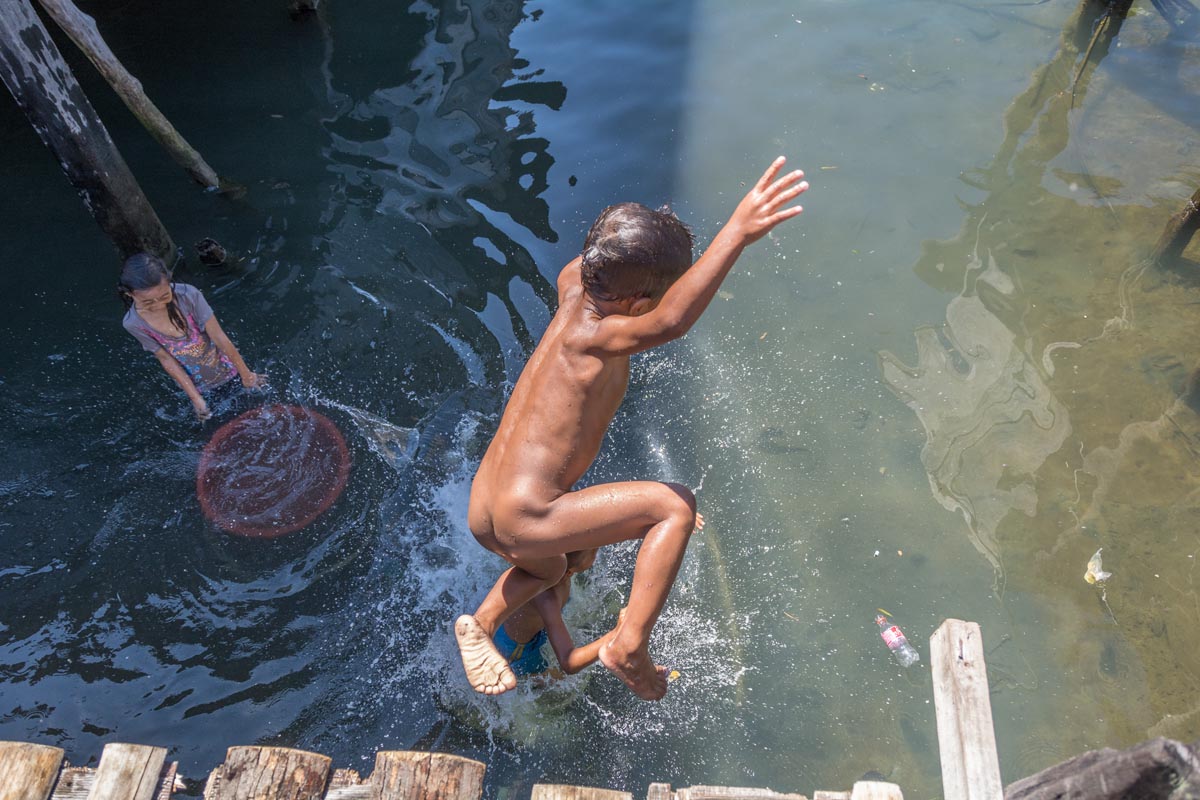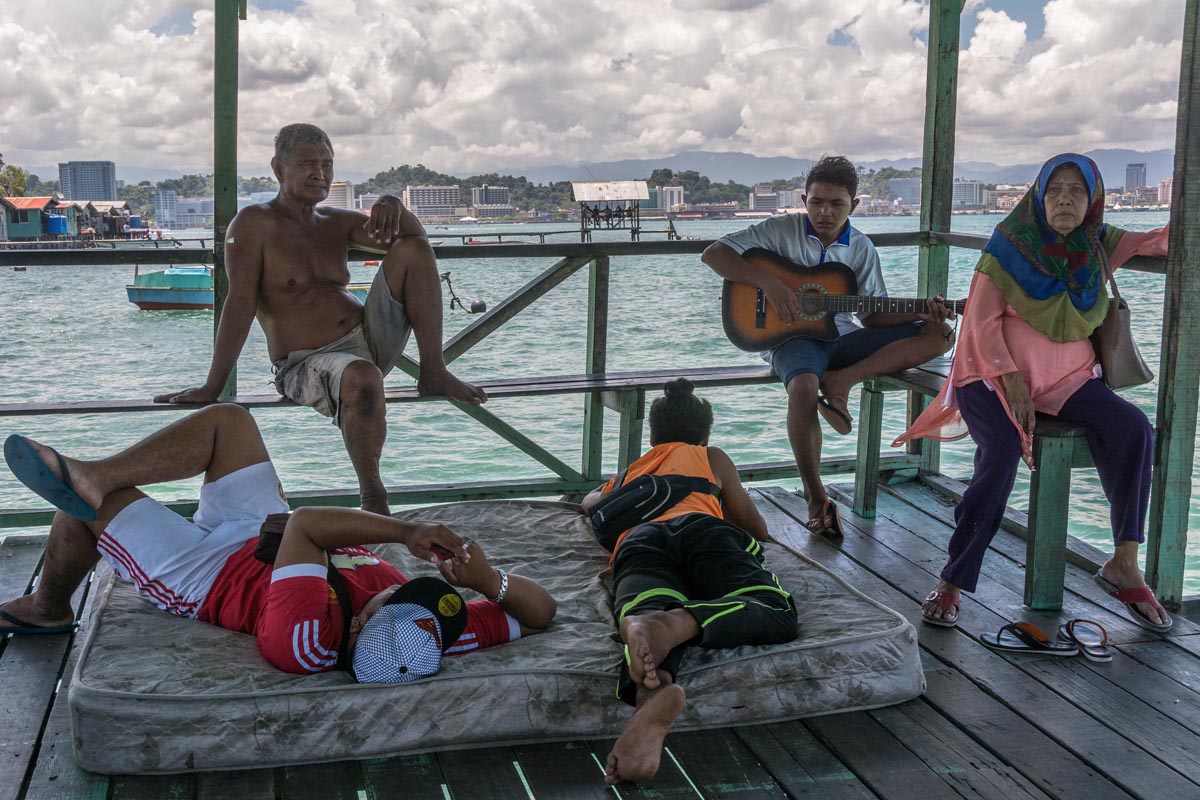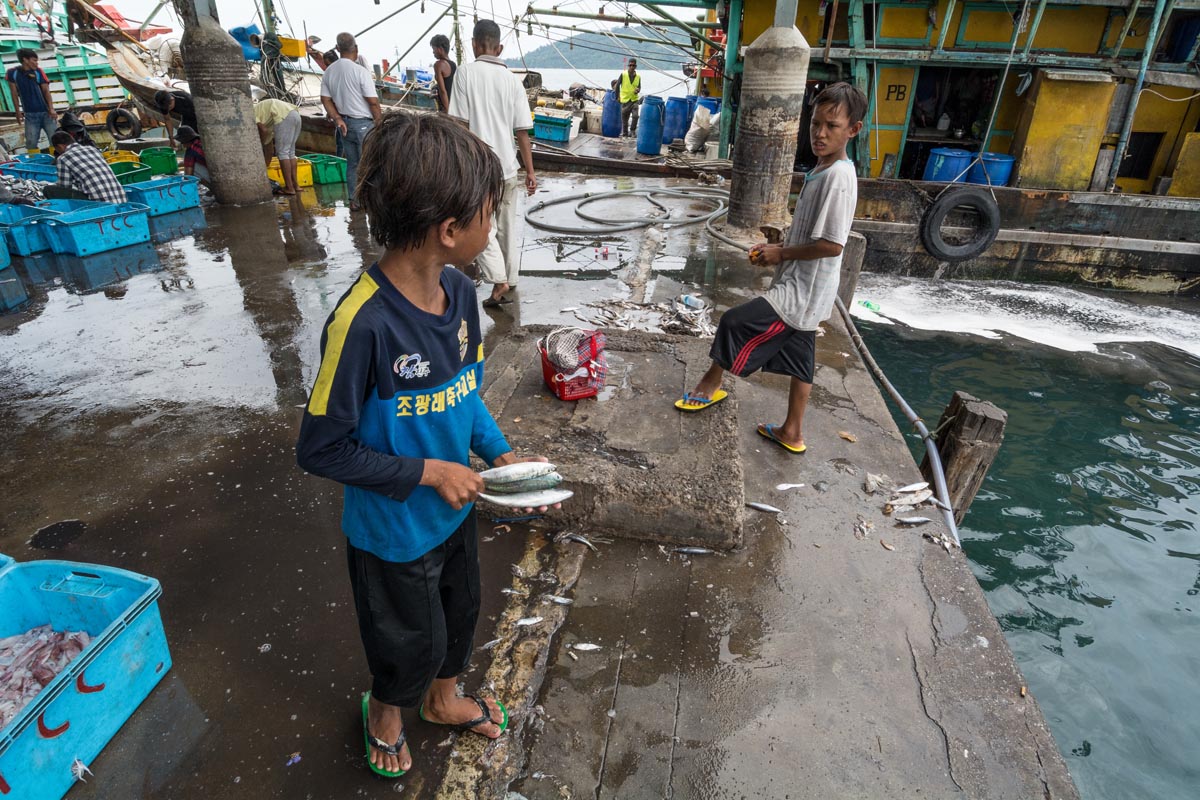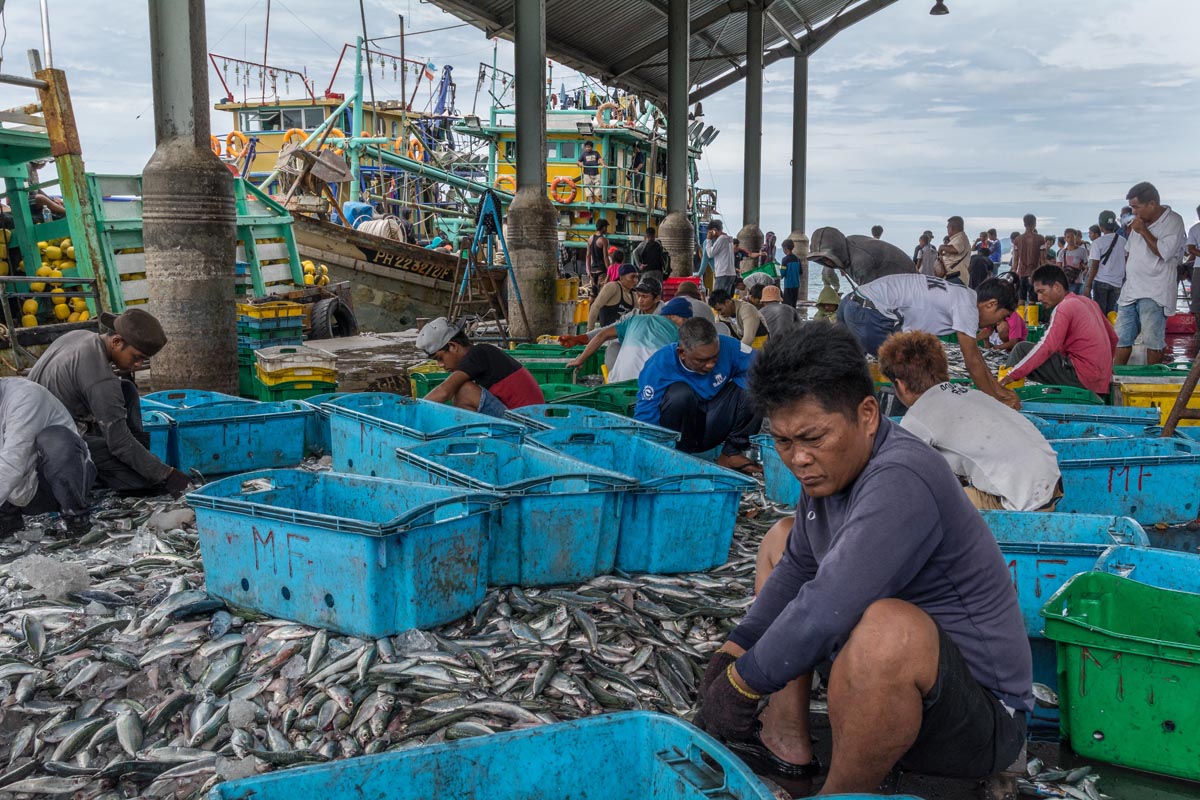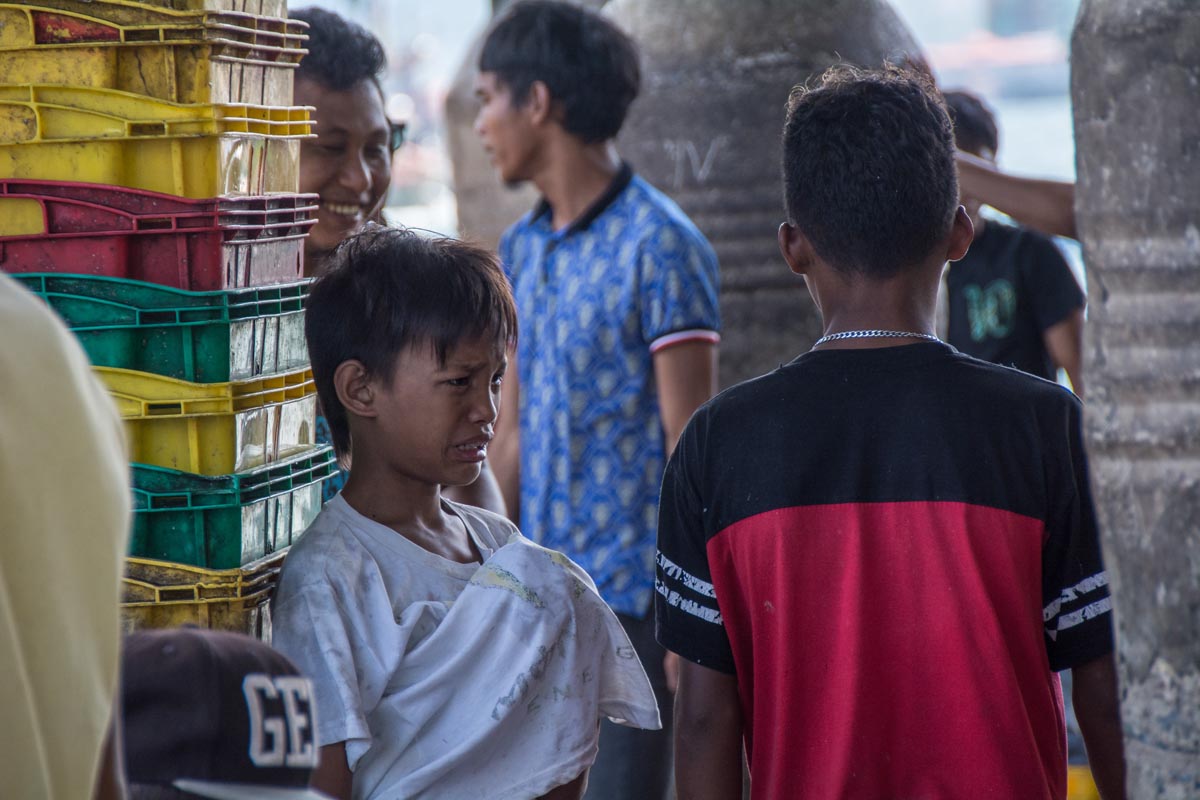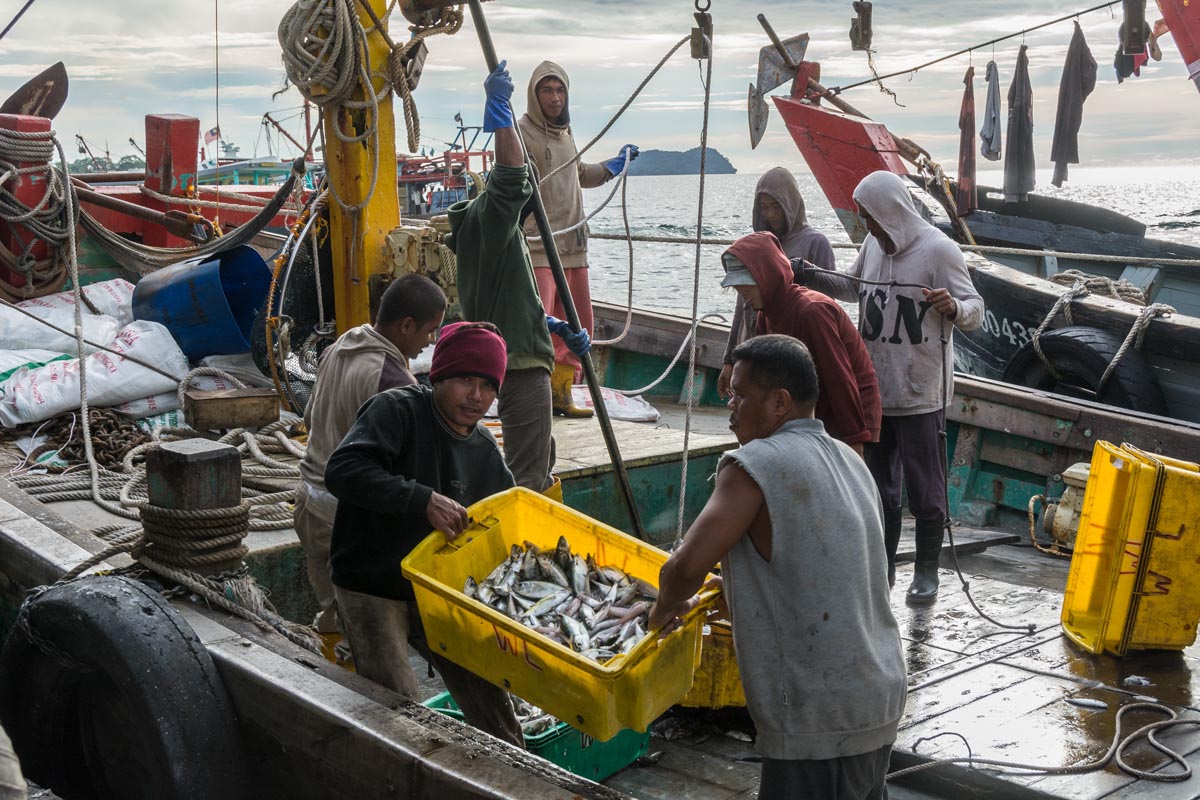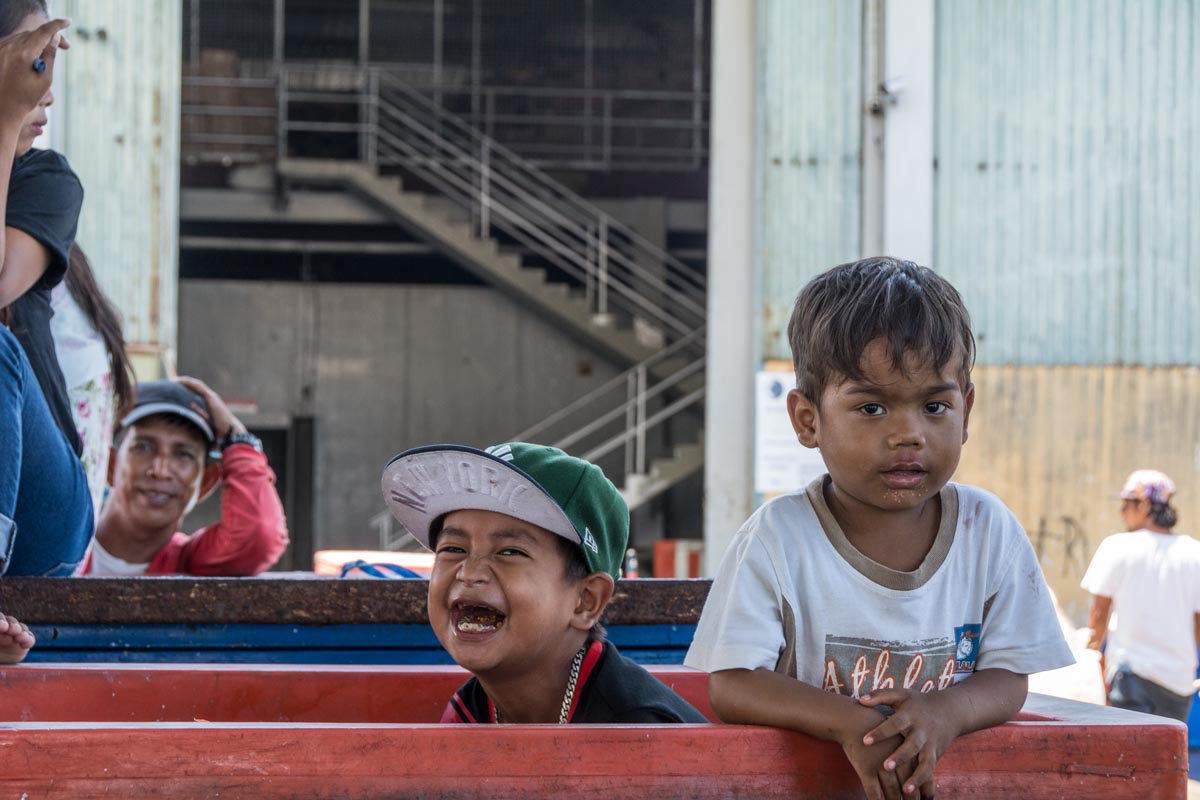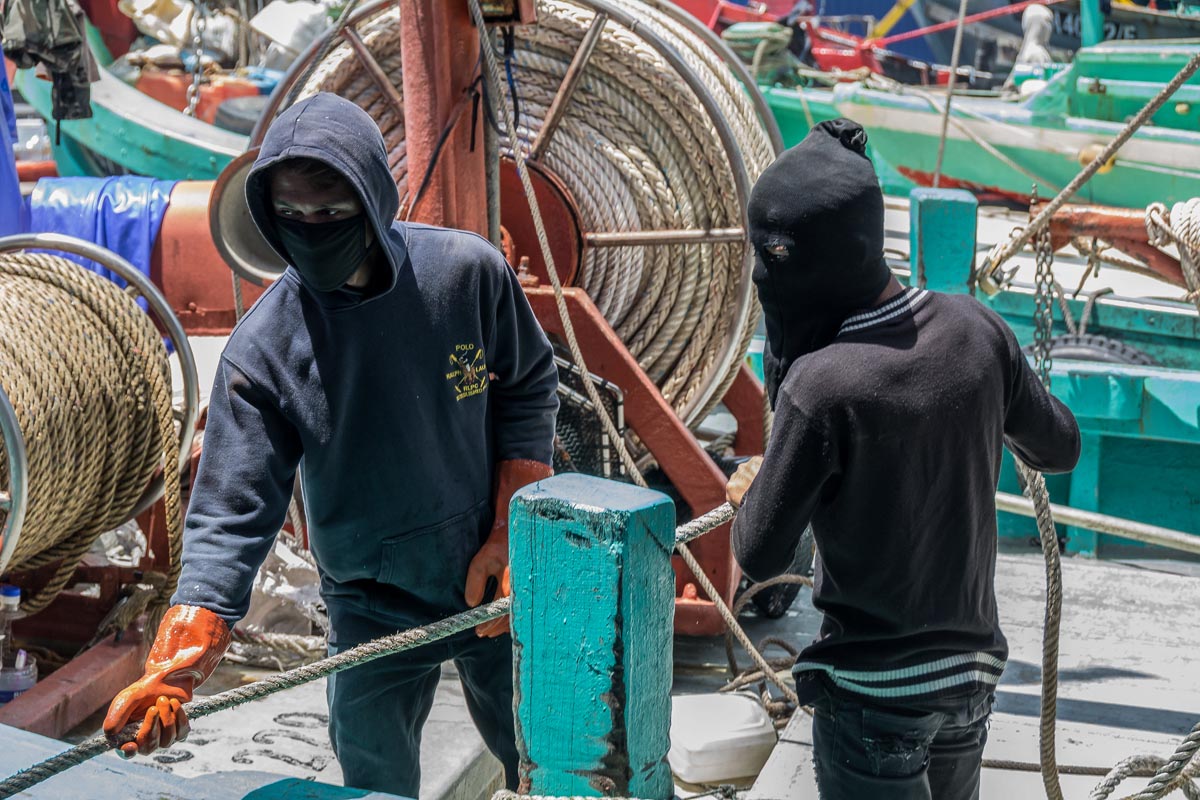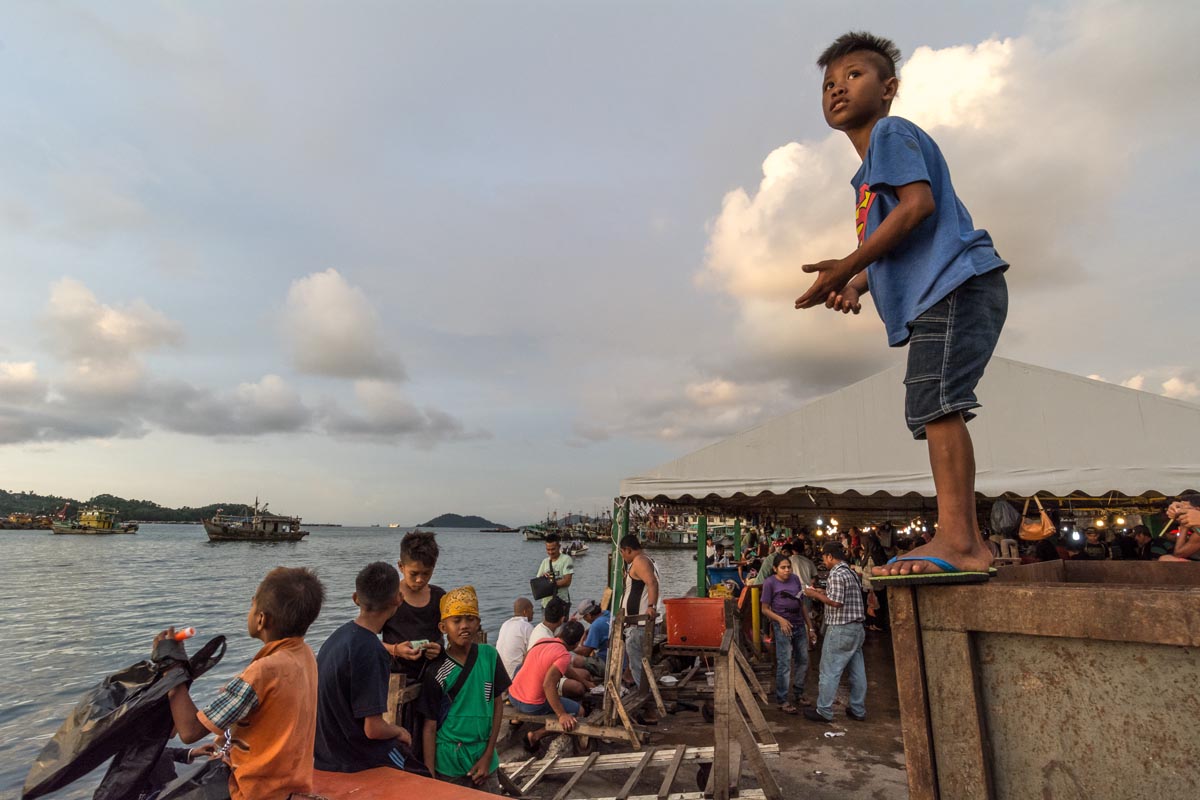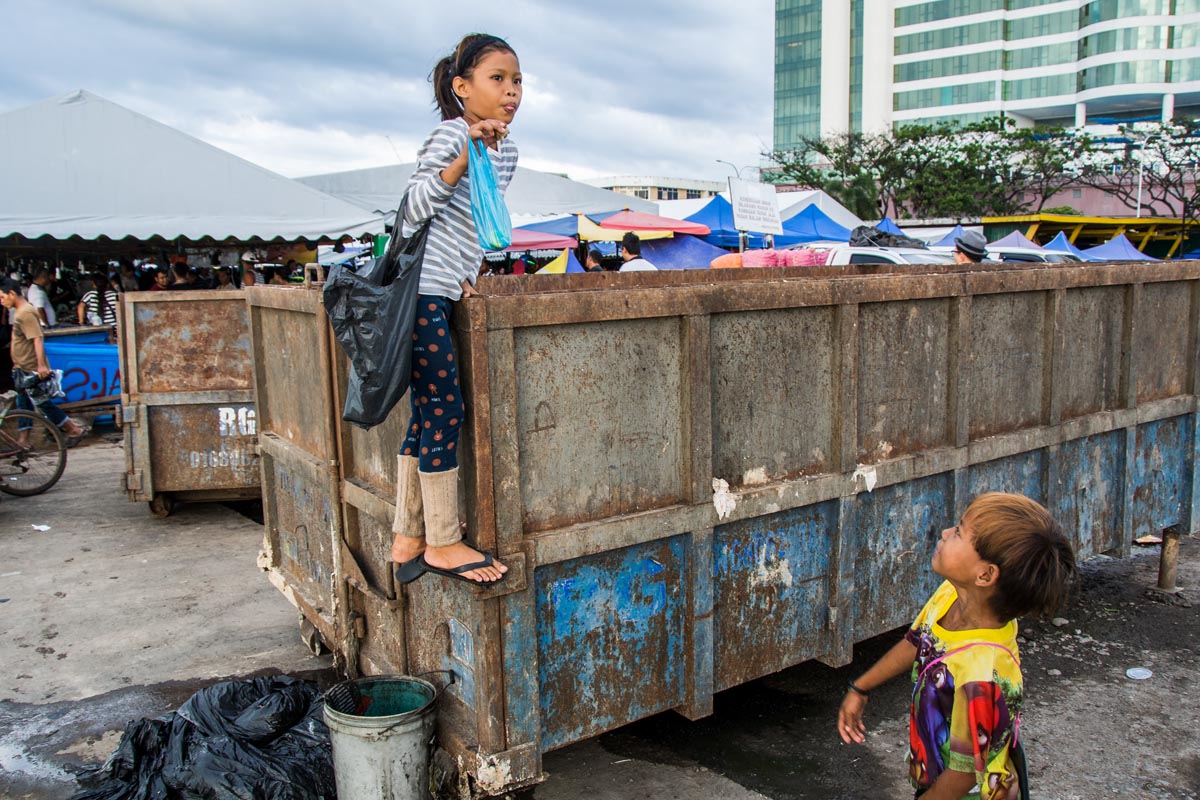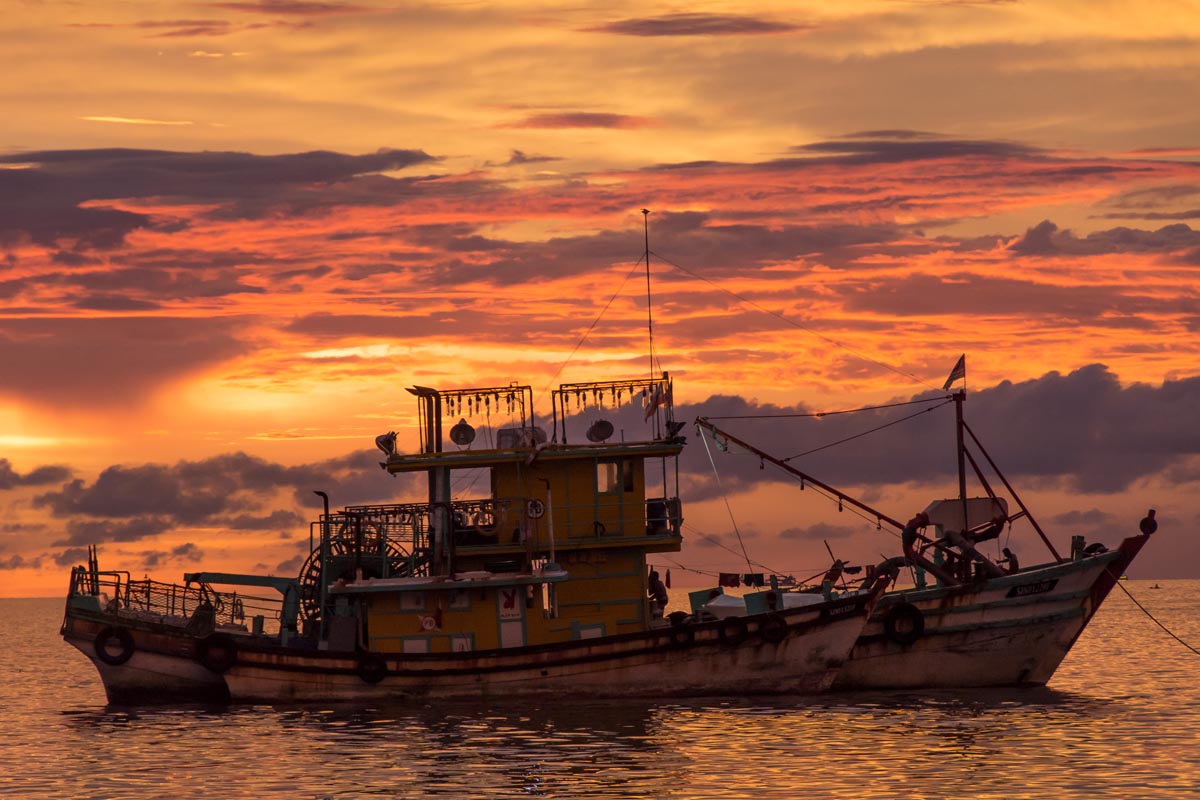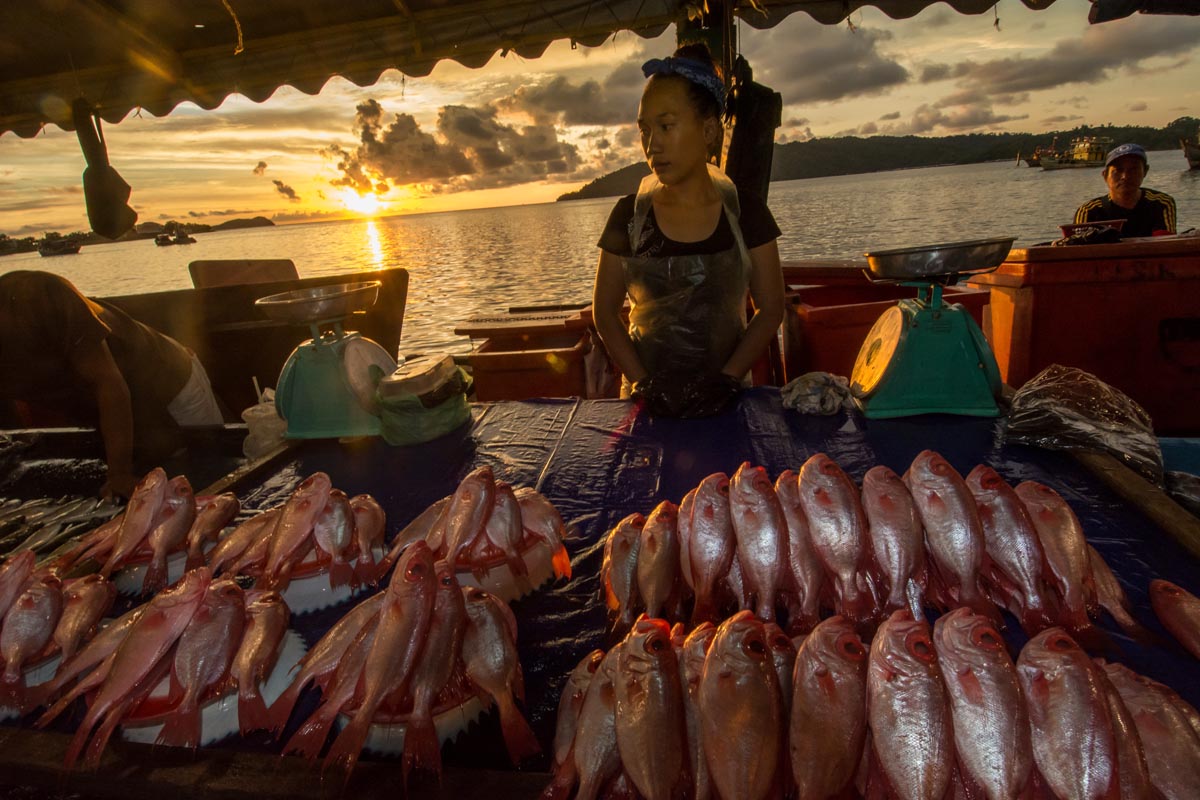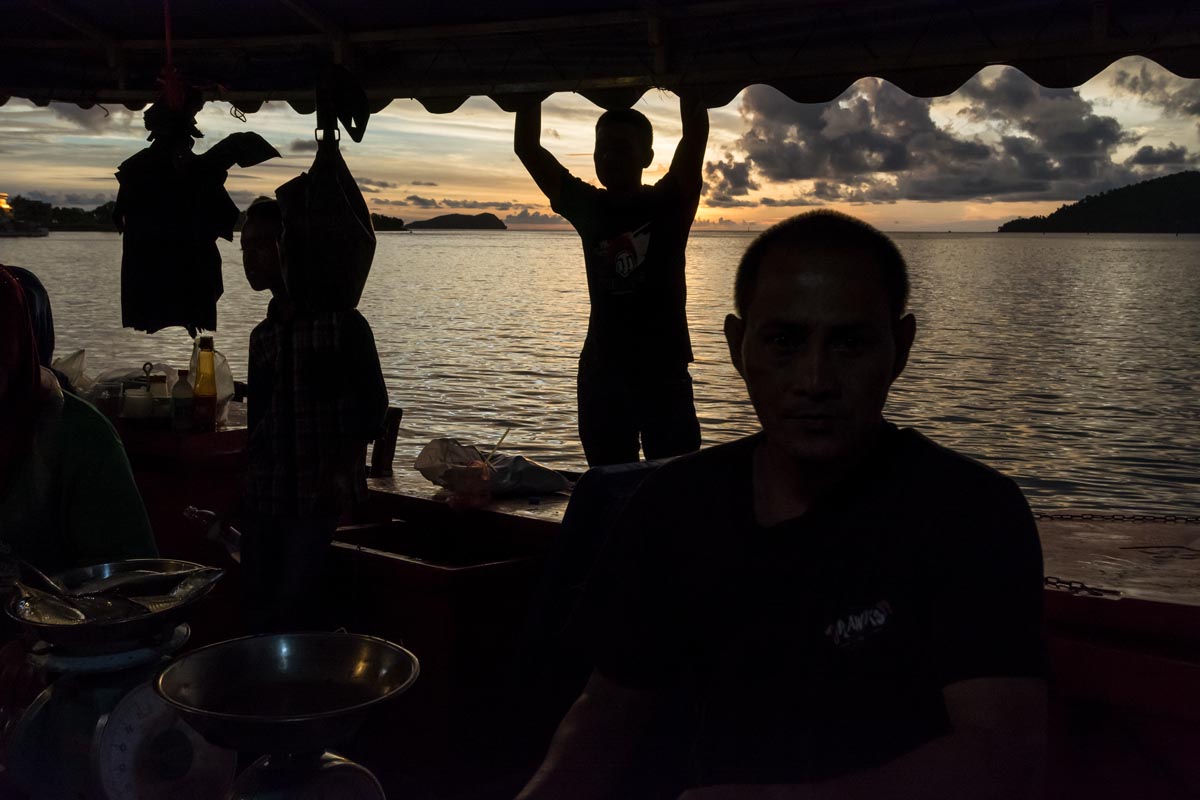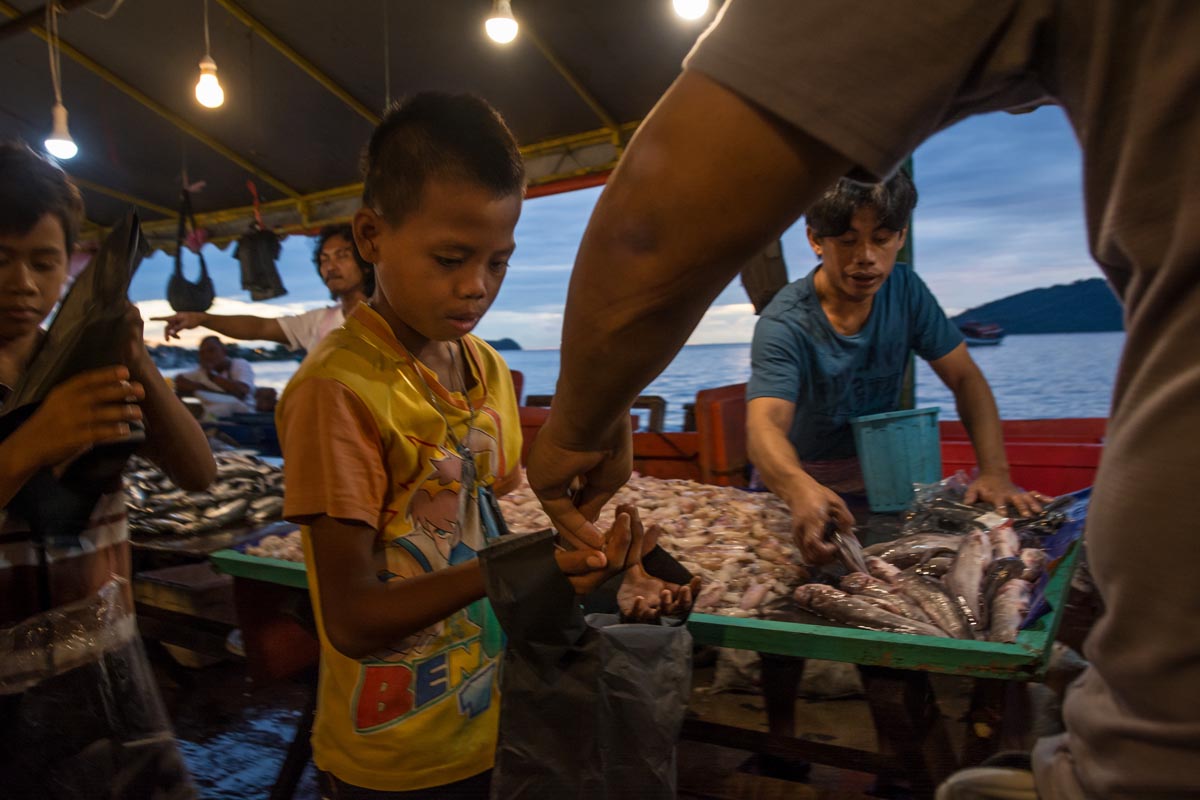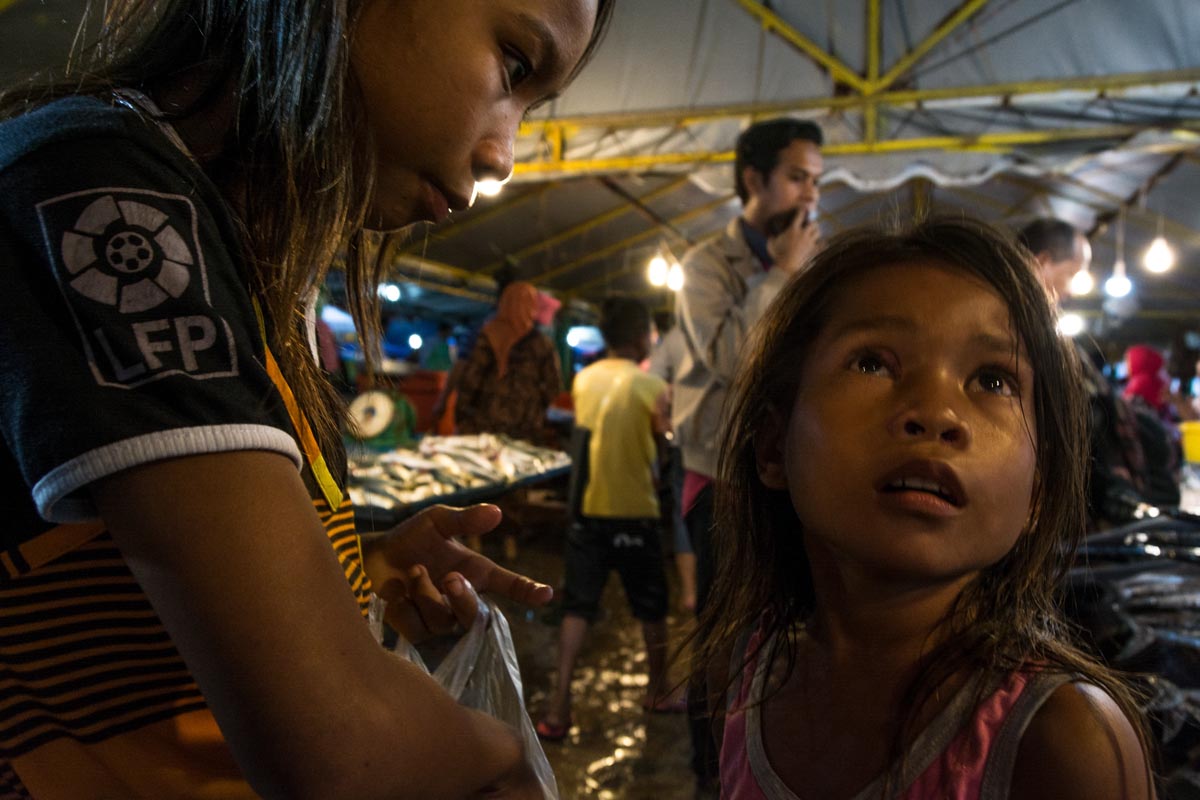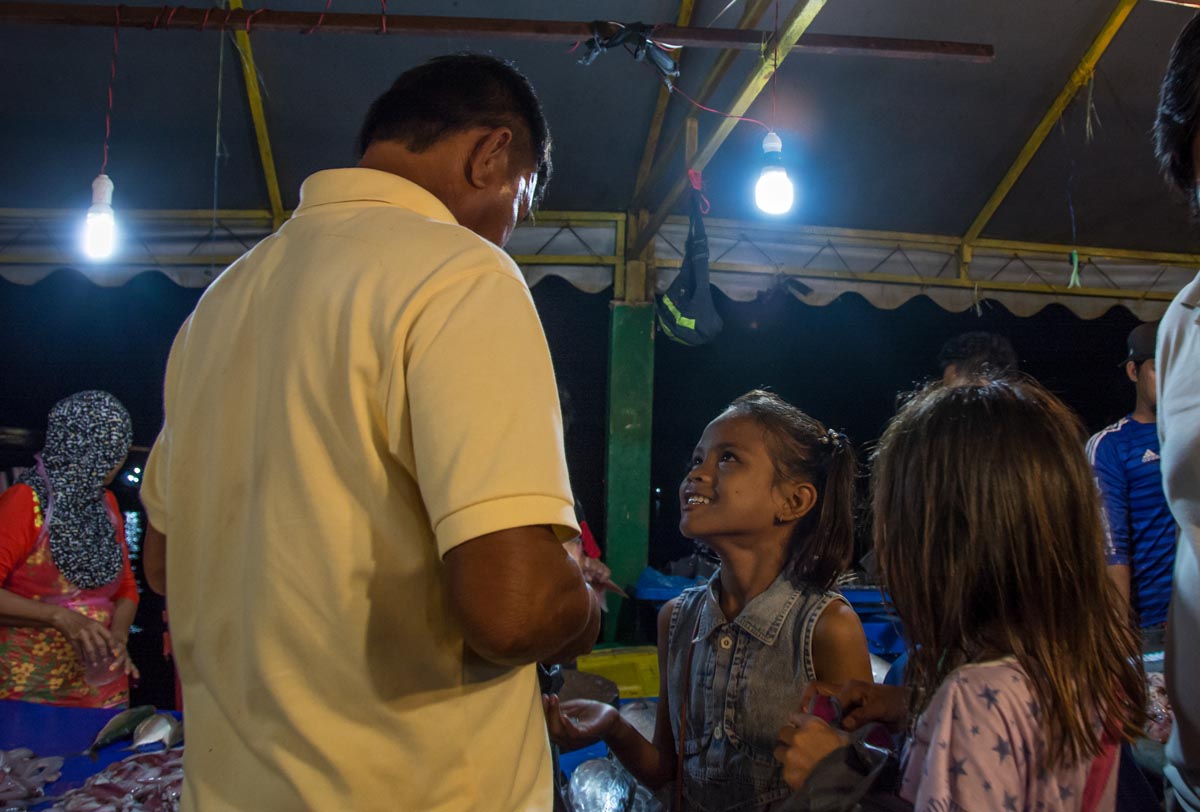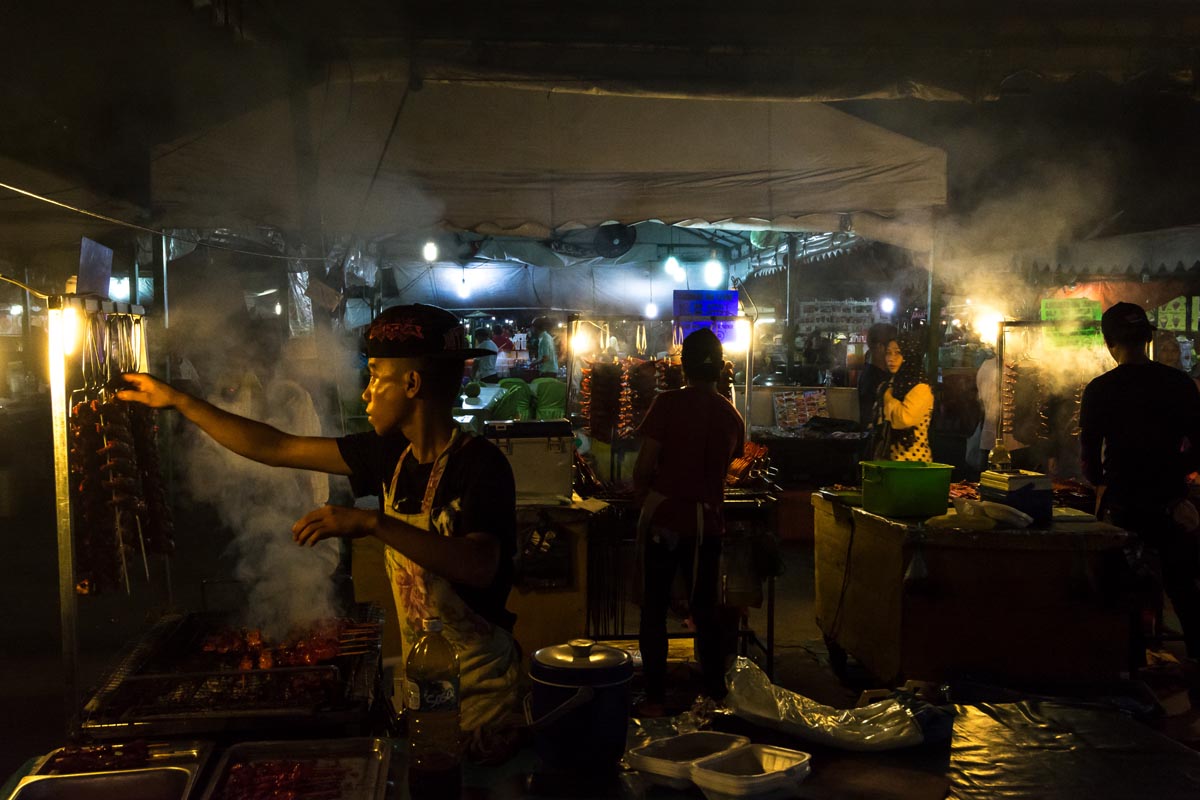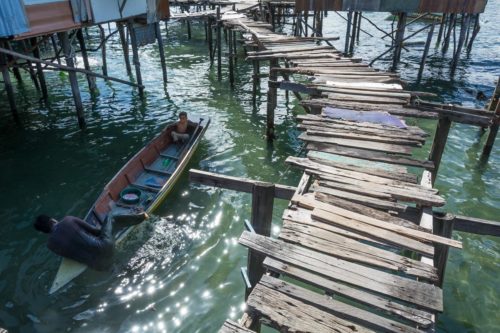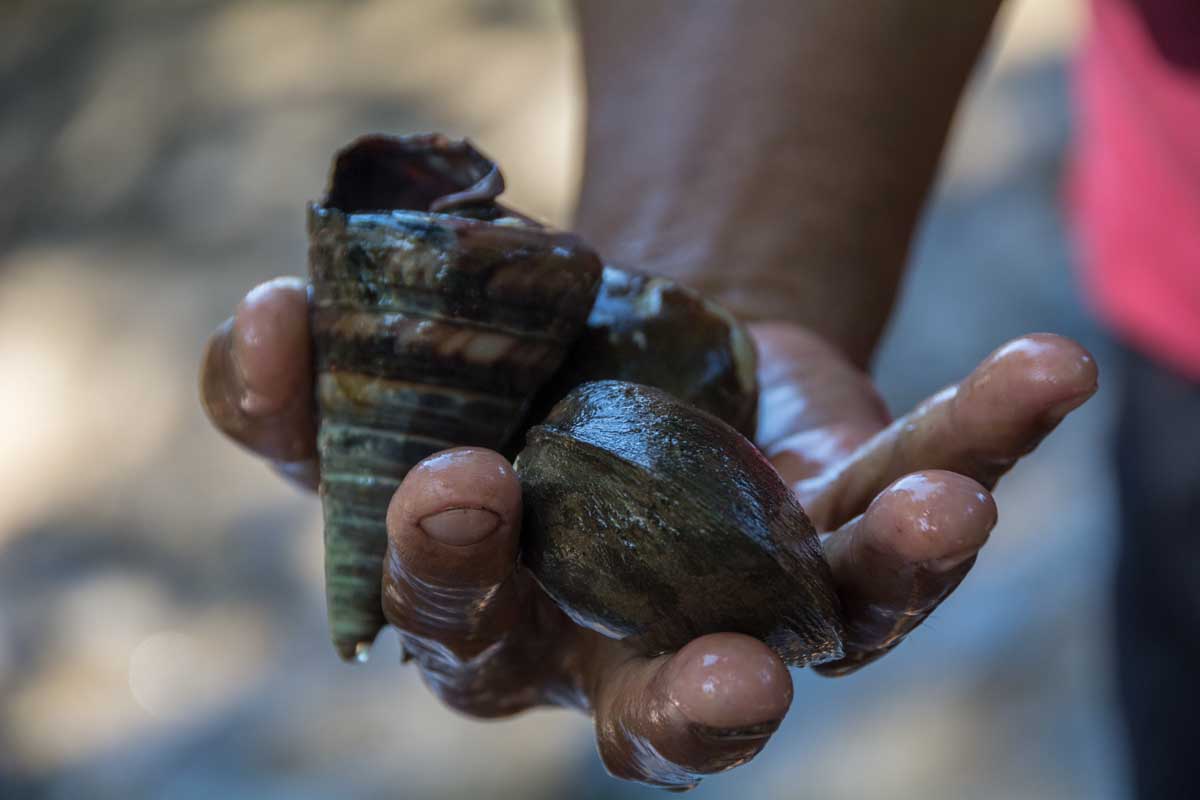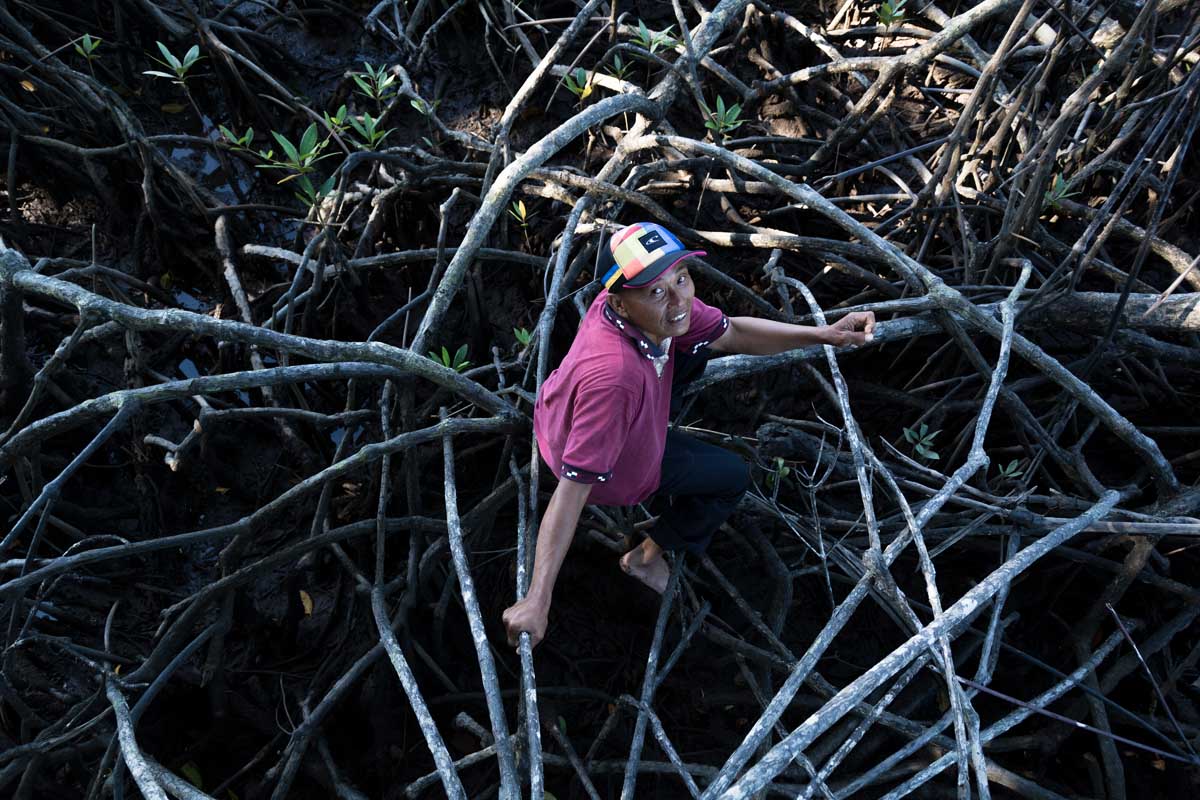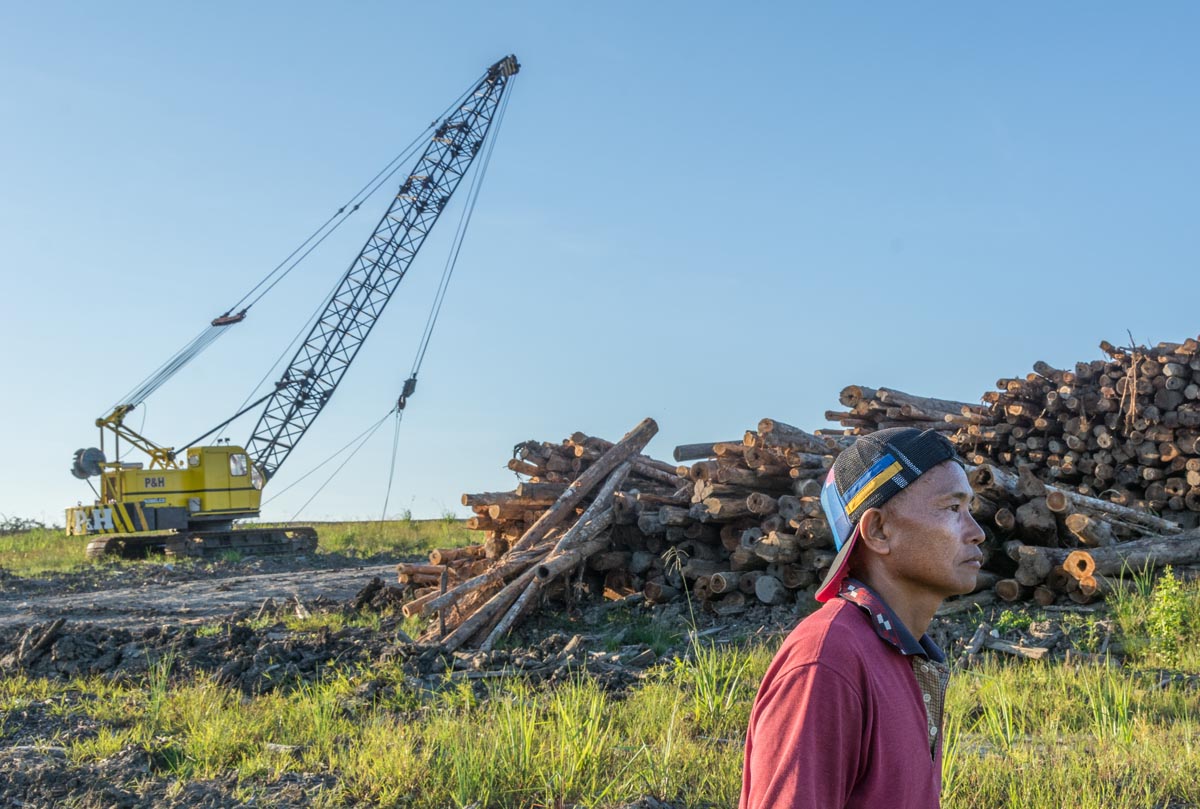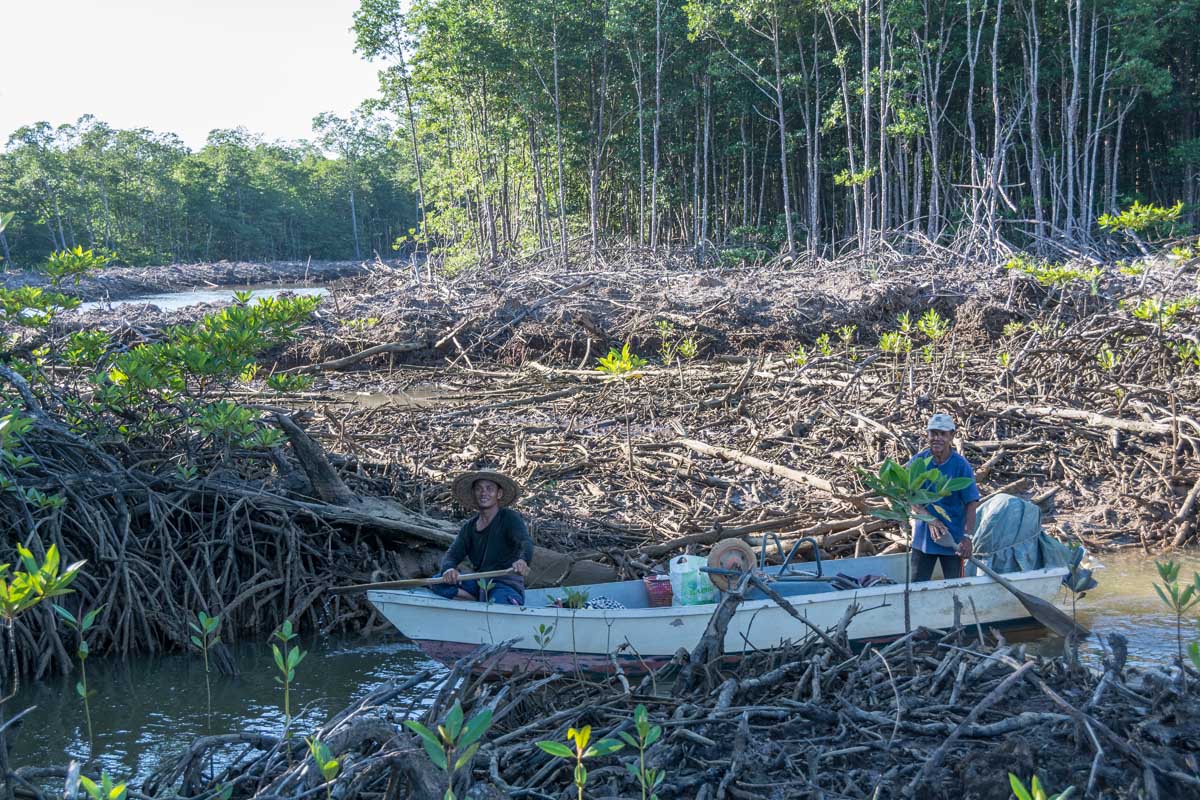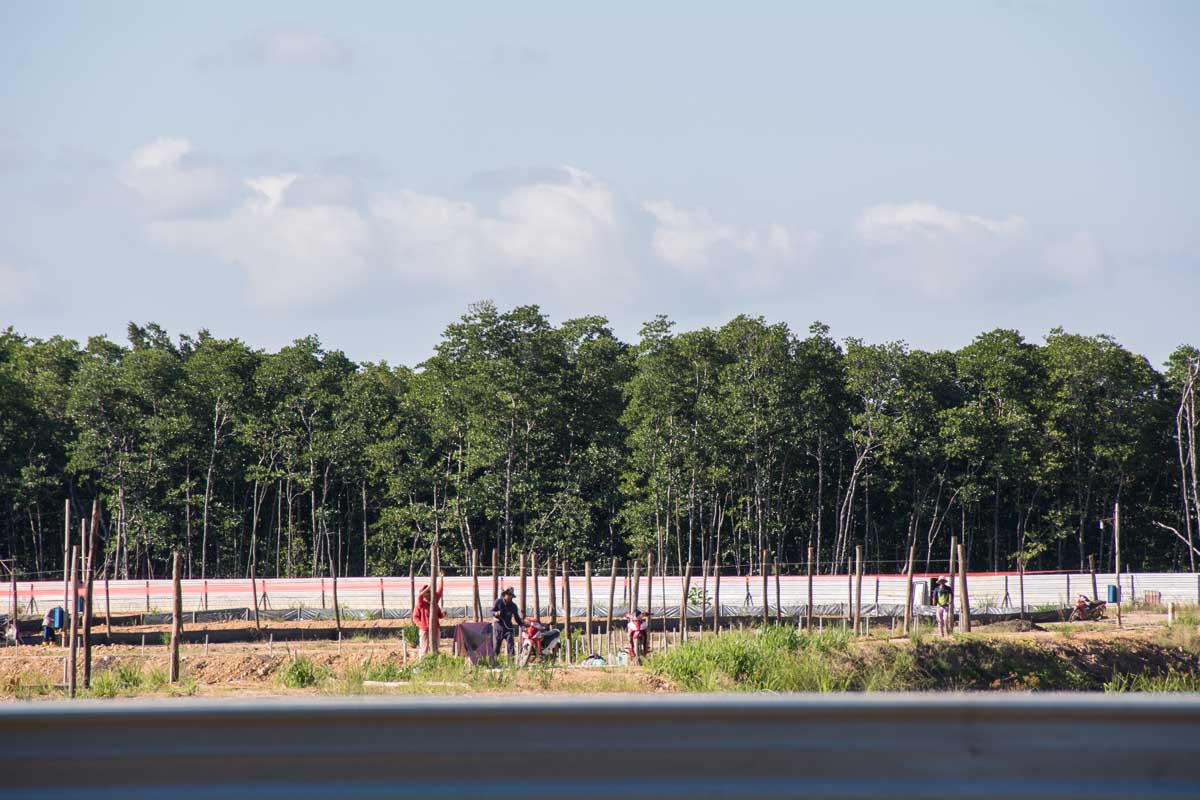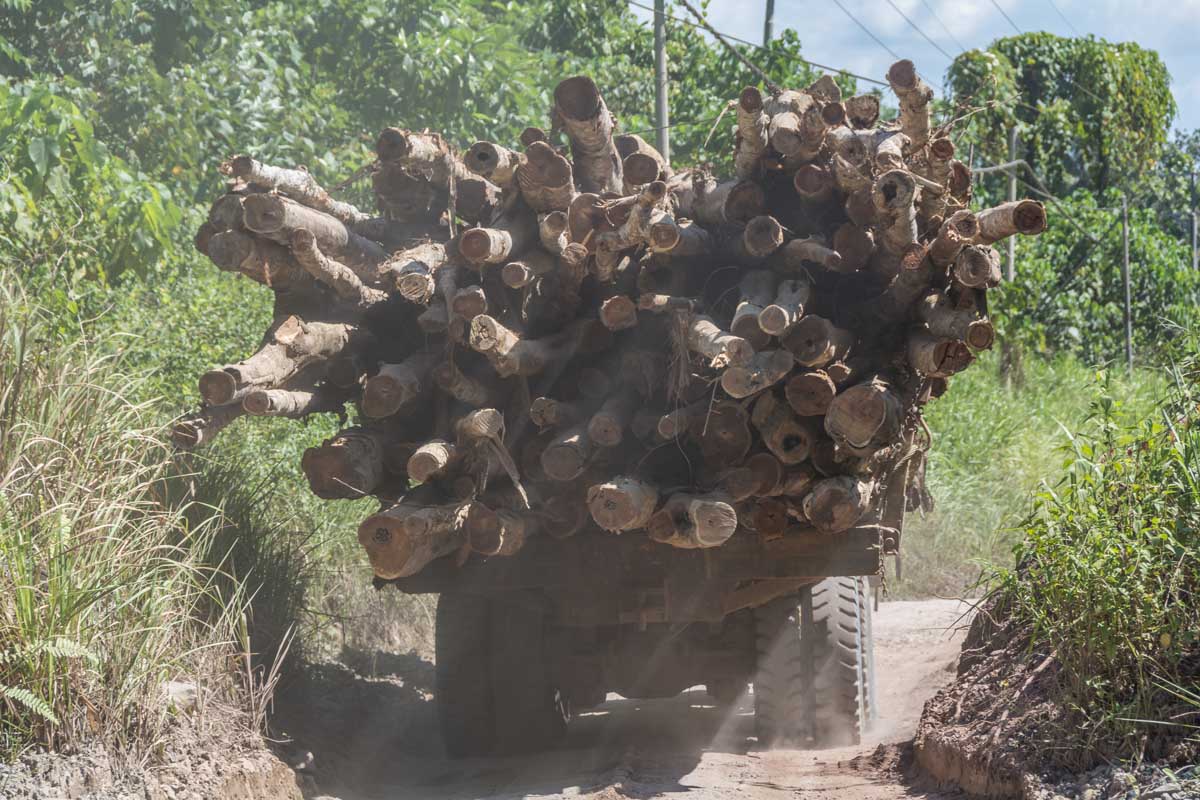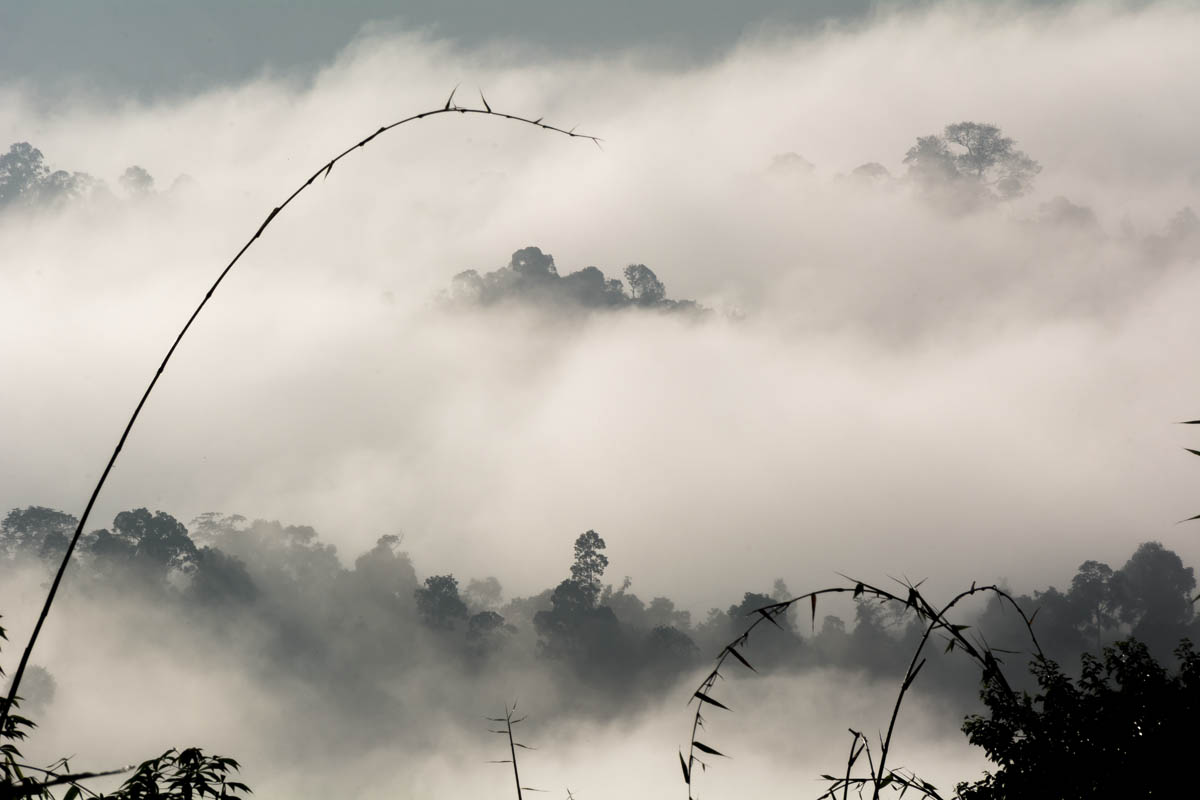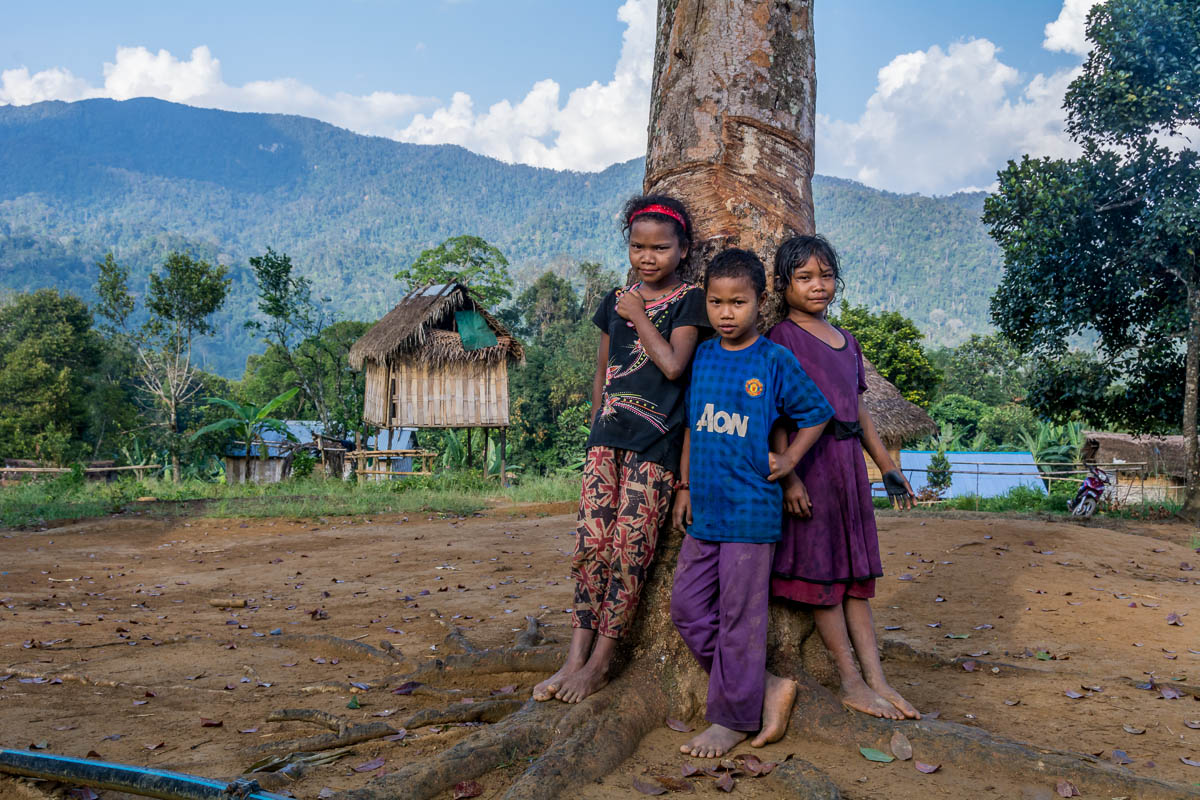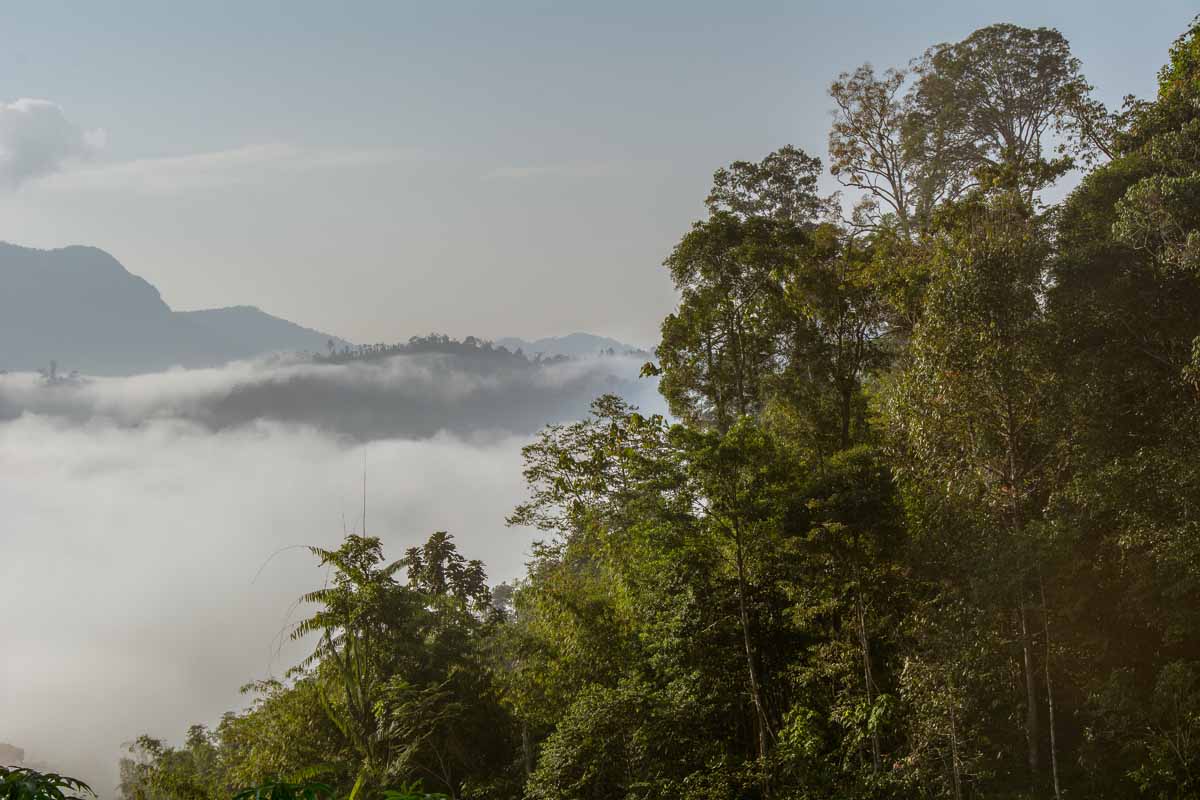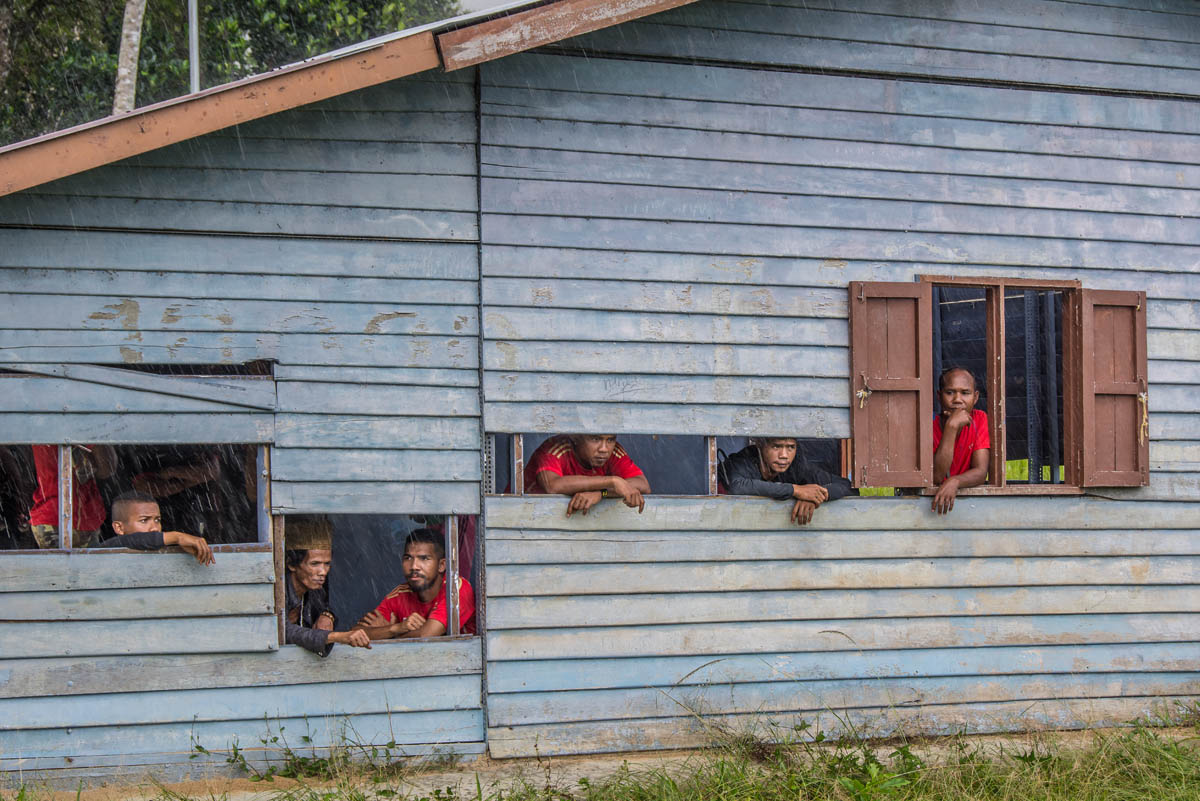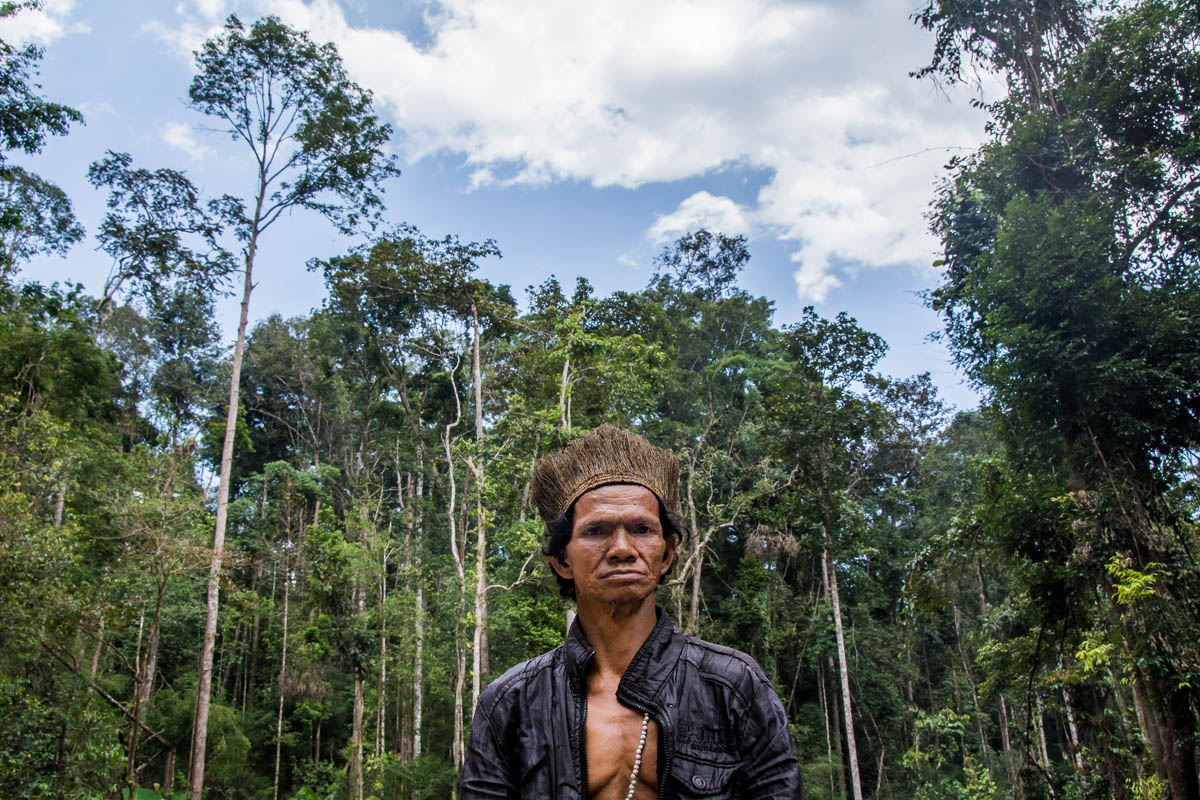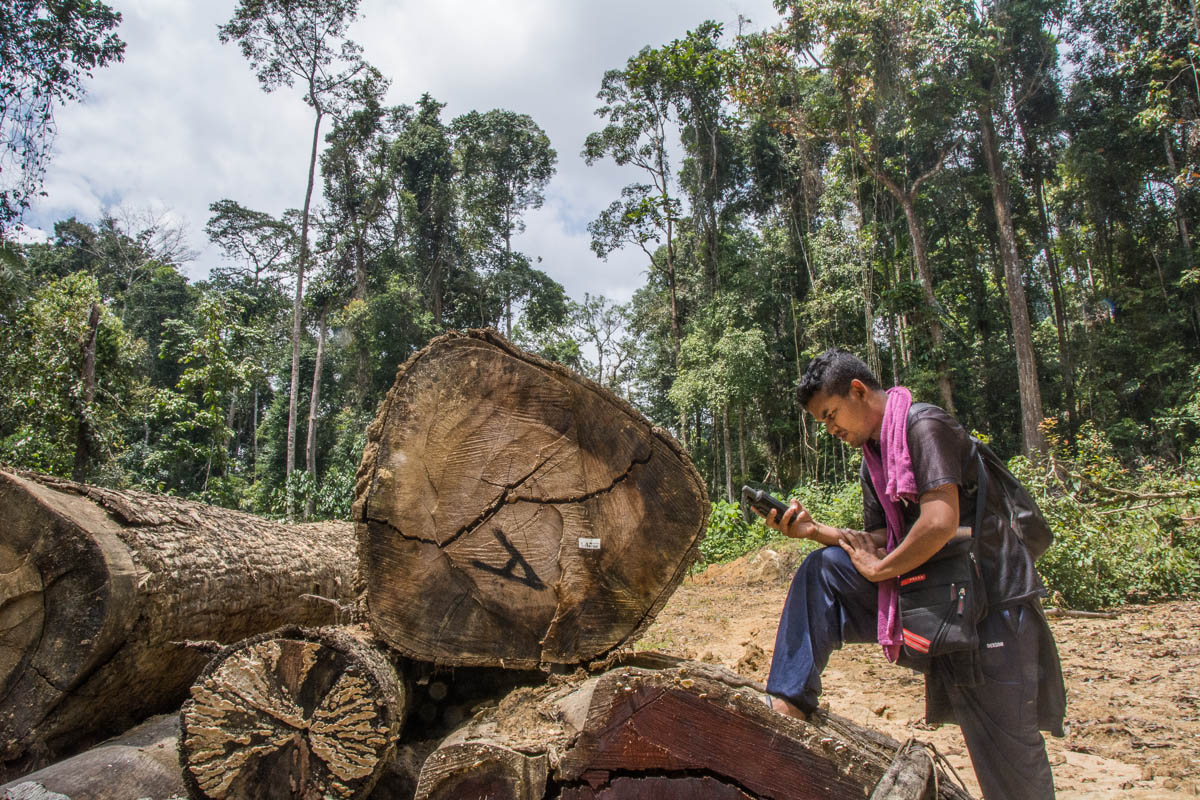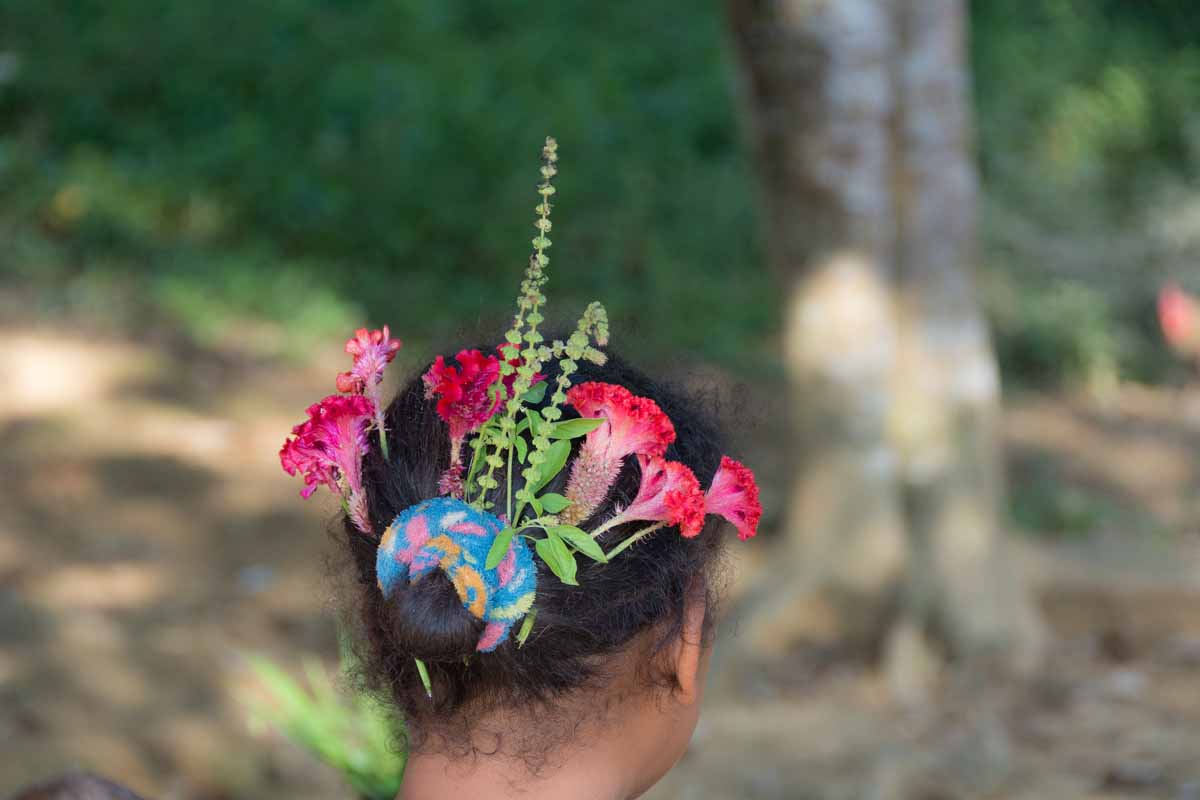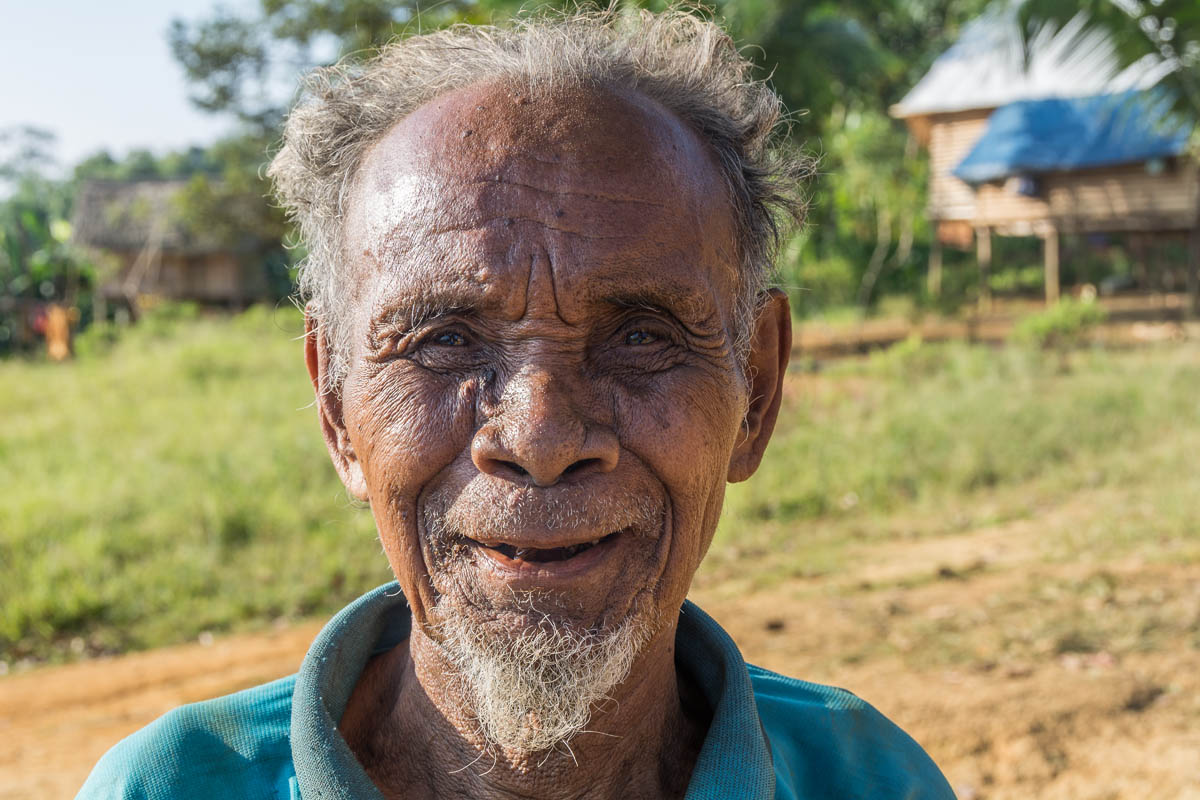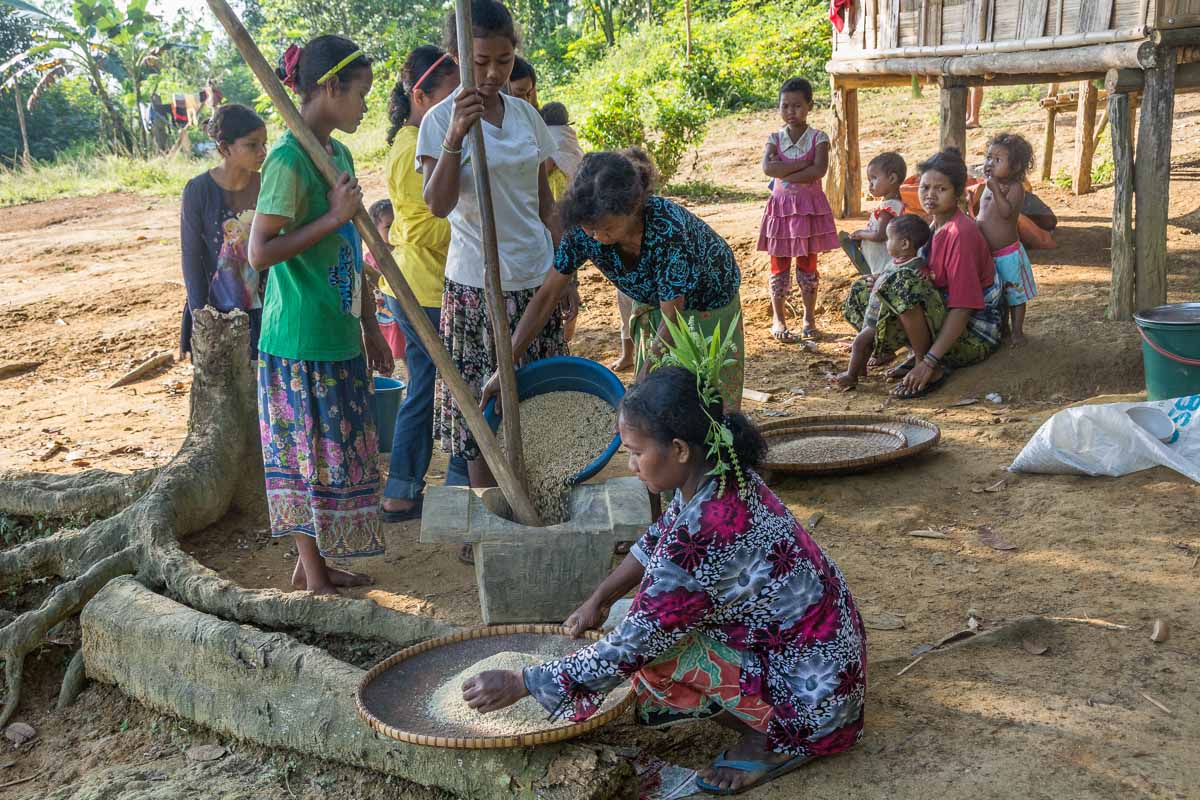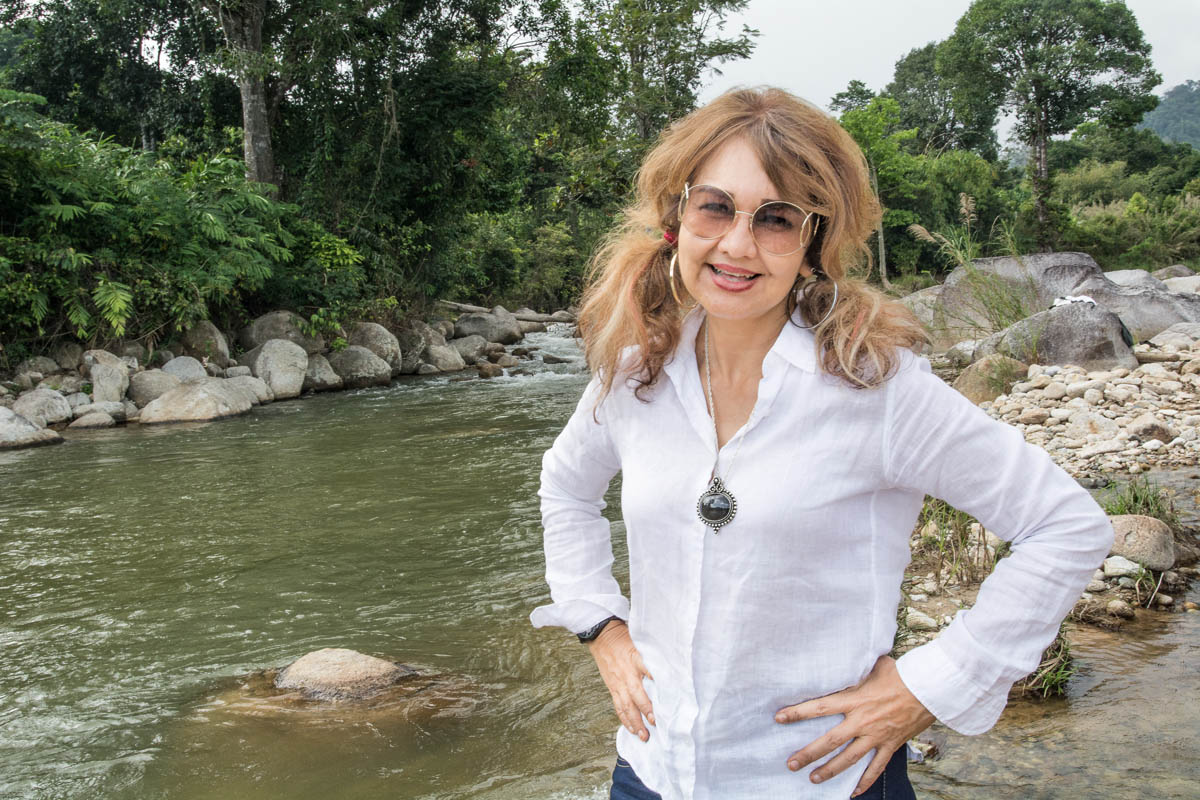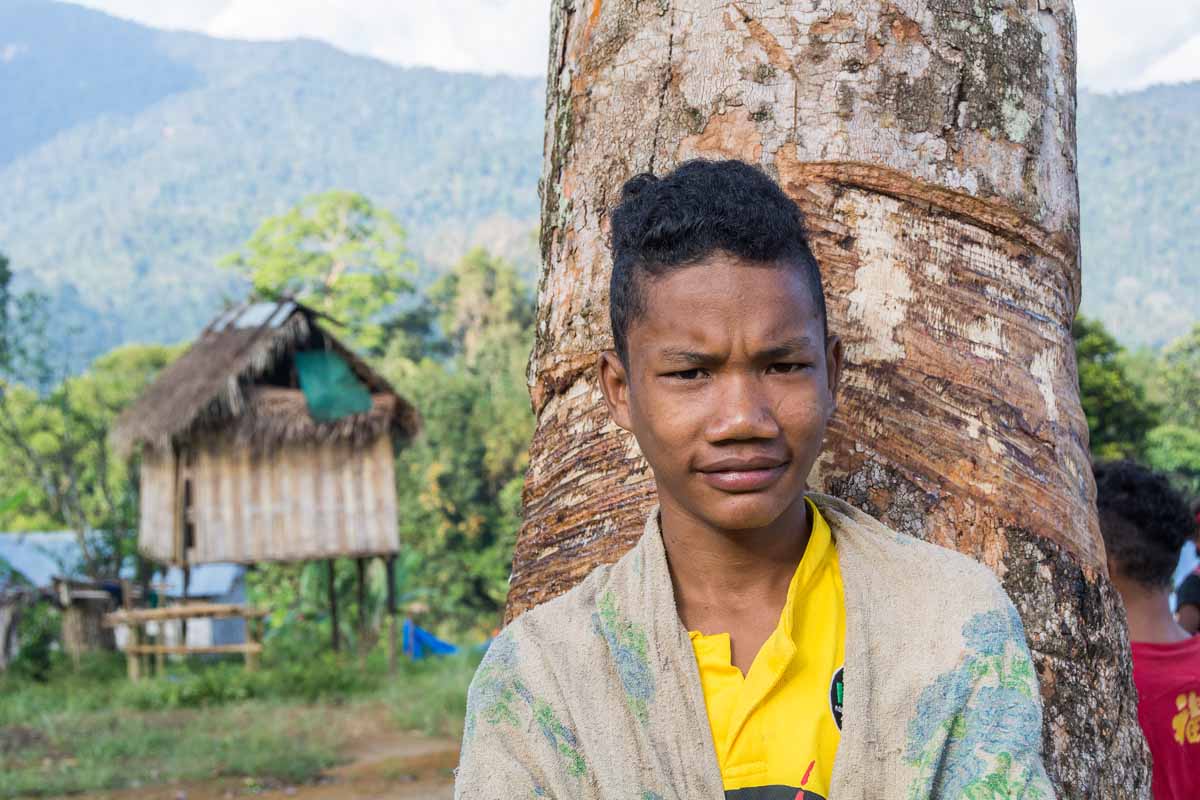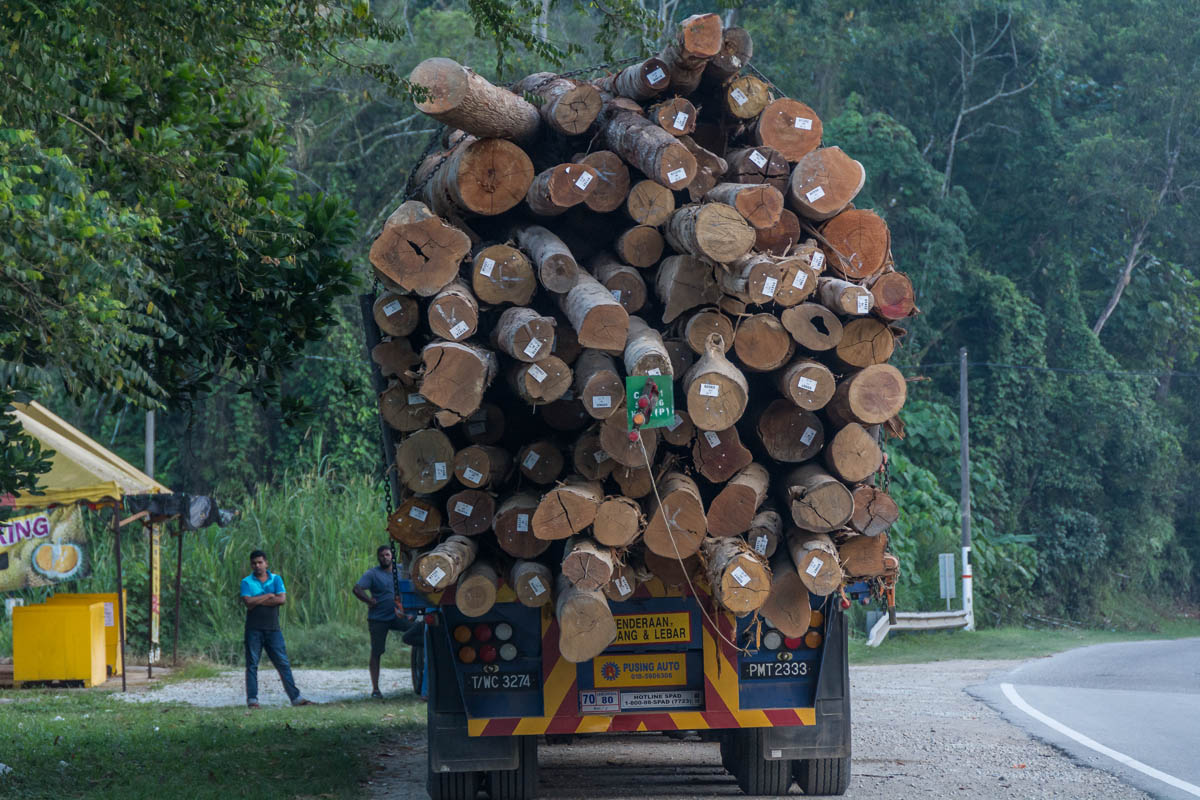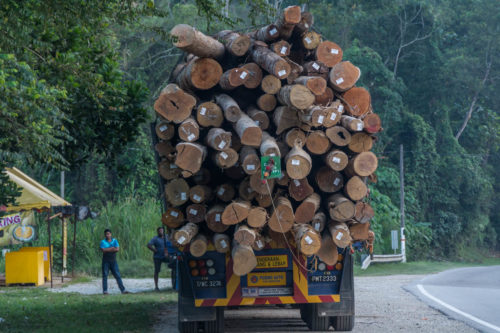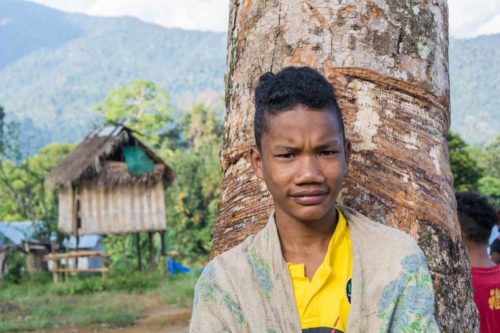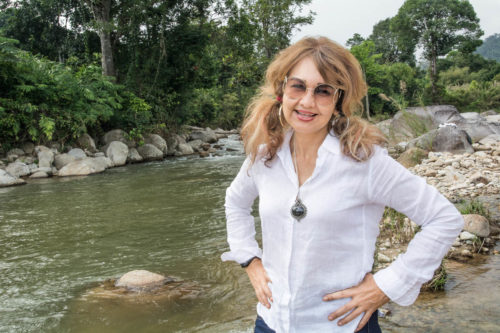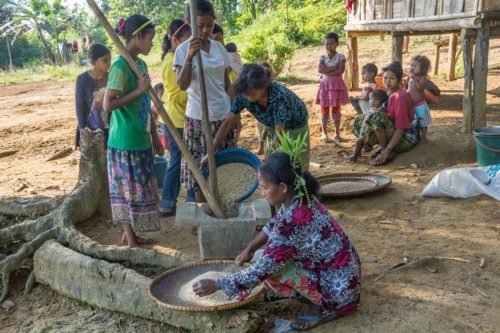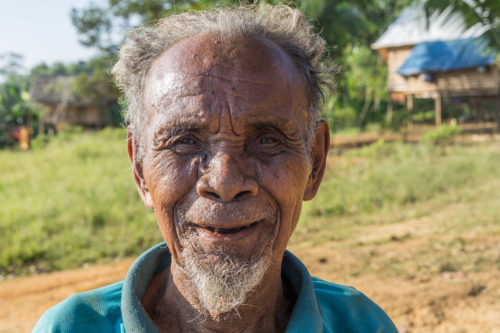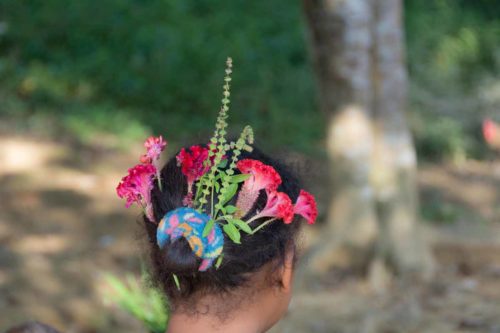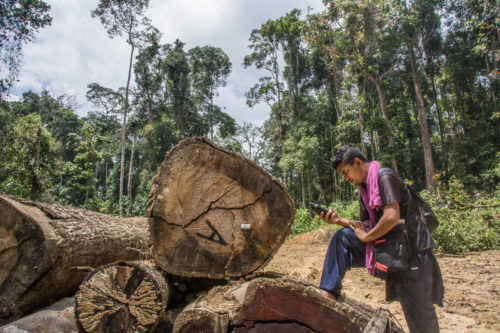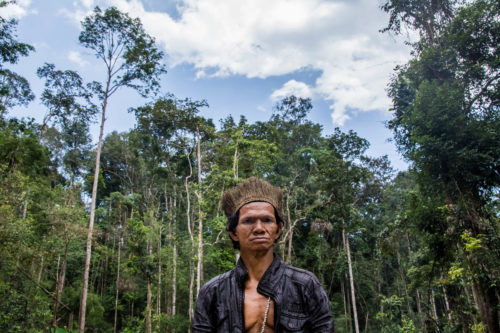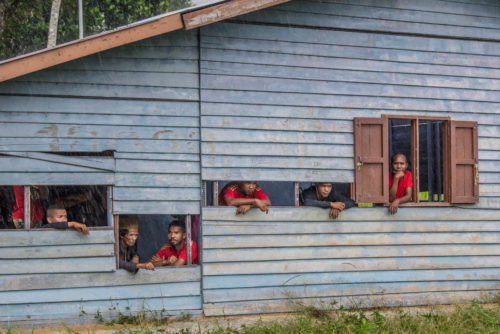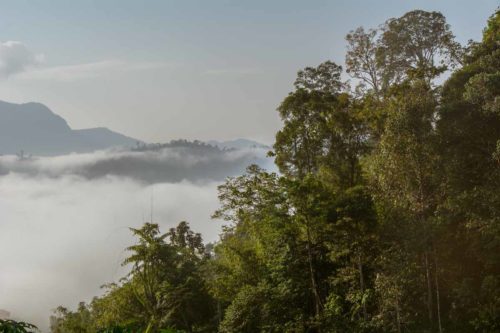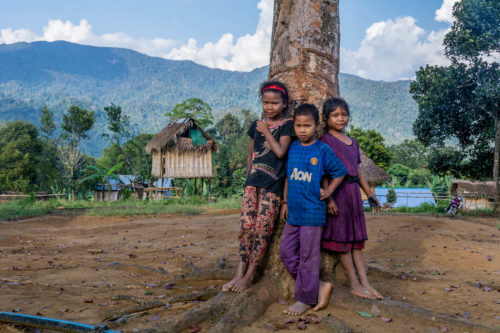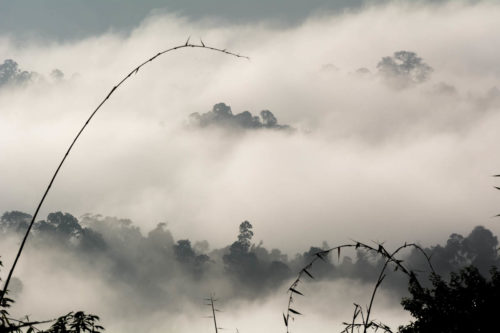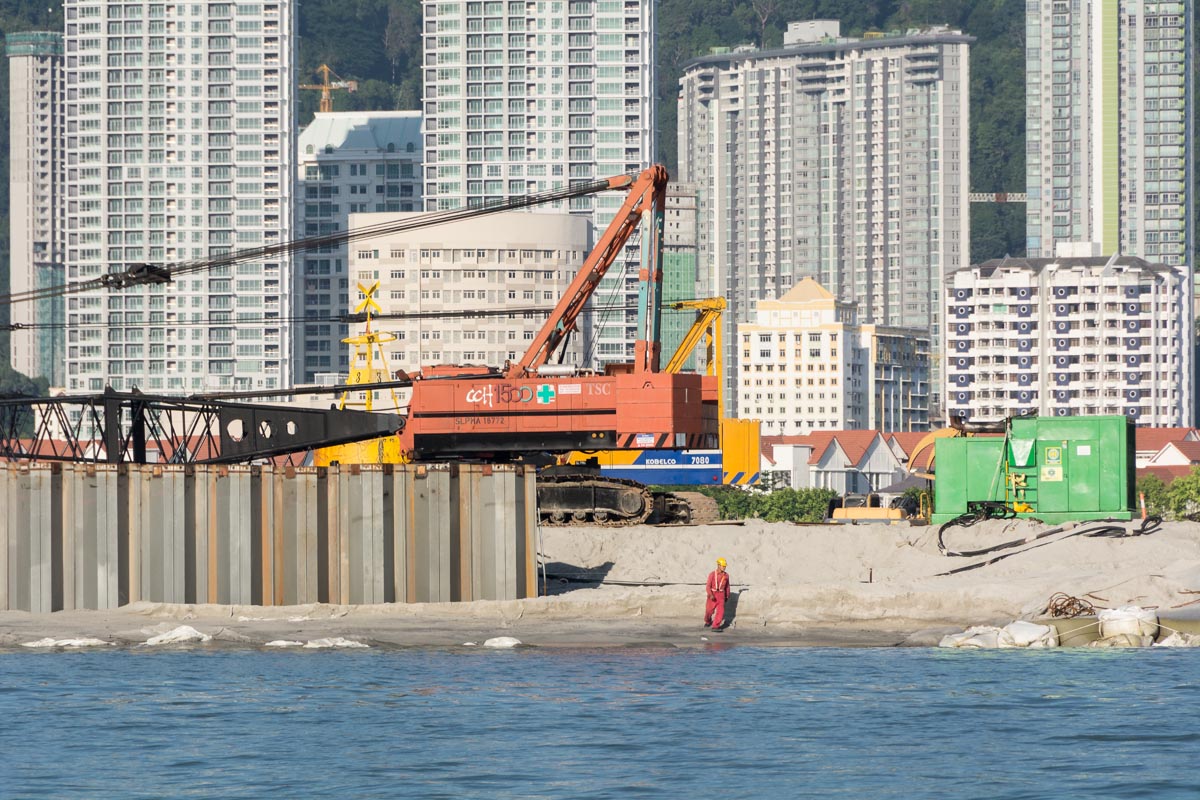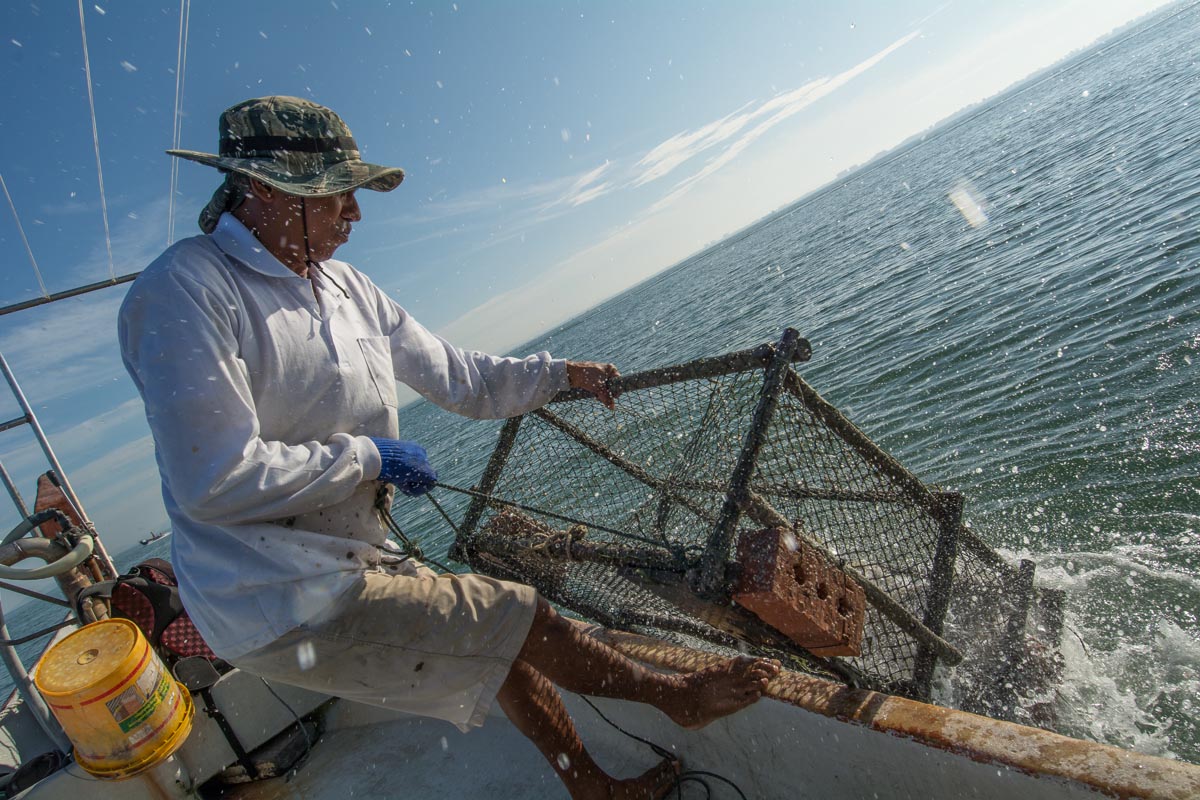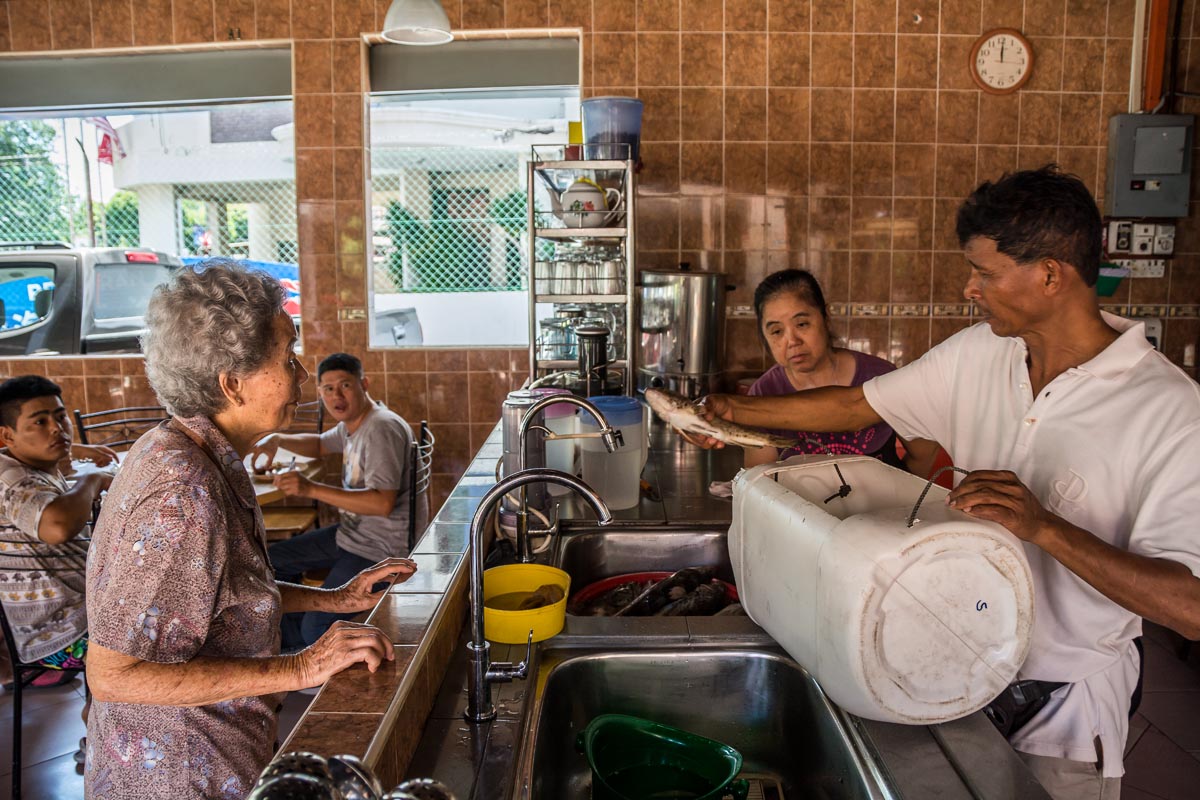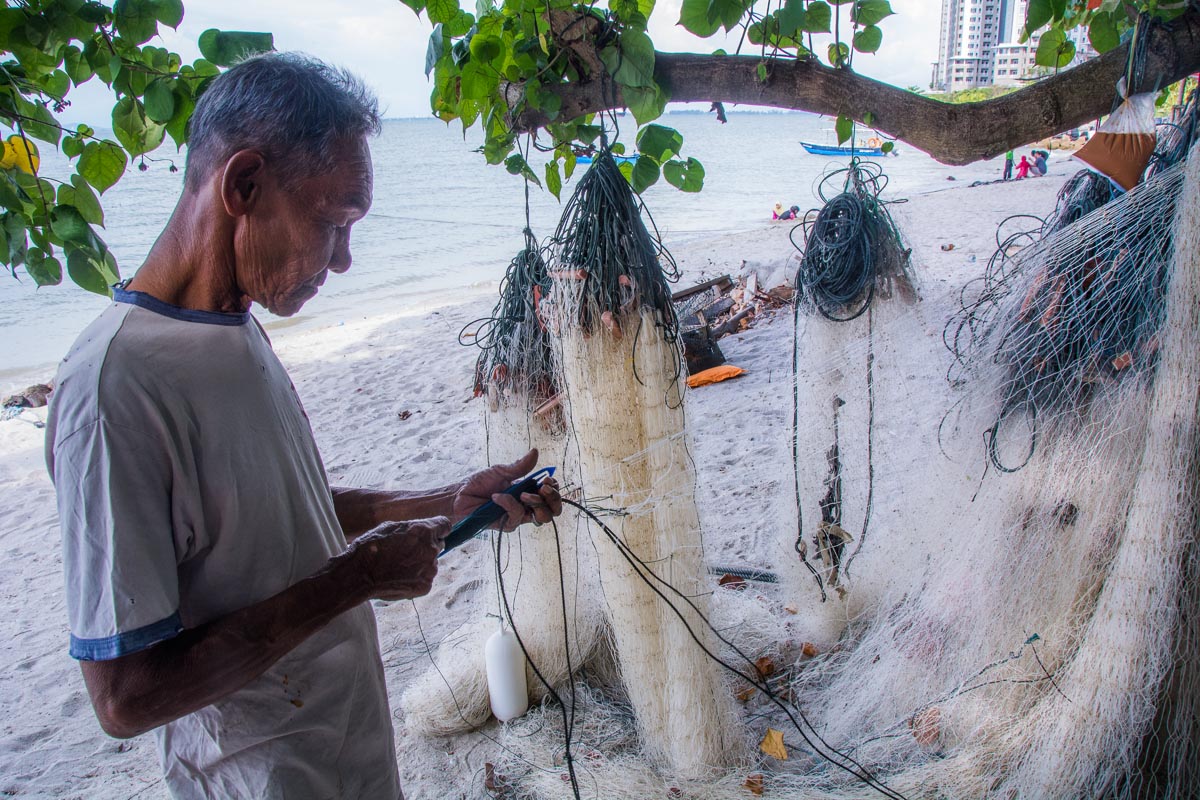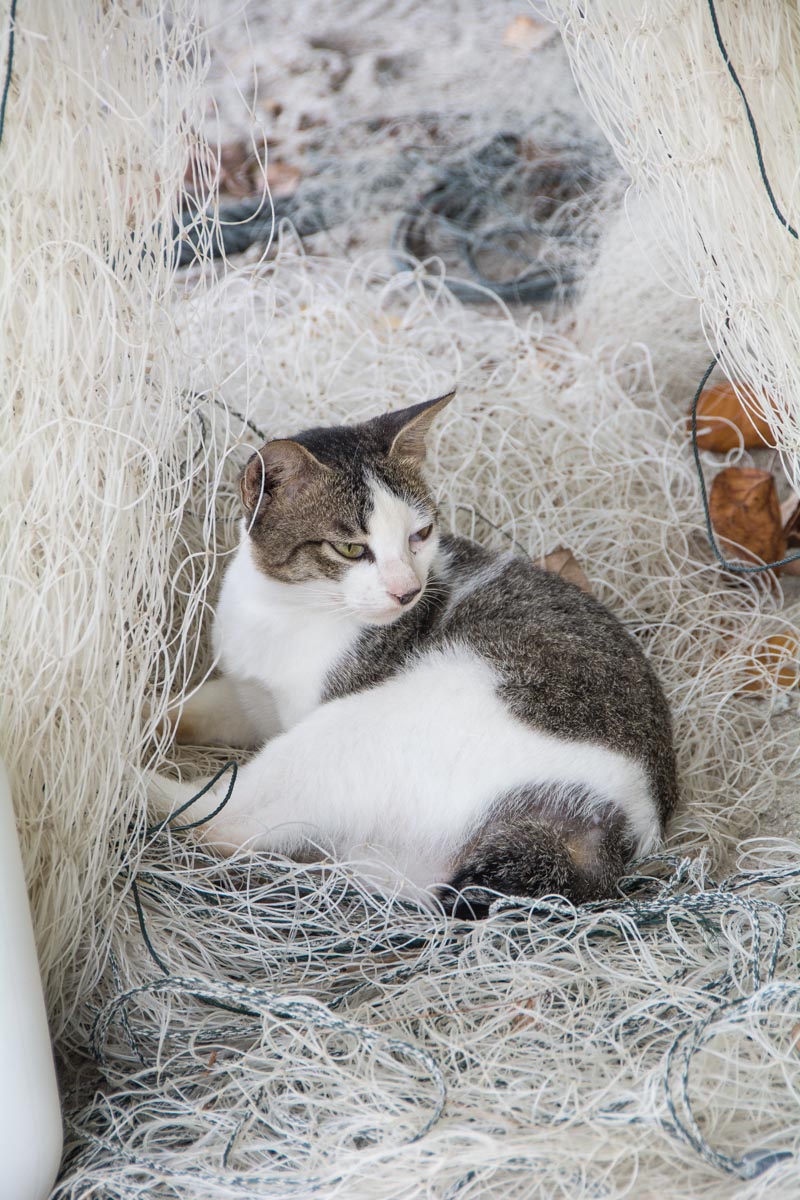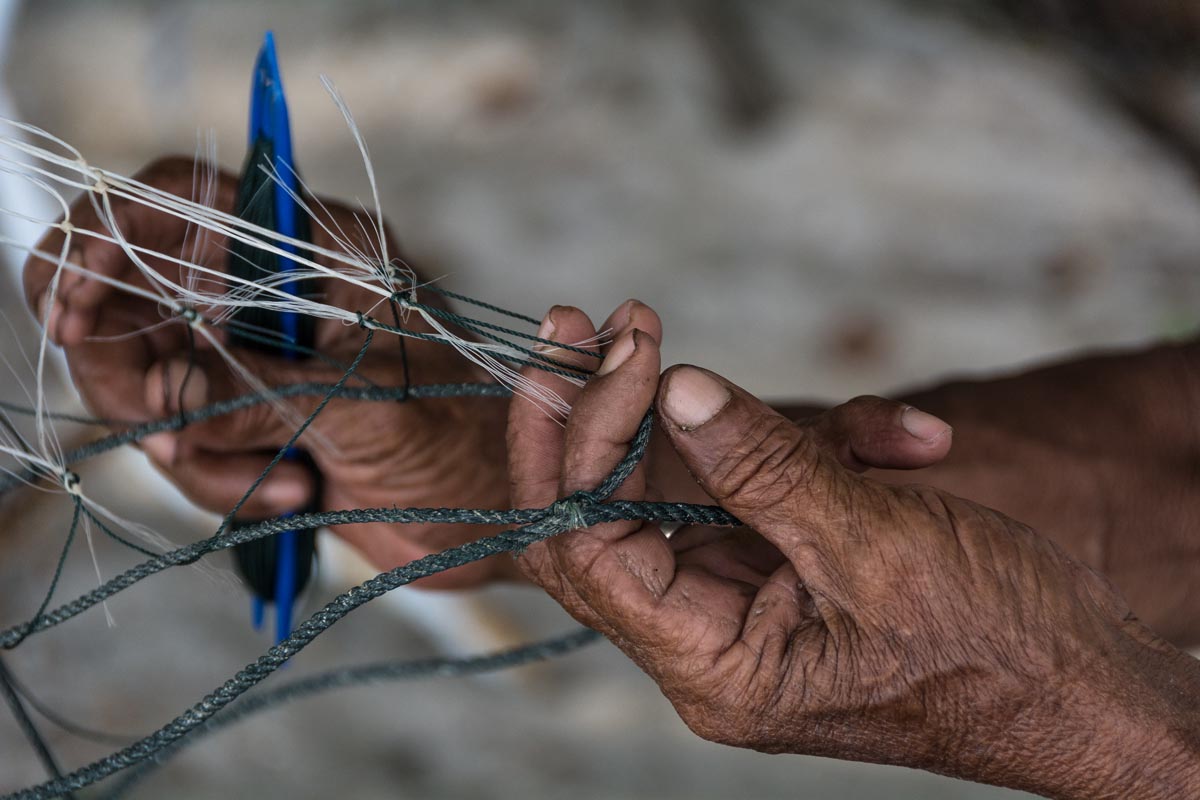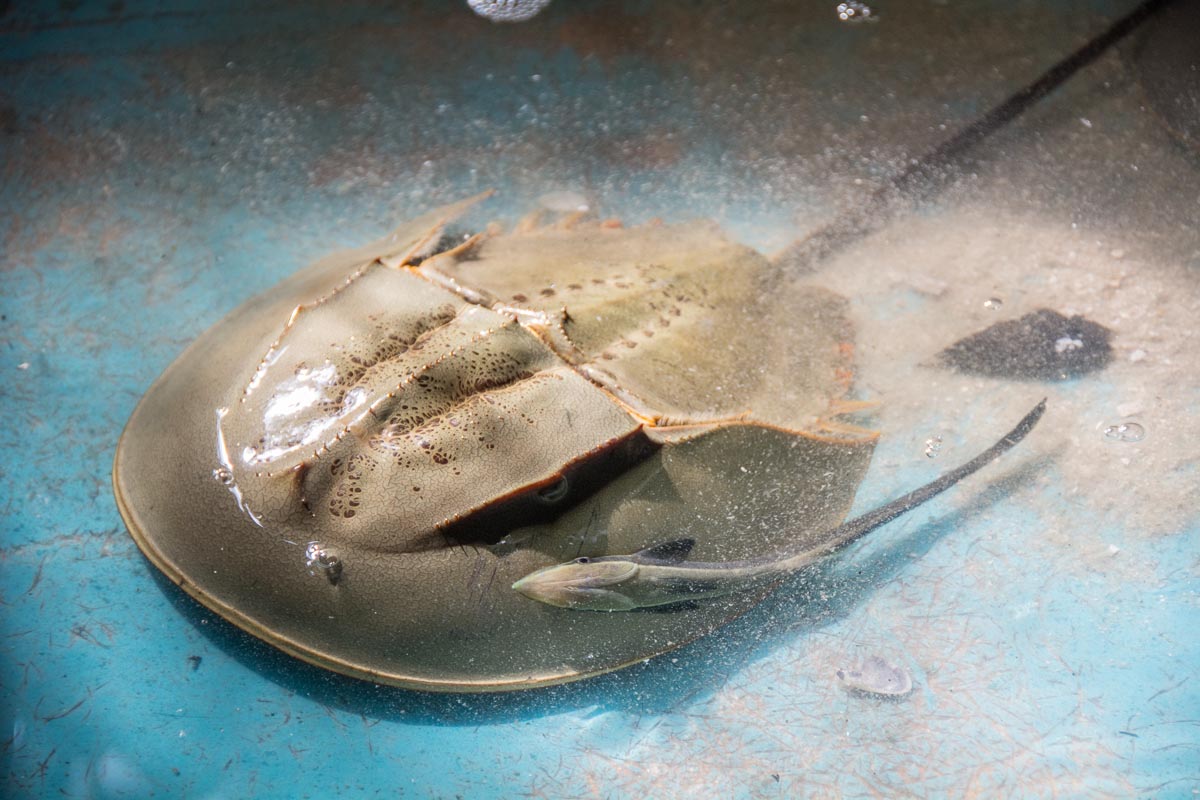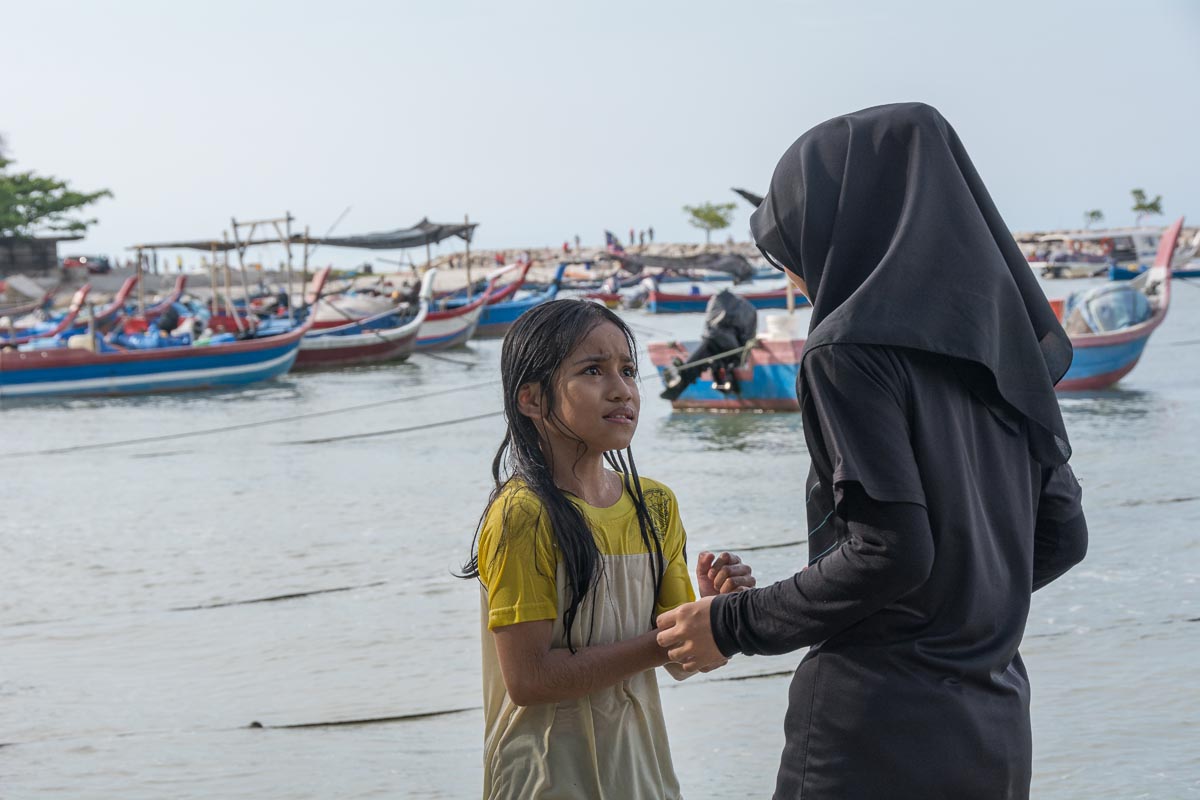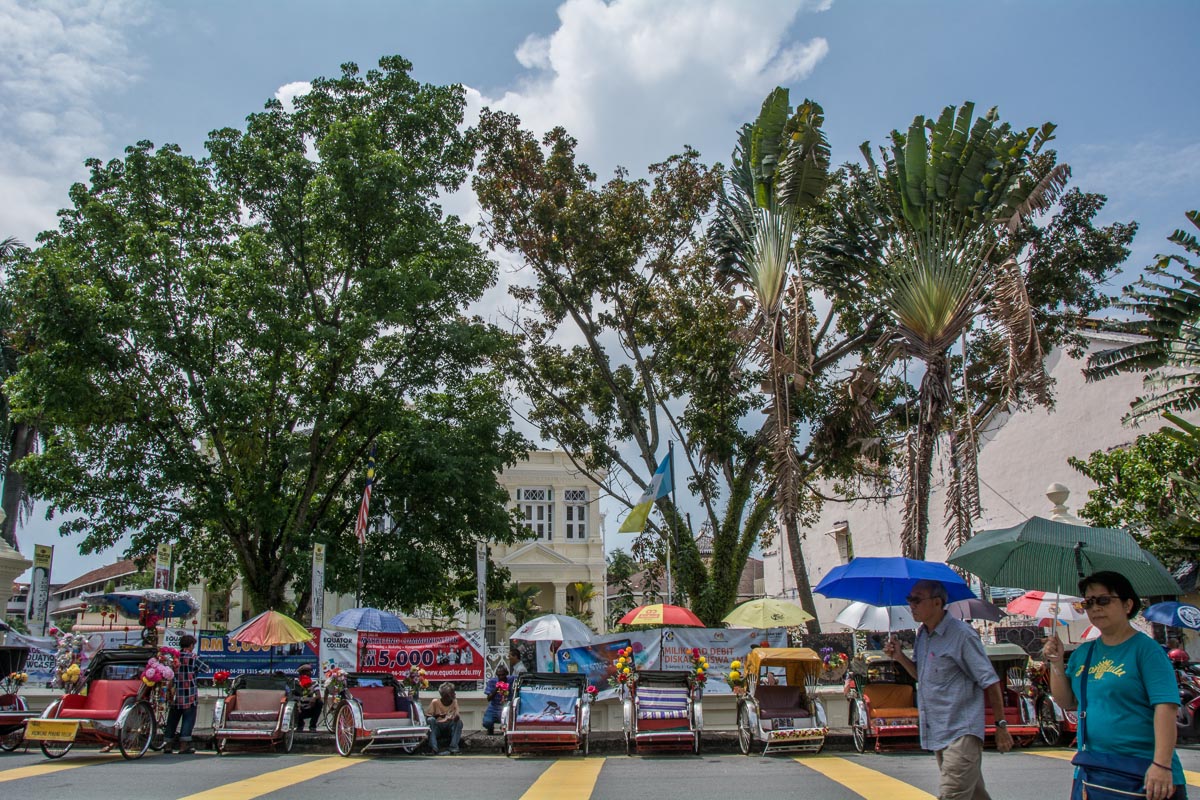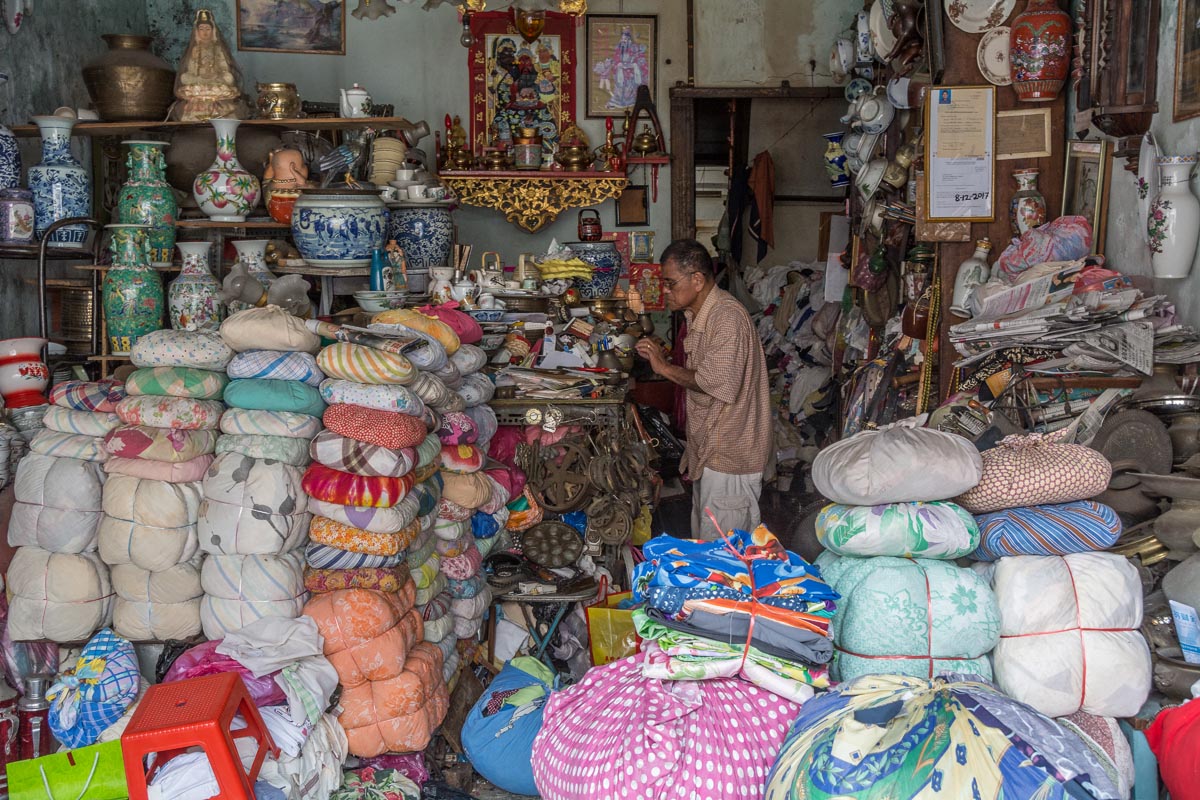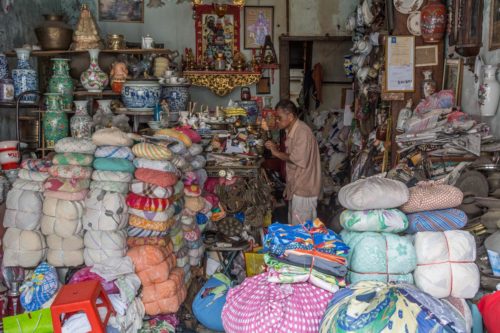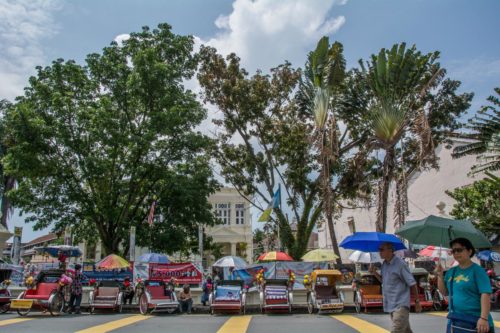Category: Southeast Asia
Stateless children of Borneo
Thousands of undocumented immigrants live in Sabah, East Malaysia on Borneo Island. Some have lived there for many years and have families. Not eligible for official documentation they are stateless people. Lacking official recognition, children cannot attend state school and many end up with no education working in menial jobs. Others are exploited by traffickers. Many are Bajau sea-gypsies, others are immigrants from the Muslim Sulu area of Southern Philippines. Indonesian workers also come across the porous border from Kalimantan seeking work.
Many of the Bajau Laut sea gypsies have now settled in Sabah. Climate change, overfishing and poverty have caused them to give up their nomadic life on the sea in favour of the shanty towns of coastal Sabah. The presence of migrants has been tolerated because many are contributing work in the state. However in recent years a rise in Muslim terrorist activity at tourist resorts around the coast has made the government less tolerant towards the migrants and less inclined to provide residency papers. So these shanty communities remain in limbo, trapped in an insecure situation where they cannot progress.
This story follows children from the shanty villages of Gaya Island, offshore from capital Kota Kinabalu, as they fight, play and hustle for a living in the capital’s busy fish docks and markets.
-
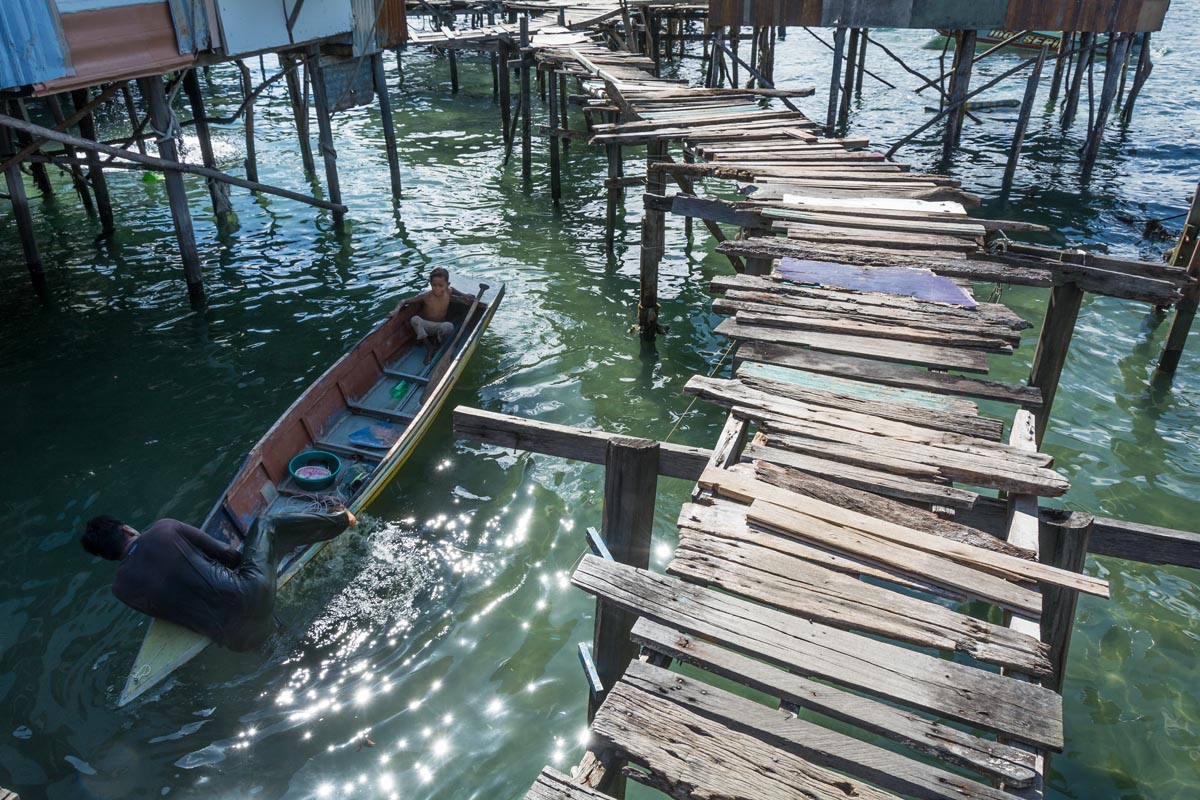 A boatman climbs into his boat beneath a shanty village built over the water offshore from Gaya island. Thousands of undocumented immigrants live in Sabah, East Malaysia on Borneo Island. Some of them have lived there for many years and have children. Not eligible for official documentation they are stateless...
A boatman climbs into his boat beneath a shanty village built over the water offshore from Gaya island. Thousands of undocumented immigrants live in Sabah, East Malaysia on Borneo Island. Some of them have lived there for many years and have children. Not eligible for official documentation they are stateless... -
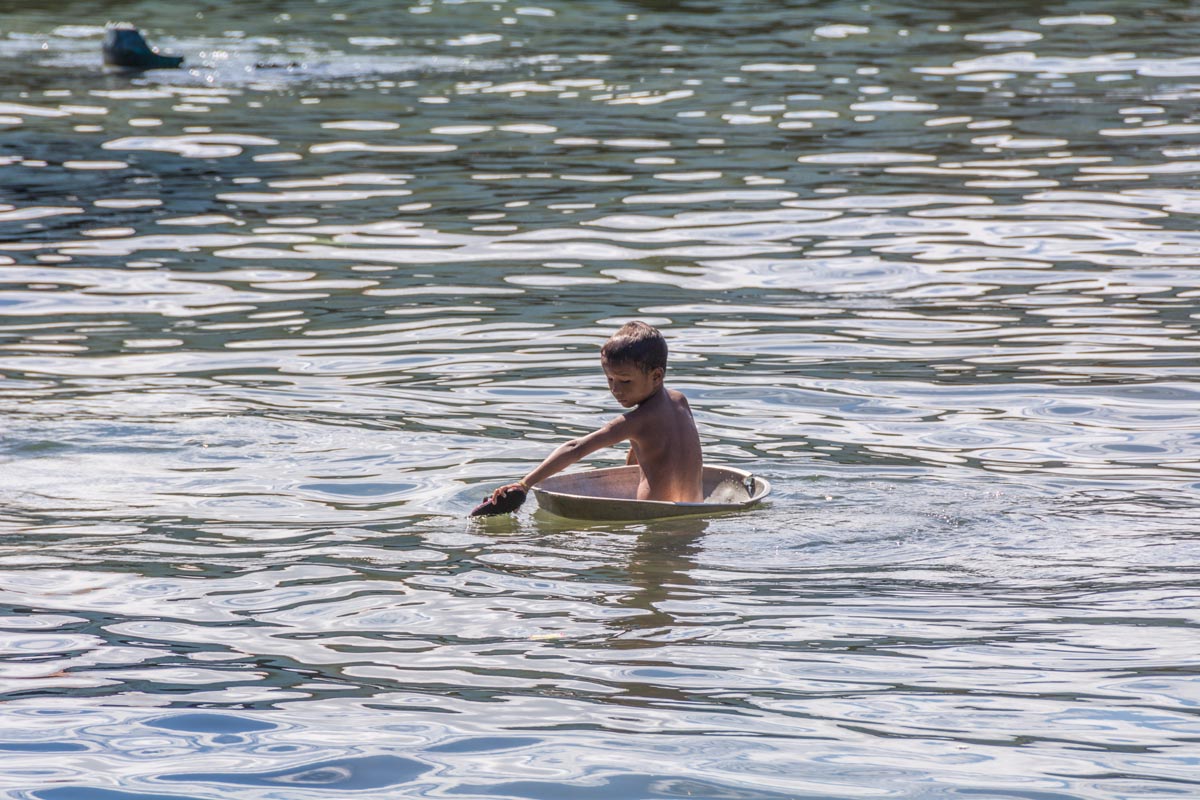 A boy paddles using his shoes in an upturned aluminium washing-up bowl he is using as a boat offshore from Gaya Isand, Sabah, East-Malaysia. He is one of thousands of stateless people on Gaya island, mainly from the Bajau Laut community of sea-gypsies and immigrants from the Sulu area of...
A boy paddles using his shoes in an upturned aluminium washing-up bowl he is using as a boat offshore from Gaya Isand, Sabah, East-Malaysia. He is one of thousands of stateless people on Gaya island, mainly from the Bajau Laut community of sea-gypsies and immigrants from the Sulu area of... -
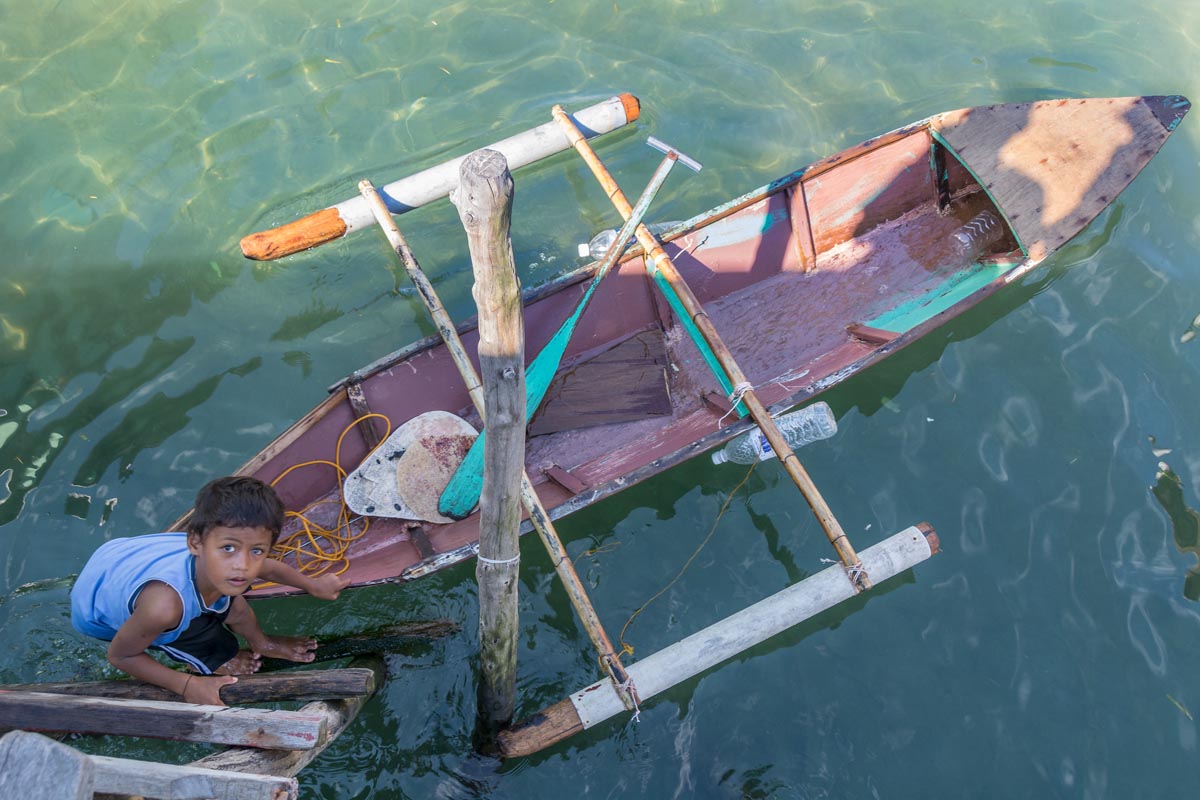 Thousands of undocumented immigrants live in Sabah, East Malaysia on Borneo Island. Some of them have lived there for many years and have children. Not eligible for official documentation they are stateless people. Lacking official recognition, children cannot attend state school and many end up with no education working in...
Thousands of undocumented immigrants live in Sabah, East Malaysia on Borneo Island. Some of them have lived there for many years and have children. Not eligible for official documentation they are stateless people. Lacking official recognition, children cannot attend state school and many end up with no education working in... -
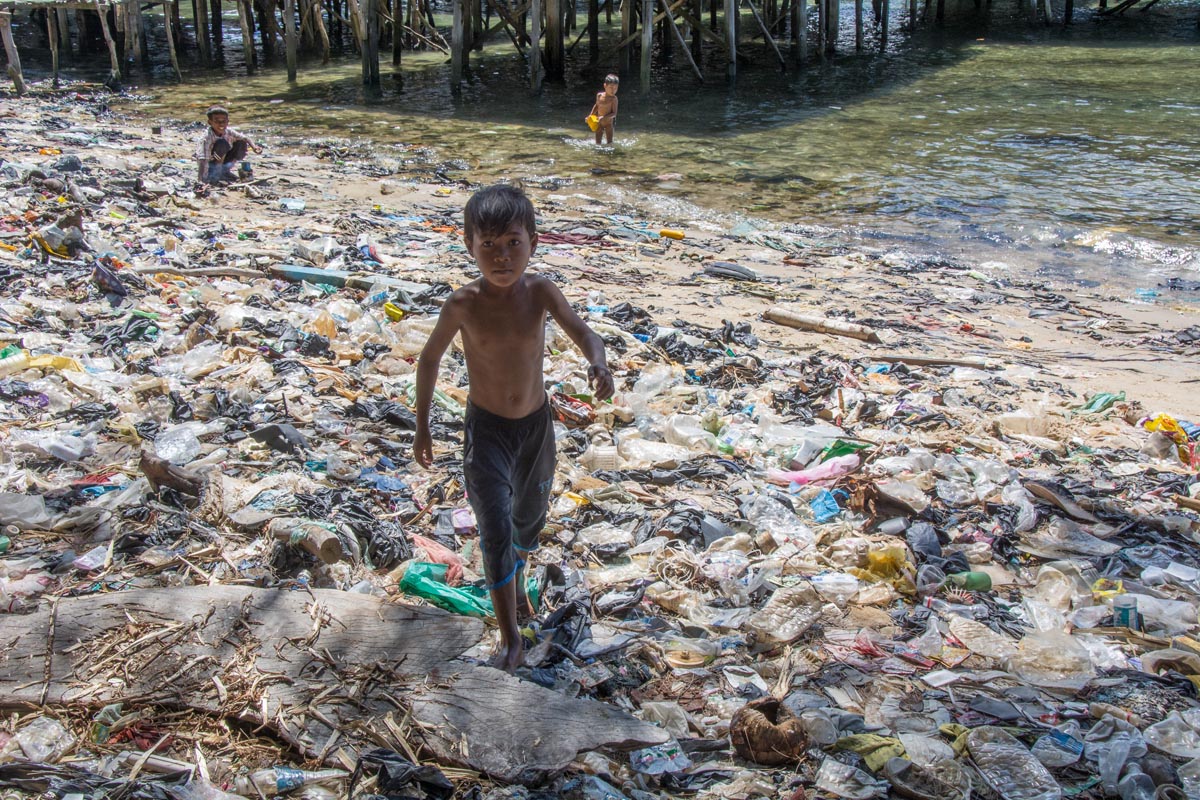 A boy walks through discarded garbage covering the beach at his shanty village of houses on stilts roughly built over the water on Gaya Island, offshore from the State capital of Kota Kinabalu, Sabah, East Malaysia. Like thousands of others, he has no formal immigration status and is considered ‘stateless’....
A boy walks through discarded garbage covering the beach at his shanty village of houses on stilts roughly built over the water on Gaya Island, offshore from the State capital of Kota Kinabalu, Sabah, East Malaysia. Like thousands of others, he has no formal immigration status and is considered ‘stateless’.... -
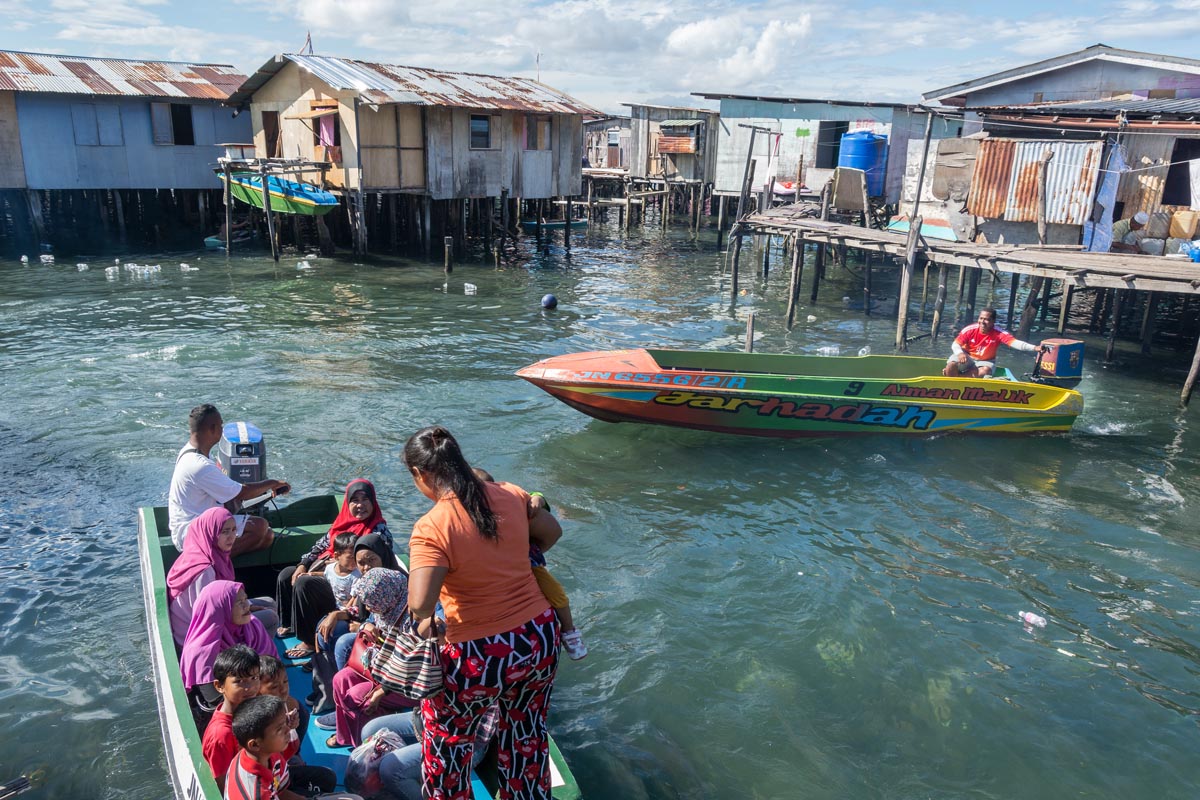 Thousands of undocumented immigrants live in Sabah, East Malaysia on Borneo Island. Some of them have lived there for many years and have children. Not eligible for official documentation they are stateless people. Lacking official recognition, children cannot attend state school and many end up with no education working in...
Thousands of undocumented immigrants live in Sabah, East Malaysia on Borneo Island. Some of them have lived there for many years and have children. Not eligible for official documentation they are stateless people. Lacking official recognition, children cannot attend state school and many end up with no education working in... -
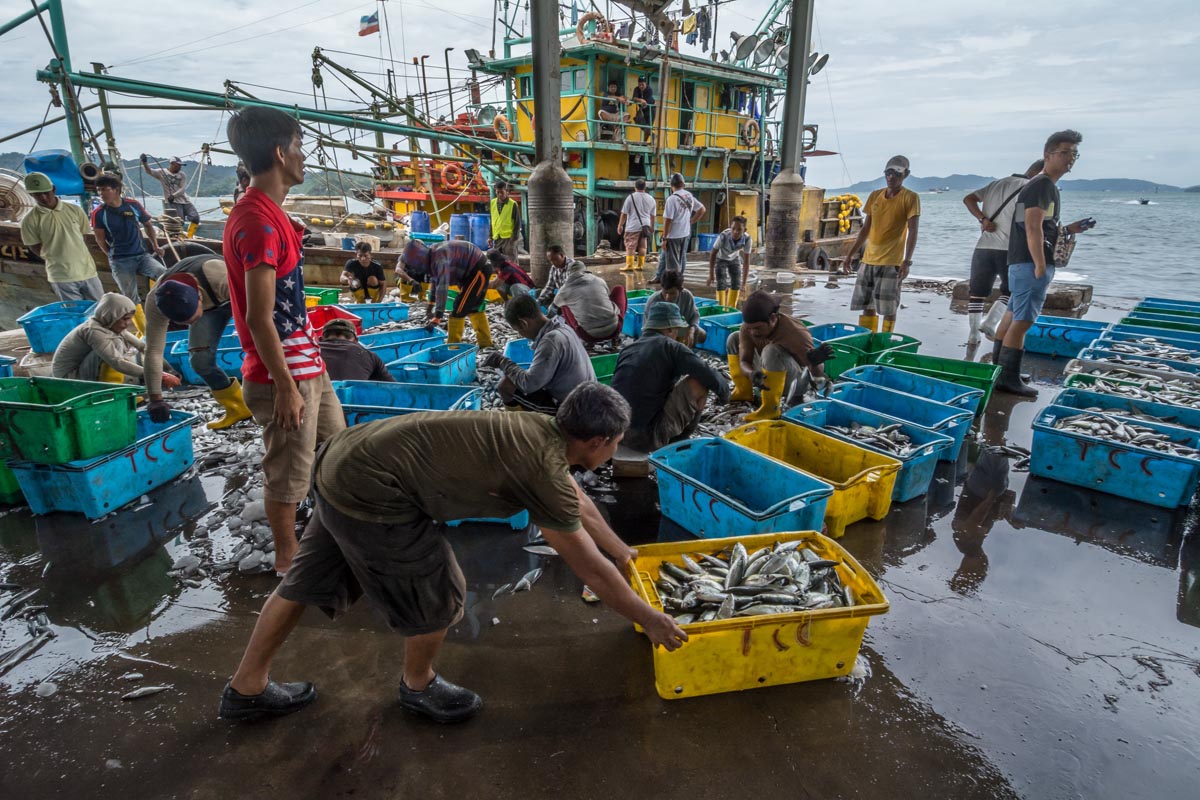 The Filipino fish docks in Kota Kinabalu are a hive of activity where fish are landed from Filipino trawlers, many of which have been out to sea for weeks at a time. The fishermen are among thousands of undocumented immigrants living in Sabah, East Malaysia on Borneo Island. Some of...
The Filipino fish docks in Kota Kinabalu are a hive of activity where fish are landed from Filipino trawlers, many of which have been out to sea for weeks at a time. The fishermen are among thousands of undocumented immigrants living in Sabah, East Malaysia on Borneo Island. Some of... -
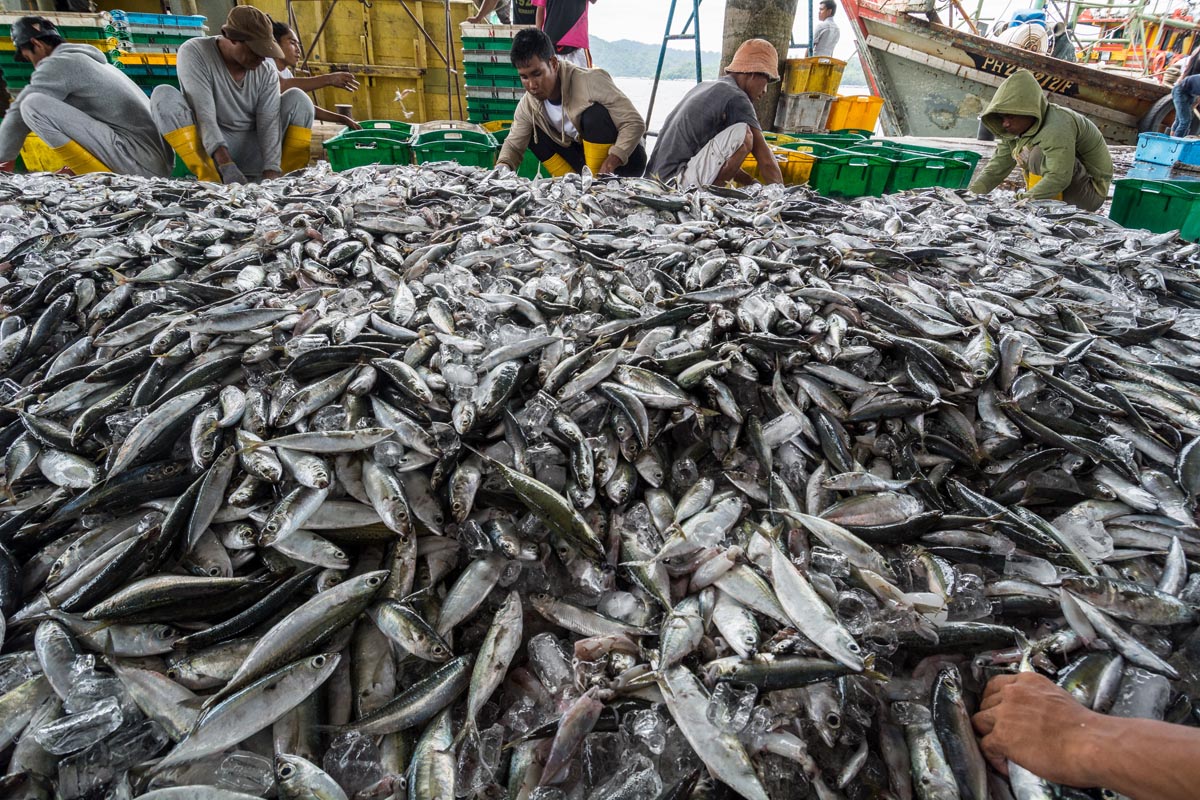 Fish cover the Filipino fish dock having been unloaded from the hold of a trawler. The trawler had been at sea for 30 days. The different species of fish are separated into boxes, labelled, weighed and loaded onto vehicles for distribution from Kota Kinabalu the capital of Sabah, East Malaysia.
Fish cover the Filipino fish dock having been unloaded from the hold of a trawler. The trawler had been at sea for 30 days. The different species of fish are separated into boxes, labelled, weighed and loaded onto vehicles for distribution from Kota Kinabalu the capital of Sabah, East Malaysia. -
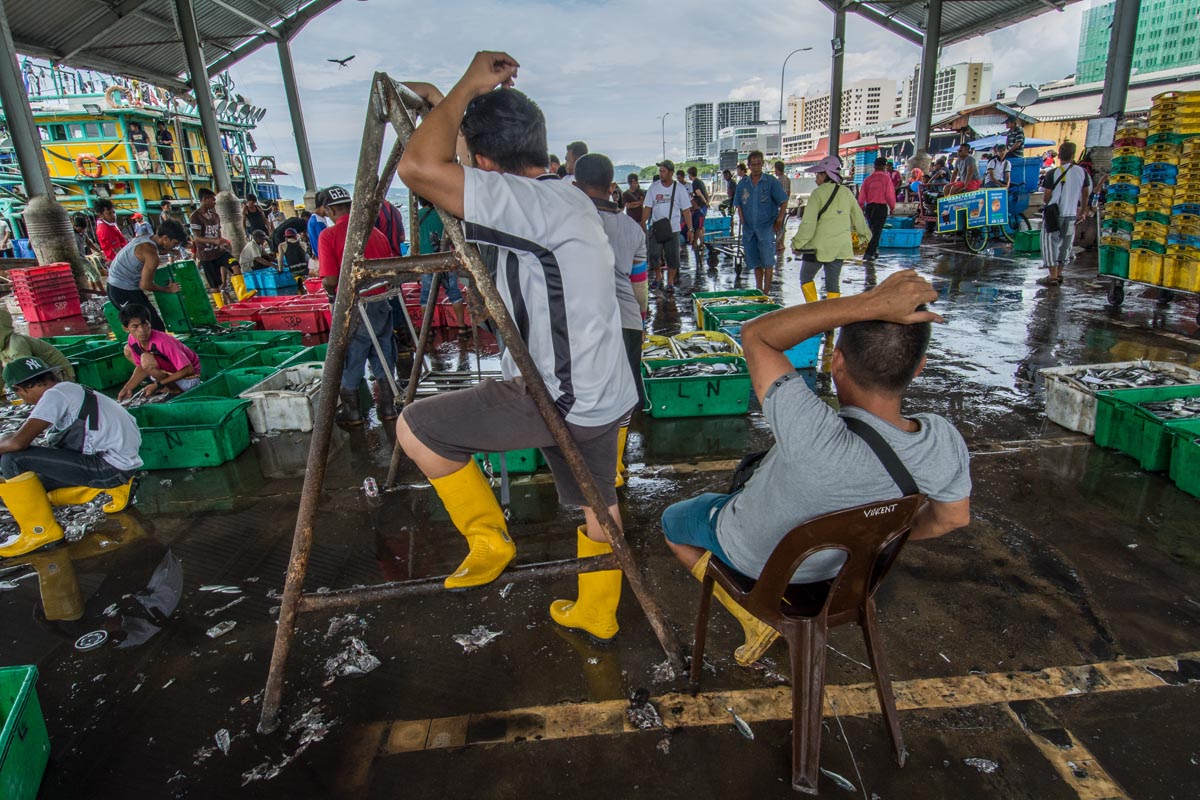 The Filipino fish docks in Kota Kinabalu are a hive of activity where fish are landed from Filipino trawlers, many of which have been out to sea for weeks at a time. The fishermen are among thousands of undocumented immigrants living in Sabah, East Malaysia on Borneo Island. Some of...
The Filipino fish docks in Kota Kinabalu are a hive of activity where fish are landed from Filipino trawlers, many of which have been out to sea for weeks at a time. The fishermen are among thousands of undocumented immigrants living in Sabah, East Malaysia on Borneo Island. Some of... -
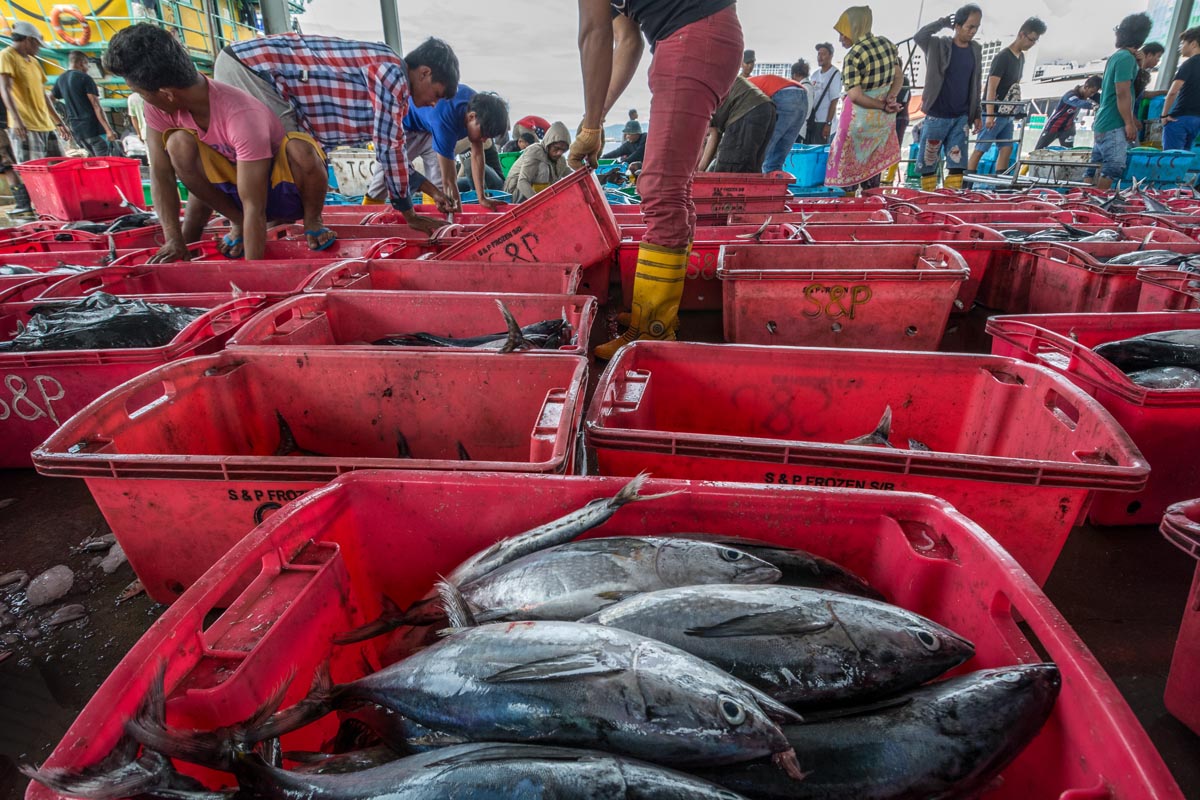 The Filipino fish docks in Kota Kinabalu are a hive of activity where fish are landed from Filipino trawlers, many of which have been out to sea for weeks at a time. The fishermen are among thousands of undocumented immigrants living in Sabah, East Malaysia on Borneo Island. Some of...
The Filipino fish docks in Kota Kinabalu are a hive of activity where fish are landed from Filipino trawlers, many of which have been out to sea for weeks at a time. The fishermen are among thousands of undocumented immigrants living in Sabah, East Malaysia on Borneo Island. Some of... -
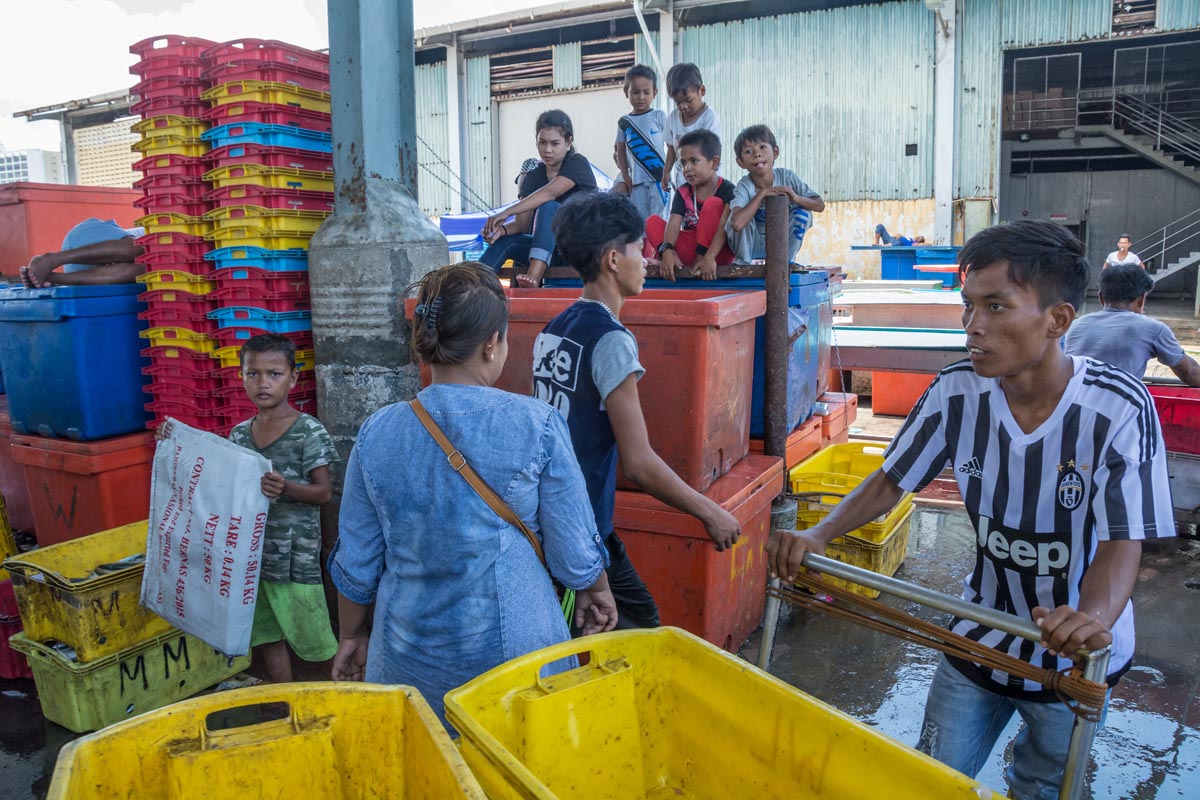 The Filipino fish docks in Kota Kinabalu are a hive of activity where fish are landed from Filipino trawlers, many of which have been out to sea for weeks at a time. The fishermen are among thousands of undocumented immigrants living in Sabah, East Malaysia on Borneo Island. Some of...
The Filipino fish docks in Kota Kinabalu are a hive of activity where fish are landed from Filipino trawlers, many of which have been out to sea for weeks at a time. The fishermen are among thousands of undocumented immigrants living in Sabah, East Malaysia on Borneo Island. Some of... -
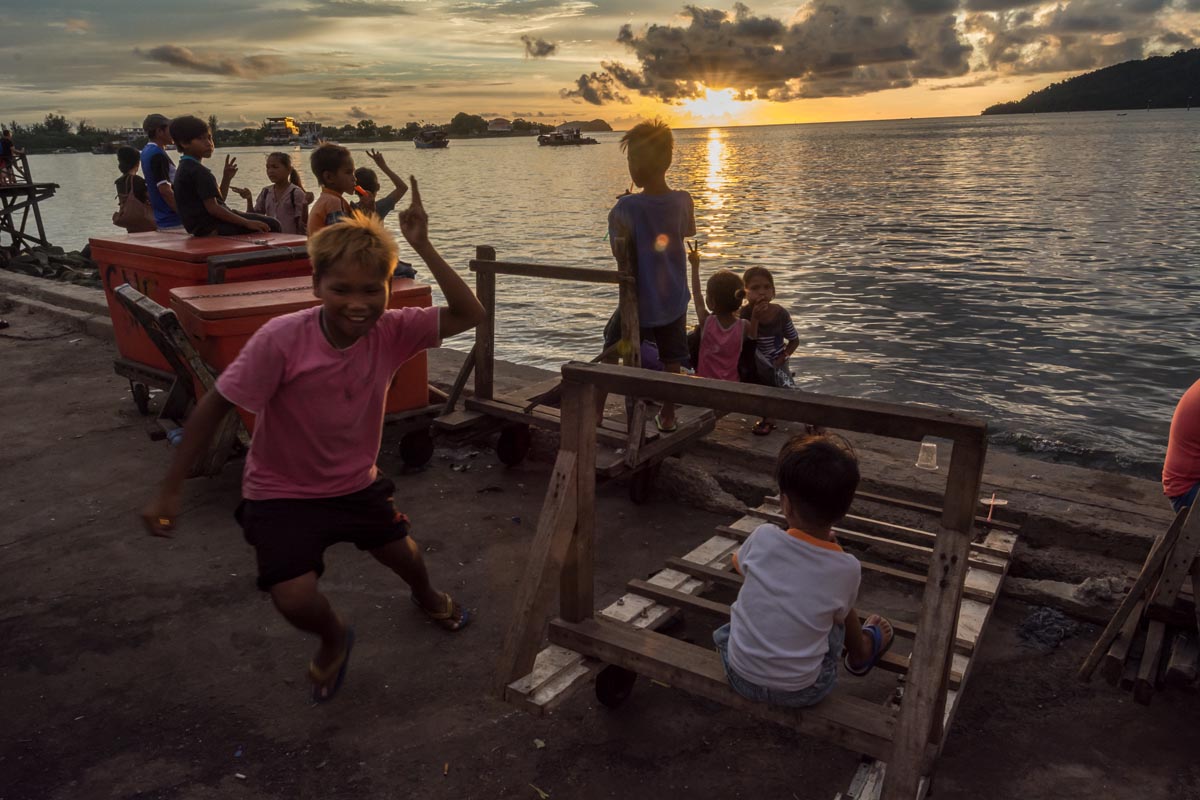 Stateless street children loiter around the Filipino market in Koto Kinabalu, getting up to mischief and searching for menial work as porters and bag carriers. Tens of thousands of undocumented immigrants live in Sabah, East Malaysia on Borneo Island. Some of them have lived there for many years with children...
Stateless street children loiter around the Filipino market in Koto Kinabalu, getting up to mischief and searching for menial work as porters and bag carriers. Tens of thousands of undocumented immigrants live in Sabah, East Malaysia on Borneo Island. Some of them have lived there for many years with children... -
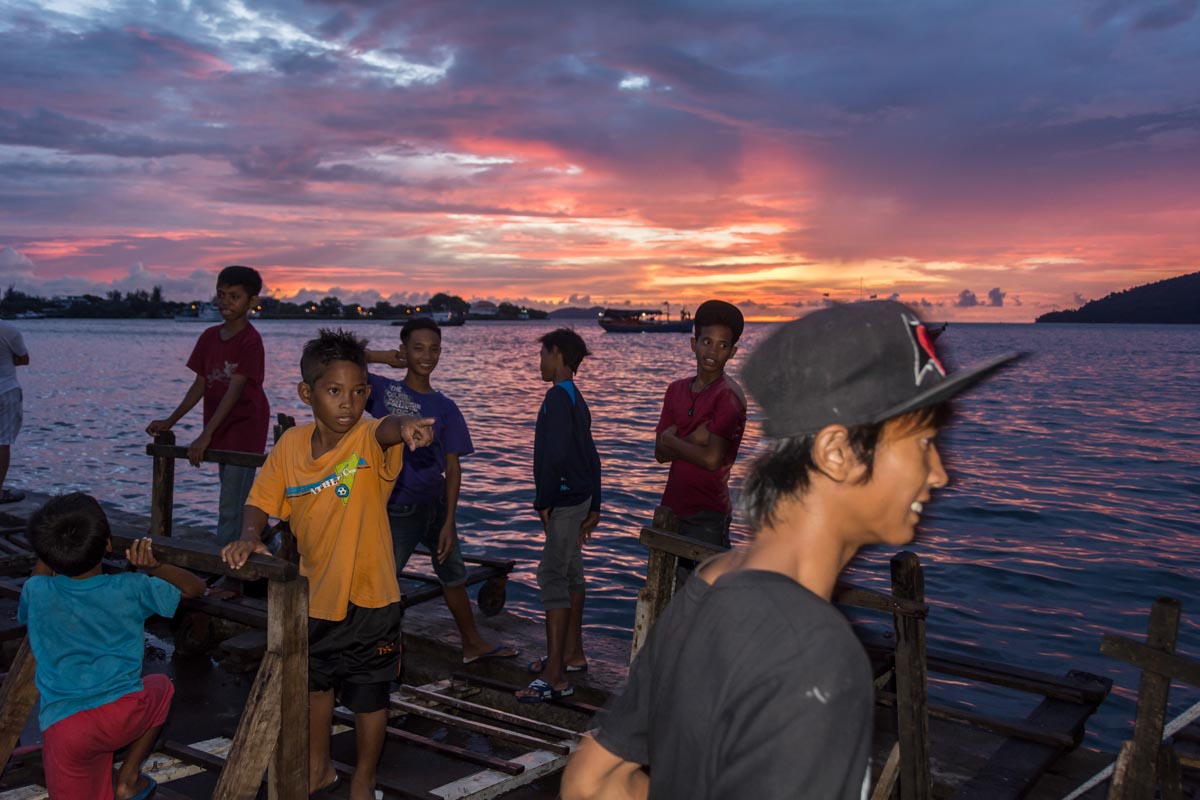 A boy points at another boy among a groups standing on porter trolleys and watching the sunset. Every evening ‘stateless’ children gather at the Filipino market in the town centre, where they work as porters because they are not eligible to join the state school education system. Kota Kinabalu, Sabah.
A boy points at another boy among a groups standing on porter trolleys and watching the sunset. Every evening ‘stateless’ children gather at the Filipino market in the town centre, where they work as porters because they are not eligible to join the state school education system. Kota Kinabalu, Sabah. -
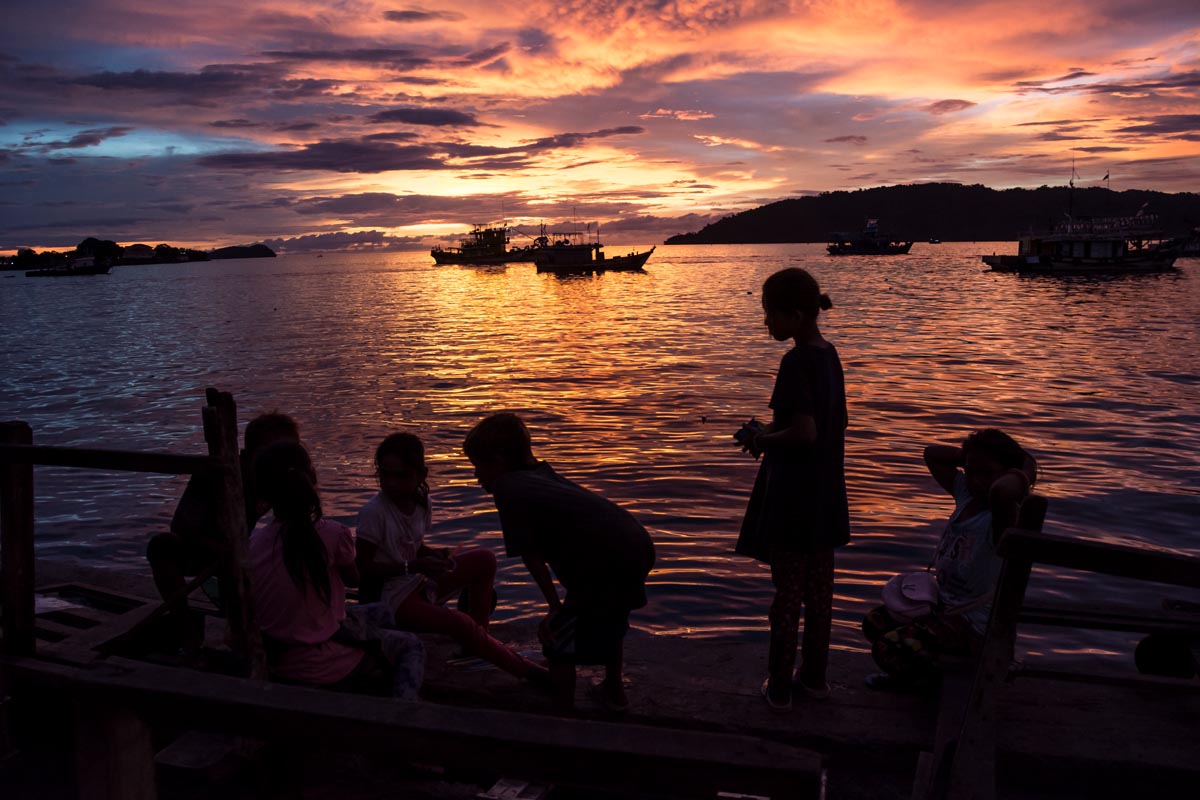 Stateless street children loiter around the Filipino market in Koto Kinabalu, getting up to mischief and searching for menial work as porters and bag carriers. Tens of thousands of undocumented immigrants live in Sabah, East Malaysia on Borneo Island. Some of them have lived there for many years with children...
Stateless street children loiter around the Filipino market in Koto Kinabalu, getting up to mischief and searching for menial work as porters and bag carriers. Tens of thousands of undocumented immigrants live in Sabah, East Malaysia on Borneo Island. Some of them have lived there for many years with children... -
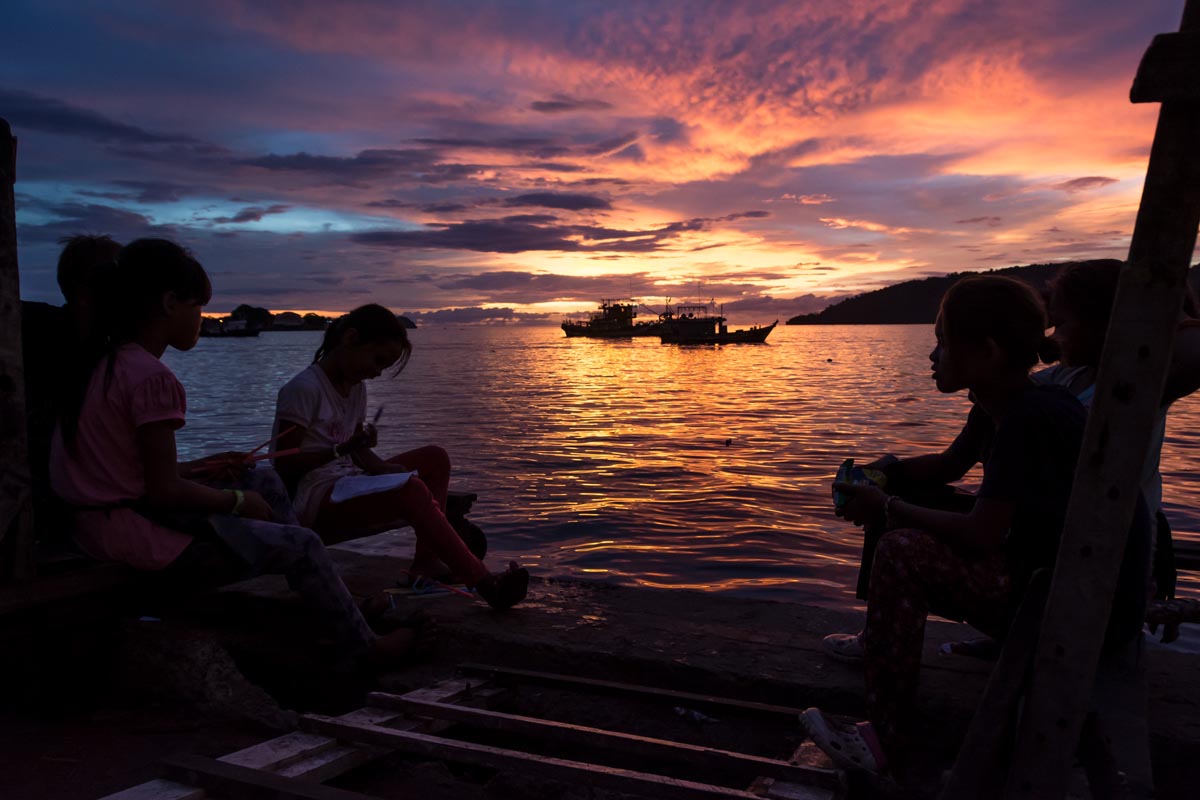 Stateless street children self-study at dusk outside the Filipino market in Koto Kinabalu. Tens of thousands of undocumented immigrants live in Sabah, East Malaysia on Borneo Island. Some of them have lived there for many years with children born there. Not eligible for official documentation they are stateless people. Lacking...
Stateless street children self-study at dusk outside the Filipino market in Koto Kinabalu. Tens of thousands of undocumented immigrants live in Sabah, East Malaysia on Borneo Island. Some of them have lived there for many years with children born there. Not eligible for official documentation they are stateless people. Lacking... -
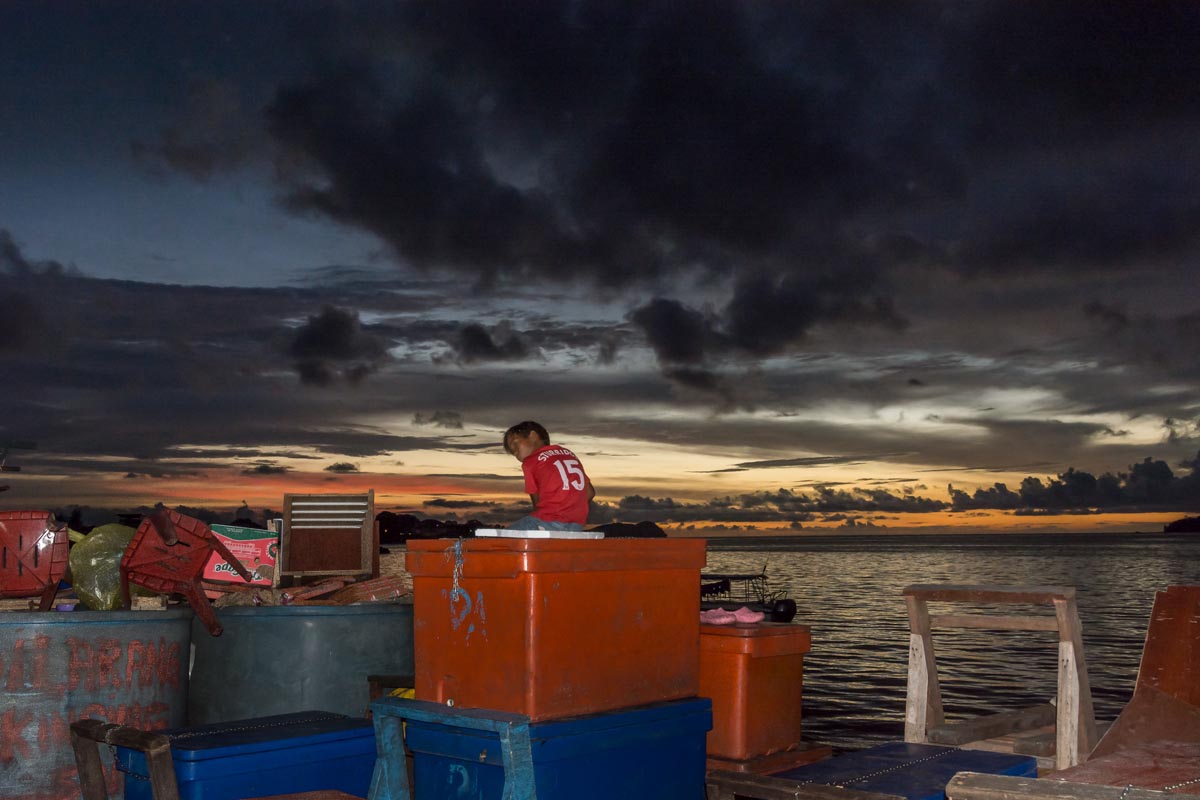 A boy sits on an icebox at dusk among the junk and garbage at the back of the Filipino market. Stateless street children loiter around the Filipino market in Koto Kinabalu, getting up to mischief and searching for menial work as porters and bag carriers. Tens of thousands of undocumented...
A boy sits on an icebox at dusk among the junk and garbage at the back of the Filipino market. Stateless street children loiter around the Filipino market in Koto Kinabalu, getting up to mischief and searching for menial work as porters and bag carriers. Tens of thousands of undocumented... -
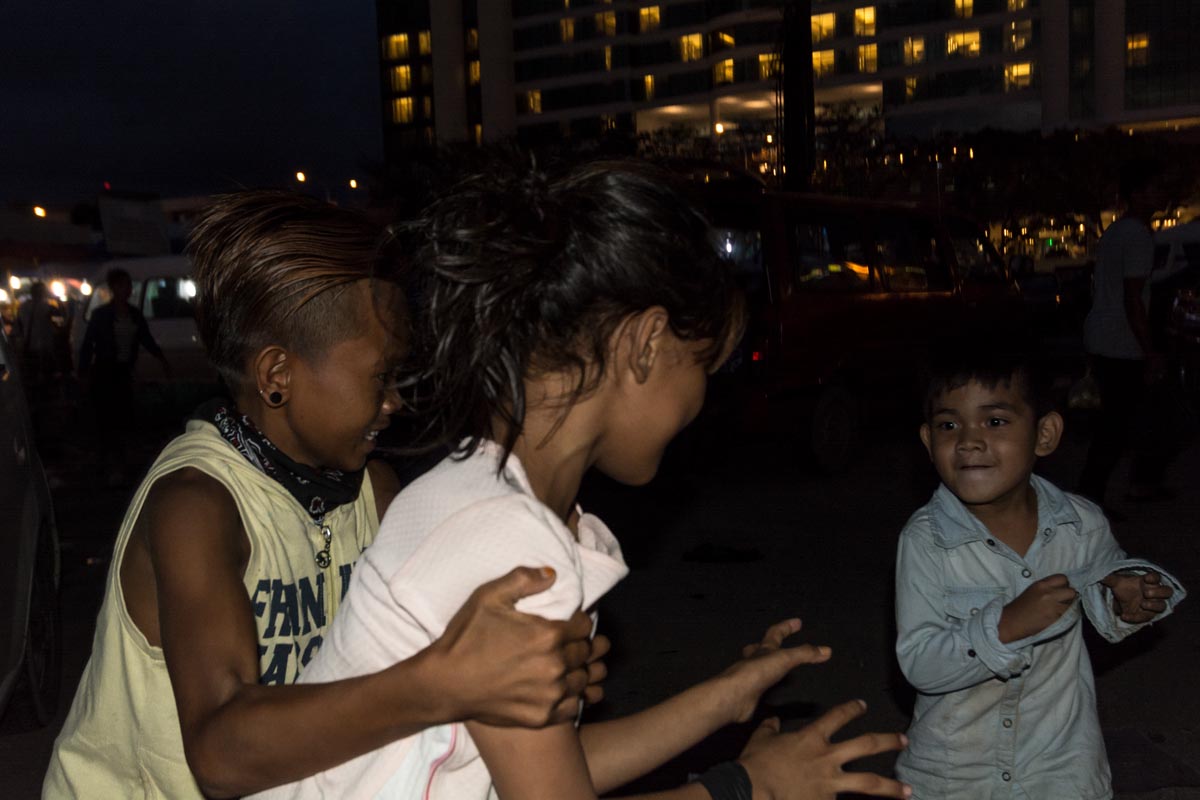 Children play fighting at night outside the Filipino market. Stateless street children loiter around the Filipino market in Koto Kinabalu, getting up to mischief and searching for menial work as porters and bag carriers. Tens of thousands of undocumented immigrants live in Sabah, East Malaysia on Borneo Island. Some of...
Children play fighting at night outside the Filipino market. Stateless street children loiter around the Filipino market in Koto Kinabalu, getting up to mischief and searching for menial work as porters and bag carriers. Tens of thousands of undocumented immigrants live in Sabah, East Malaysia on Borneo Island. Some of... -
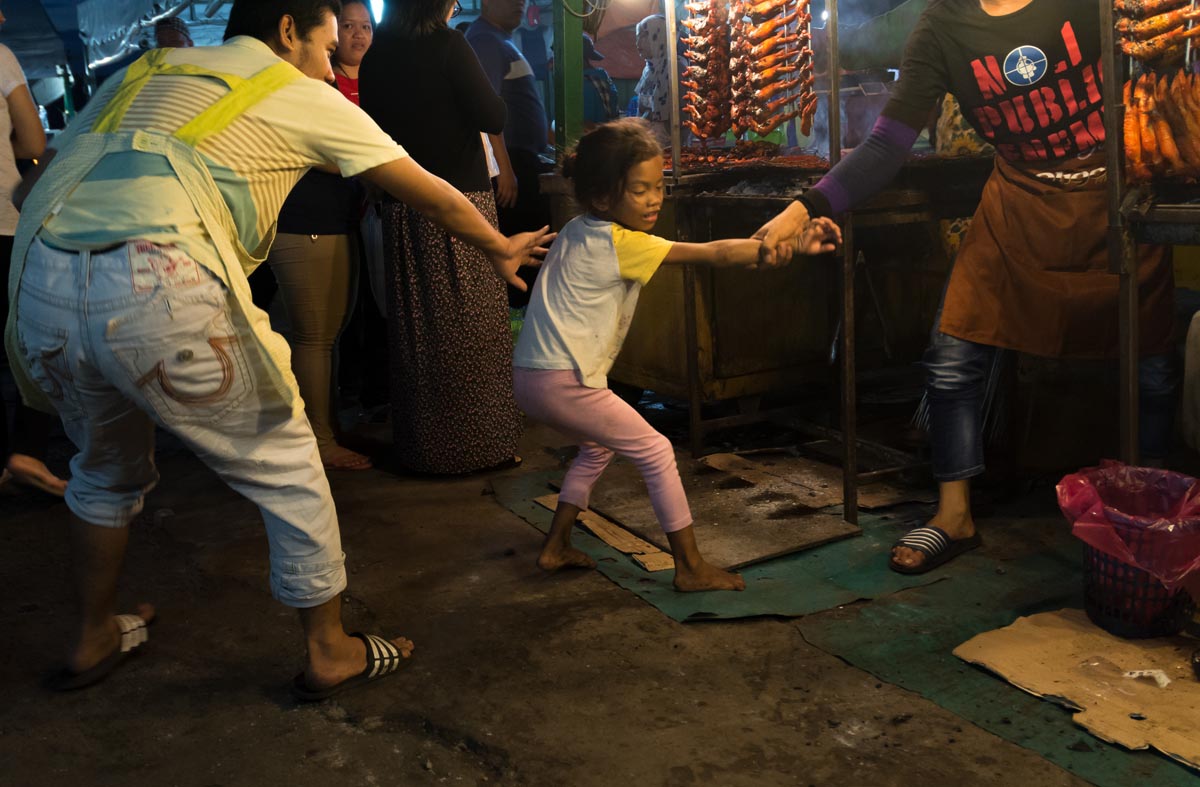 A girl is caught red handed stealing sate chicken in the Filipino market. Stateless street children loiter around the Filipino market in Koto Kinabalu, getting up to mischief and searching for menial work as porters and bag carriers. Tens of thousands of undocumented immigrants live in Sabah, East Malaysia on...
A girl is caught red handed stealing sate chicken in the Filipino market. Stateless street children loiter around the Filipino market in Koto Kinabalu, getting up to mischief and searching for menial work as porters and bag carriers. Tens of thousands of undocumented immigrants live in Sabah, East Malaysia on... -
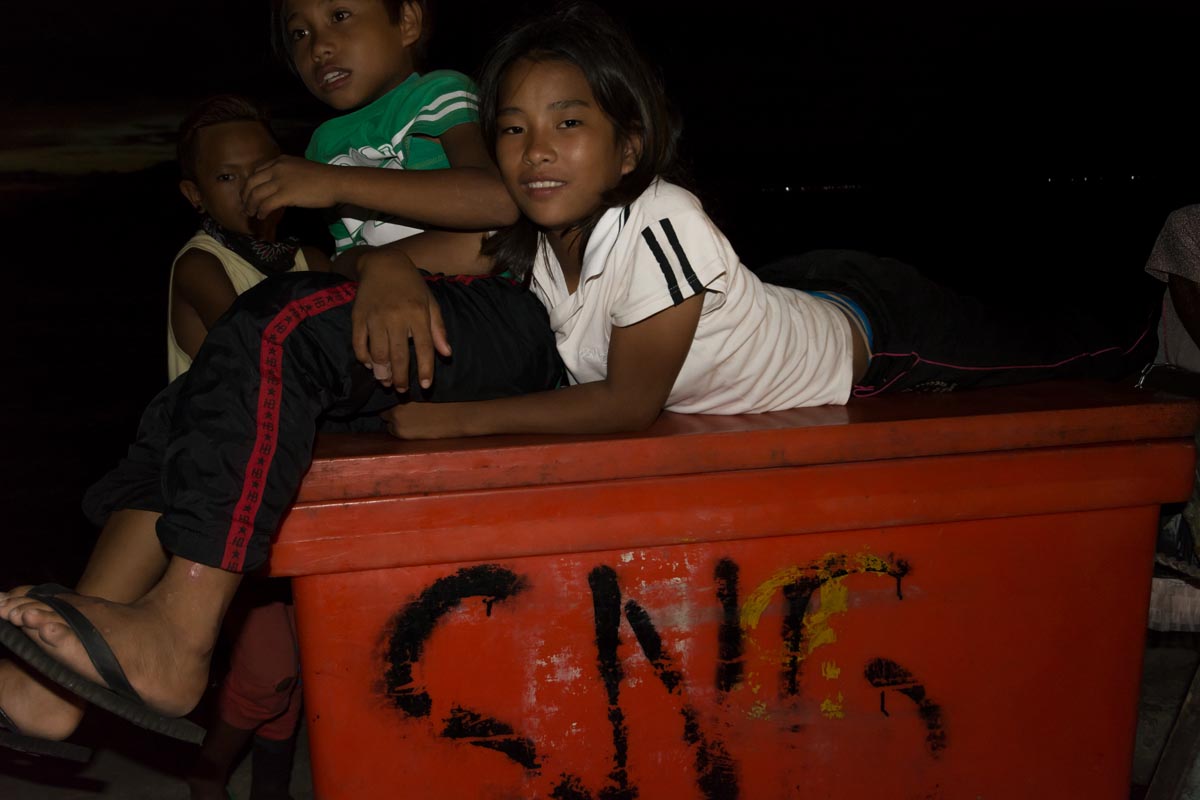 Stateless street children loiter around the Filipino market in Koto Kinabalu, getting up to mischief and searching for menial work as porters and bag carriers. Tens of thousands of undocumented immigrants live in Sabah, East Malaysia on Borneo Island. Some of them have lived there for many years with children...
Stateless street children loiter around the Filipino market in Koto Kinabalu, getting up to mischief and searching for menial work as porters and bag carriers. Tens of thousands of undocumented immigrants live in Sabah, East Malaysia on Borneo Island. Some of them have lived there for many years with children... -
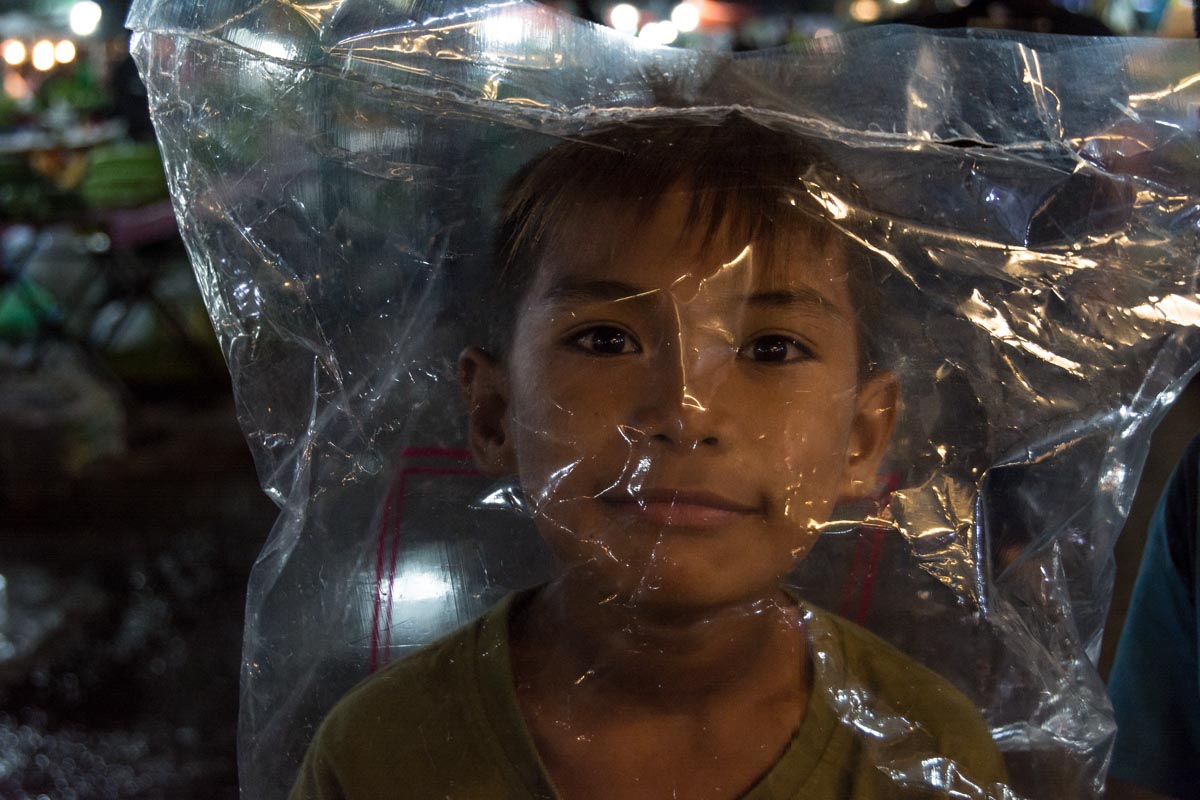 A boy plays in the Filipino market with a plastic bag over his head. Having received no school education he is unaware of the dangers of suffocation. Stateless street children loiter around the Filipino market in Koto Kinabalu, getting up to mischief and searching for menial work as porters and...
A boy plays in the Filipino market with a plastic bag over his head. Having received no school education he is unaware of the dangers of suffocation. Stateless street children loiter around the Filipino market in Koto Kinabalu, getting up to mischief and searching for menial work as porters and... -
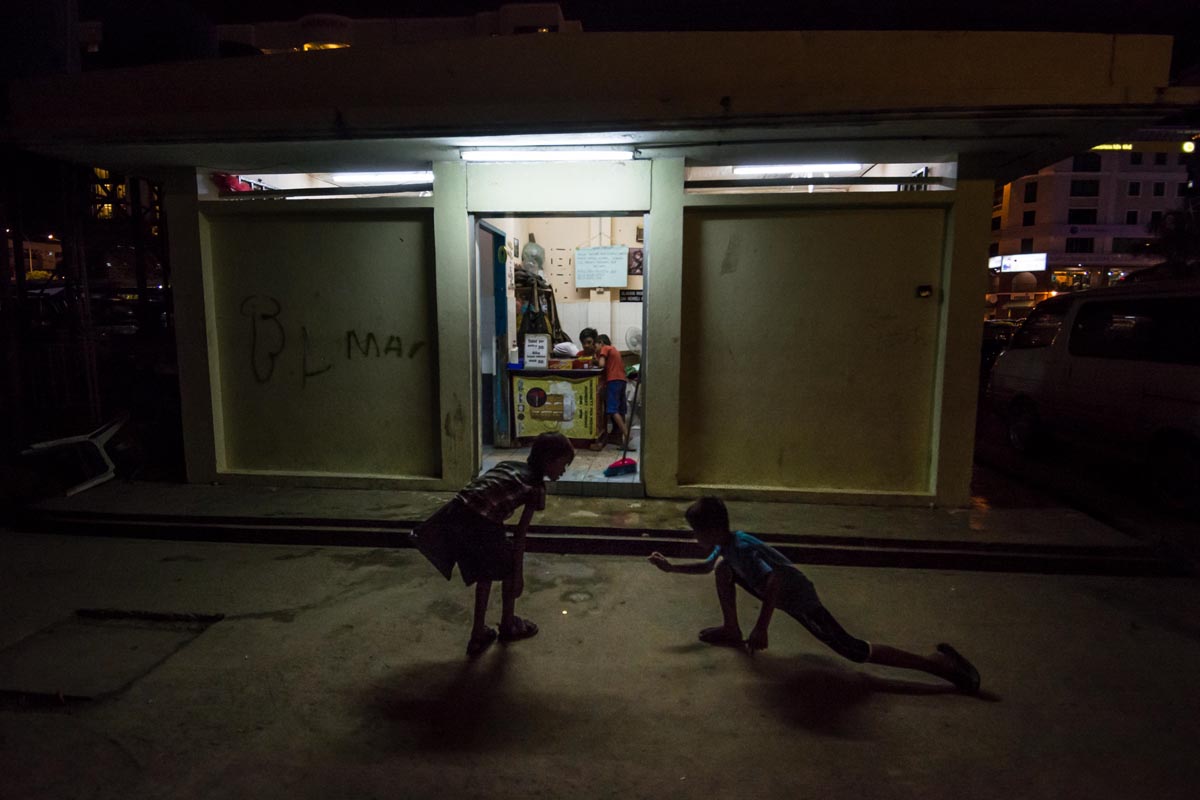 Two boys play a favourite game of 'coin' outside a public toilet in Kota Kinabalu, capital of Sabah. Stateless street children loiter around the Filipino market, getting up to mischief and searching for menial work as porters and bag carriers. Tens of thousands of undocumented immigrants live in Sabah, East...
Two boys play a favourite game of 'coin' outside a public toilet in Kota Kinabalu, capital of Sabah. Stateless street children loiter around the Filipino market, getting up to mischief and searching for menial work as porters and bag carriers. Tens of thousands of undocumented immigrants live in Sabah, East...
Stateless_Sabah01
Communities struggle to save Sabah’s shrinking mangroves
- A development plan establishing shrimp farms and timber plantations begun purportedly to reduce poverty in northern Sabah, Malaysia, has attracted criticism from local communities and NGOs, which say the project is ignoring communities’ land rights.
- Satellite imagery shows the clearing of large tracts of mangrove forest for shrimp farms. Critics of the development say this is depriving forest-dependent local communities of their livelihoods as well as threatening mangrove wildlife.
- Several communities have banded together and are together petitioning the government to officially recognize their rights to the remaining mangroves and prevent further clearing for development.
TELAGA, Malaysia — The district of Pitas in the Malaysian state of Sabah is situated on the 40-kilometer Bengkoka peninsula on the island of Borneo, stretching east into the South China sea.
This forested, hilly area slopes down to the coast along the Telaga River, through ancient mangrove forest. But since the 1980s, it has been increasingly opened up by government-sanctioned development projects; more recently, in 2013, mangrove clearance has resumed for the commercial farming of shrimp (also referred to as prawns). This resurgence has brought the company Sunlight Inno Seafood Company Sdn Bhd, which is supported by the government, into conflict with local communities that depend on the mangroves for their livelihoods.
In response to mangrove clearance, six indigenous Orang Asli communities in the district have come together to form the “Group of Six” (G6) collective Pitas action committee. It aims to save around 1,000 acres of the remaining mangroves and get this area legally designated under their Native Customary Rights (NCR).
Farmer and fisherman Mastupang Bin Somoi, 52, from Kampung Sungai Eloi, is founder and Chairman of the G6 collective. In his gardens he grows vegetables, rice and a few rubber and oil palm trees. He shows me a handful of large shellfish he has gathered from the muddy riverbed at the nearby boat landing. He says the villagers in the area depend on a mix of farming, fishing and collecting non-timber forest products from the mangrove forest for their livelihoods.
“They used to be quite friendly, they were not scared of humans, but now after their habitat’s been destroyed they’ll keep their distance,” Somoi says as he watches two proboscis monkeys (Nasalis larvatus) bound through the trees. As the boat he’s on proceeds along a channel through the mangroves, a two-meter (6.5-foot) estuarine crocodile (Crocodylus porosus) slides from the bank into the water. These mangrove forests are home to a wide diversity of vulnerable species, some of them listed under the Convention on International Trade in Endangered Species of Wild Fauna and Flora (CITES).
“This sign says, ‘no encroachment’,” says Somoi, pointing to a sign tied to a tree. The signs have been placed by the communities to demarcate the perimeter of the mangrove forest claimed under their NCR. Around 2,300 acres have already been cleared under the project and this is set to expand next into an additional 1,000 acres, pending the outcome of an Environmental Impact Assessment (EIA) started in 2015.
Further along, Somoi points out a burial site he says is sacred to the communities. Soon the dense mangrove forest opens into a clearing of stark devastation with dead mangrove roots bleached silver by the tropical sun and the dark peat earth beneath torn into grooves by heavy equipment. Most of the forest has already been cleared and the communities are desperate to retain the remainder on which they depend for resources, as well as the other ecosystem services it provides.
The shrimp farms cut out of the mangrove forests are secured with two-meter-high solid metal fences backed with coils of razor wire to keep people out. One plot visited by Mongabay was an area about 400 meters (1,300 feet) across containing artificial ponds in which water was being circulated with turbine pumps; a handful of workers was on-site.
Lanash Thanda, president of the NGO Sabah Environmental Protection Association (SEPA), described how the project was originally initiated by the Sabah Forest Development Authority (SAFODA) as part of the 2010 Malaysian Economic Transformation Programme to bring economic development to the poverty stricken area. “There is no water connection so people save rainwater from their roofs and when that is gone have to pay for deliveries,” Thanda said. She explained that levels of poverty in Pitas are high compared with most of Sabah. However, according to Thanda, the project has floundered due to mismanagement and a lack of processing, storage and transportation infrastructure. “Look at their office – it’s new. That’s the prawn farm company. When I came in November it wasn’t there,” said Thanda, explaining how the project is proceeding despite initial deficiencies. “The Sunlight company was supposed to open a plant in Pitas to process prawns and provide 3,000 jobs, but nothing is happening,” Thanda told Mongabay. She said local people are dismayed that foreign workers have been brought in, and that few of the jobs originally promised have materialized. Sunlight Inno Seafood Company Sdn Bhd did not respond to requests for comment.
The boat stops at a large stand of dead mangrove trees. The communities suspect they were poisoned because at the same time the trees died, “all the fish died” in the area, Thanda said. This area of mangroves was frequently used by local communities, and its destruction galvanized members from the G6 collective into action. In June 2015 they confronted workers clearing the area with heavy equipment.
“We spoke to the other G6 communities. Thirty-seven members came down. We posted a notice and painted the hitachis [digging equipment],” Somoi said. “In the notice we explained that we are giving you [the equipment operators] 24 hours notice to vacate this area, because this is our NCR [Native Customary Rights] area. If you do not leave after this we will not be responsible for actions taken against you from the communities. Then we left.” According to Thanda, thirty staff from the G6 communities working in the shrimp farms were sacked within the following month. She suspects that this was punitive retaliation by the shrimp company for protesting further clearance.
The equipment was subsequently removed and the Environmental Protection Department responded that an EIA would now be conducted on the area to assess whether clearance should proceed. But despite beginning in 2015, the EIA is still pending. The G6 collective has since been active in denouncing the conduct of the EIA process and the project in general. Meanwhile, according to SEPA, in December 2015 the State Cabinet approved clearance of a further 3,000 hectares of mangrove forest in the region.
On April 27, 2017, a delegation from the G6 collective travelled to the state capital Kota Kinabalu to deliver a letter to Chief Minister Datuk Seri Musa Aman, requesting that he intervene to stop the mangrove clearance. The Borneo Post reported that the letter requested the First Minister “to intervene and protect the land in their villages from alleged encroachment by the owners of a prawn farming project there.” The Chief Minister has yet to respond to their request.
Clearance of the forest is nothing new to the communities. Bihahon Rumindon, 67, from Kampong Boluuh village (which is a member of the G6 collective), has been fighting for recognition of his land title for years. He says that while he was awarded the land by the Sabah Forestry Development Authority (SAFODA) in 1971, SAFODA did not follow though on the allocation commitment and instead used it for a local acacia plantation project now managed by Acacia Forest Industries Sdn Bhd (AFI). The company is currently structured as a 50:50 joint venture between SAFODA and the Hijauan Bengkoka Plantations Sdn Bhd (HASB) company and supported by SAFODA.
According to AFI literature, HASB is: “a Sabah based company the ultimate shareholders of which are two international timber funds. Tropical Asia Forest Fund (TAFF) is the majority shareholder managed by New Forests.”
Requests for comment sent to AFI were unanswered by press time.
Rumindon explained that his people, the Rungus indigenous people, were originally nomadic. He and his neighbors agreed to settle on the land offered to them by SAFODA. He said the department offered 18 acres of land per family if they agreed to give up their nomadic tradition, settle there and clear the forest to cultivate crops. “There was a survey conducted and stones put in the ground in 1974,” Rumindon explained, thumbing through a thick folder of correspondence with government officials.
According to Rumindon, in the late 1970s the community agreed to requests from the original acacia company, Hijuan Planters, to rent the land, because the company said it would clear it. Mongabay visited AFI’s loading dock where cranes load vast piles of acacia logs onto barges destined for pulp and paper mills. “SAFODA says we are encroachers” said Rumindon, who despite his age is still struggling for a just outcome and says it was SAFODA that leased it to the company. Rumindon says the land was never returned. AFI, which took over operations more recently, retains occupation of the plantation area still under operation, and their claim appears to be supported by SAFODA.
“It took seven years to get hold of the [paper] plan,” Rumindon explained, unrolling a large detailed plan of community land from the land department. It appears to conflict with an earlier plan that clearly shows the plots allocated to community families. “SAFODA began designing reforestation and settlement projects in Bengkoka in early 1979,” reads a translated version of SAFODA’s website. “Acacia mangium cultivation was started in 1981. This project is the only large-scale institutional farm dedicated to commercial purposes.” The site does not mention an earlier land agreement, and requests for comment sent by Mongabay to several senior SAFODA staff went unanswered.
In its charter, translated from Malay to English, SAFODA says it is committed to: “Restoring and maintaining an environmentally friendly balance including flora and fauna through forestry activities.”
Rapid clearance of natural eco-systems for development projects in Sabah is an ongoing issue of concern to conservationists, and the situation in Pitas is no exception. As forest is razed for development, already-threatened species may be placed at greater risk. Meanwhile, local communities may face the loss of the many valuable ecosystem services mangrove forests provide, such as fishing, foraging and water catchment.
So far, local indigenous groups say their appeals for official recognition of their rights over these lands have largely been ignored. Critics say government development plans remain firmly in favor of supporting big businesses, despite damaging environmental consequences.
by Rod Harbinson on 13 September 2017.
Originally published by Mongabay Series: Global Forest Reporting Network
-
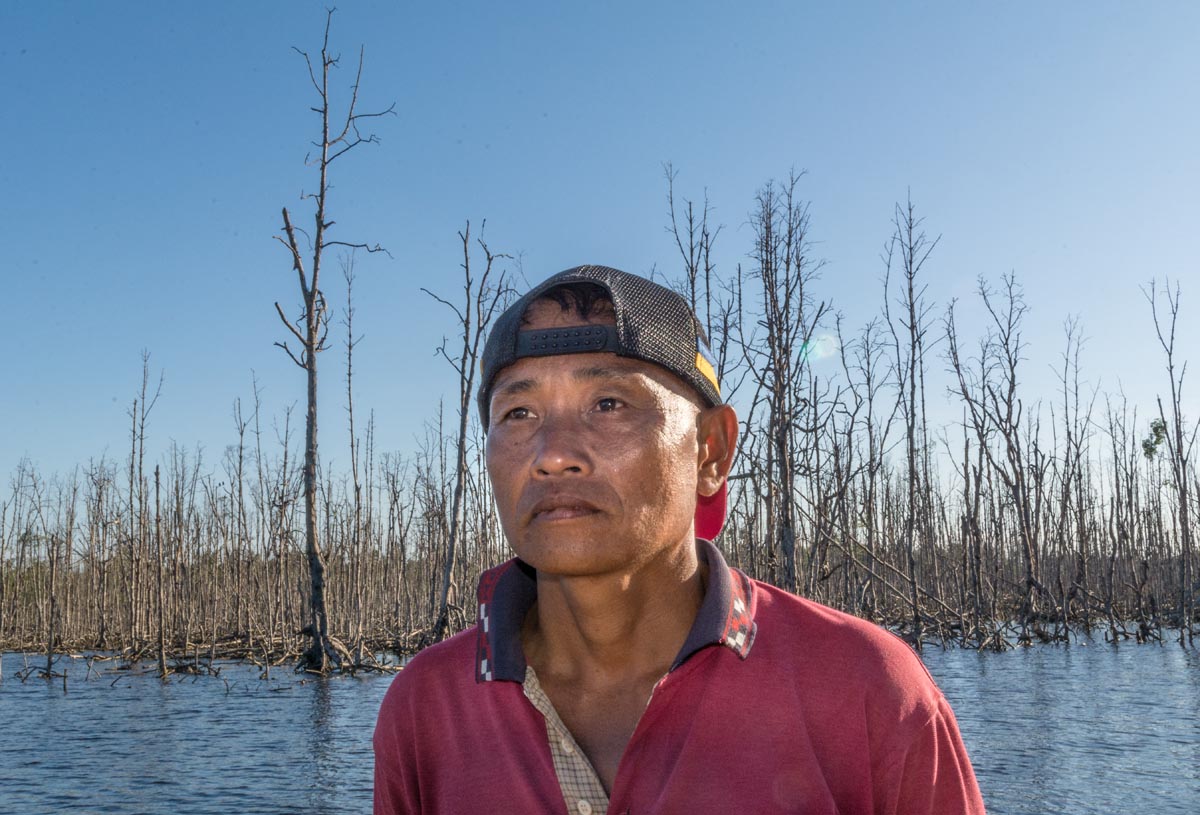 Mastupang Bin Somoi, 52, from Kampung Sungai Eloi stands in front of an area of mangrove forest which has been killed off for clearance through unknown means. The authority for clearing the area is contested because at the time the company responsible did not have the required environmental impact assessment.
Mastupang Bin Somoi, 52, from Kampung Sungai Eloi stands in front of an area of mangrove forest which has been killed off for clearance through unknown means. The authority for clearing the area is contested because at the time the company responsible did not have the required environmental impact assessment. -
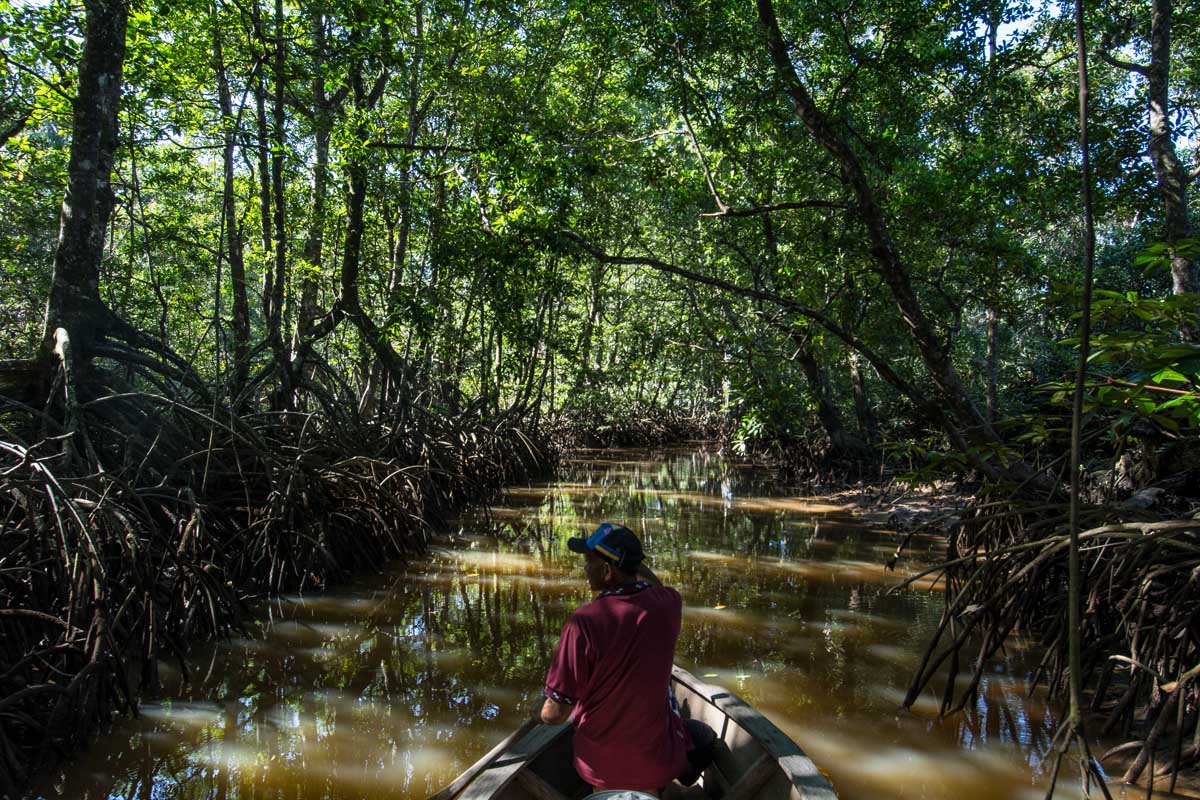 Mastupang Bin Somoi, 52, from Kampung Sungai Eloi paddles his boat through ancient mangrove forests on which his community depends for fish and produce. Much of the forest has already been cleared and the community is keen to maintain an area to sustain their livelihoods. The mangrove are an important...
Mastupang Bin Somoi, 52, from Kampung Sungai Eloi paddles his boat through ancient mangrove forests on which his community depends for fish and produce. Much of the forest has already been cleared and the community is keen to maintain an area to sustain their livelihoods. The mangrove are an important...
Activists defy Malaysian state to defend indigenous forests
- Deep in the rainforests of northern Malaysia, anti-logging campaigns are trying to stop logging companies from entering forests they say belong to Orang Asli communities.
- Blockades are being set up in peninsular Malaysia’s northern state of Kelantan by groups that say logging activities are damaging forests and the surrounding environment.
- Kelantan has seen more forest clearing in recent years as the state ramps up tree plantation development.
Activist groups say forestry departments are granting forest access to logging companies, while restricting access to forest-dependent communities. - Malaysian courts ruled recently that forests being targeted by logging companies belong to indigenous Orang Asli communities.
GUAMUSANG, Malaysia – In their fight for the rights of peninsular Malaysia’s native people, the Orang Asli, an alliance of women are making waves in the country’s highly conservative society as they support the efforts of communities and activists trying to stop logging of the region’s forests. The women represent a variety of fields and organizations and are speaking out and even risking arrest in their struggle for the forests and the communities that depend on them.
Mongabay joined them on a convoy deep into the rainforests of northern Malaysia’s Kelantan State to supply provisions to anti-logging campaigns, traveling by night to evade detection by State Forestry Department police. Here, the Temiar indigenous peoples are resisting deforestation by setting up road blockade camps in local forest reserves. By March 2017, three blockade camps had reportedly been torn down by forestry police, but the Temiar vowed to set up more.
The terrain was mountainous and the dirt logging trail had been regularly pounded by the heavy monsoon rains, making progress treacherous. The convoy passed Orang Asli villages along the road, punctuated with log piles and bulldozers at the trackside.
“If we see any of the big guys [elephants], turn off your engine and lights and wait for them to pass,” Karin Lee of PEKA (Preservation of Natural Heritage Organization) announced over the radio to the convoy.
Published on Mongabay.com
Forest_Blockades12
Forest_Blockades11
Forest_Blockades10
Forest_Blockades09
Forest_Blockades08
Forest_Blockades07
Forest_Blockades06
Forest_Blockades05
Forest_Blockades04
Forest_Blockades03
Forest_Blockades02
Forest_Blockades01
Is a property boom in Malaysia causing a fisheries bust?
-
- Driven by high demand for housing, developers in Malaysia’s Penang Island are artificially expanding the coastline and planning to construct new islands.
- Local fishers say building works have already damaged their livelihoods, and fear further construction will destroy their fishing grounds.
- Mangroves and endangered bird species are also threatened, and the mining and transport of construction materials could spread adverse environmental impacts beyond just Penang.
PENANG, Malaysia — Fisherman Liew Hock Choon, 50, cut the outboard engine and explained that we have arrived at the position of one of his fish traps. “No GPS,” he said.
Using a method called triangulation, his keen eyes pinpointed natural markers on the shoreline and used these bearings to locate his traps with incredible accuracy. With an anchor thrown down, he snagged his trap and hauled it up. The deck was soon awash with flapping fish. These are grouper — prized in the restaurants of Penang and beyond, they fetch a premium price and can only be caught with hooks or traps, Liew explained. He said customers travel from as far as Hong Kong to buy these prized delicacies.
“Look at this mud in the traps,” Liew complained as just two of his four traps contained a catch worth keeping. Still, it was a good day under the circumstances. One phone call later and the 11 kilograms (24 pounds) of grouper were snapped up by a restaurant owner eager to purchase them for over 500 ringgit ($113). They were still alive when Liew delivered and weighed them while hungry customers looked on.
“I know this area very well because in my school days I followed one of the fishermen,” said Liew, from Tanjung Bungah a village North of Penang Island’s capital Georgetown. Now the days of his fishing grounds are numbered because of a land reclamation project by a local property developer.
“This area is very rich with mud crab, shrimp, snapper, and grouper, but soon it will all be gone,” said Liew.
Published on Mongabay.com
-
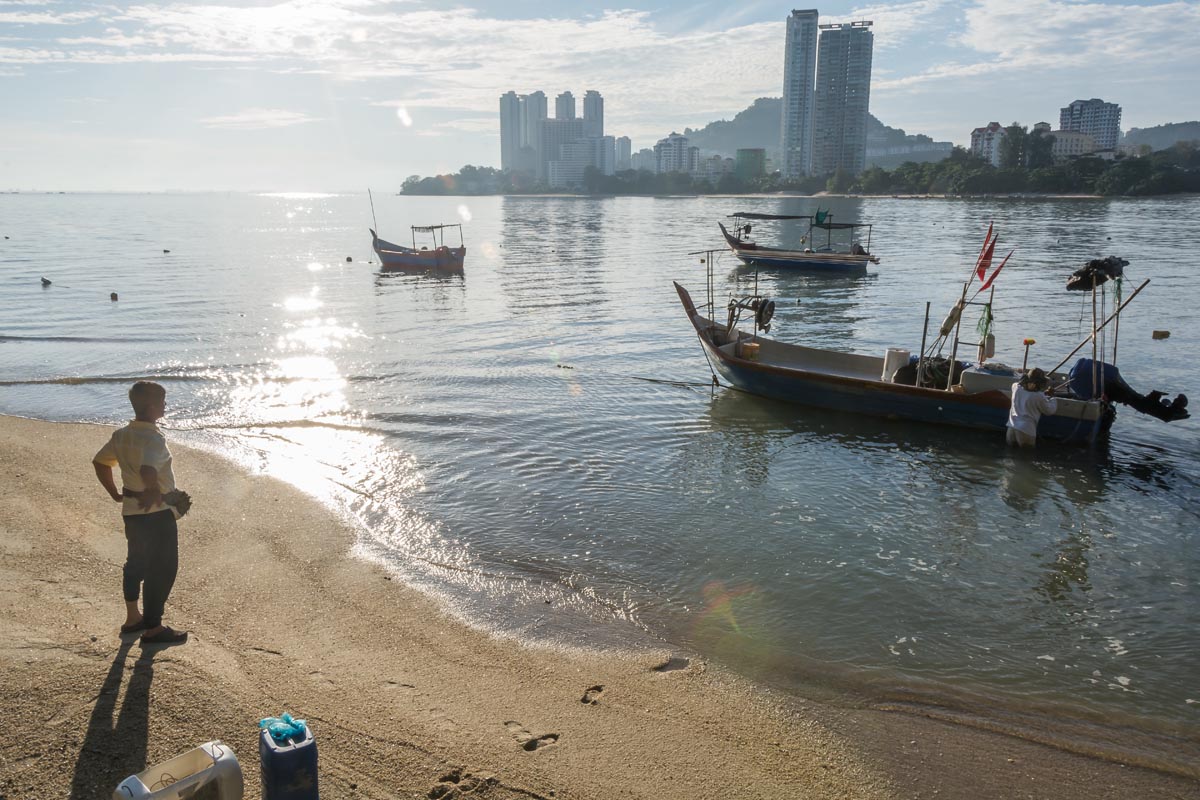 Penang fisherman Mr Liew Hock Choon, 50, is from Tanjung Bungah a village North of Penang Island’s capital Georgetown. Here he prepares his fishing boat to go a collect his fish traps in the reclamation area. Land reclamation for infrastructure projects and property is becoming more widespread in Asia. On...
Penang fisherman Mr Liew Hock Choon, 50, is from Tanjung Bungah a village North of Penang Island’s capital Georgetown. Here he prepares his fishing boat to go a collect his fish traps in the reclamation area. Land reclamation for infrastructure projects and property is becoming more widespread in Asia. On... -
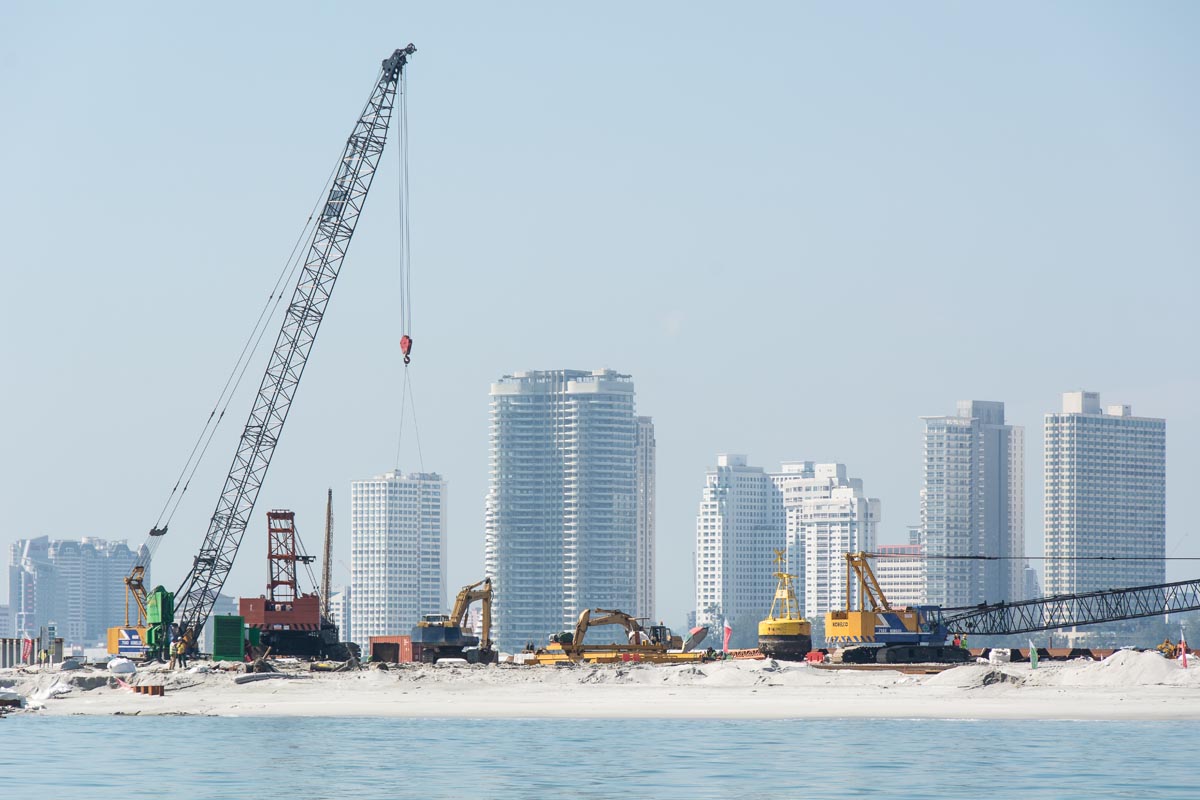 Reclamation building works underway as part of a new island being constructed by the Seri Tanjung Pinang company, a subsidiary of Oriental and Eastern company. Land reclamation for infrastructure projects and property is becoming more widespread in Asia. On Penang island schemes are increasing, especially to build high class housing....
Reclamation building works underway as part of a new island being constructed by the Seri Tanjung Pinang company, a subsidiary of Oriental and Eastern company. Land reclamation for infrastructure projects and property is becoming more widespread in Asia. On Penang island schemes are increasing, especially to build high class housing.... -
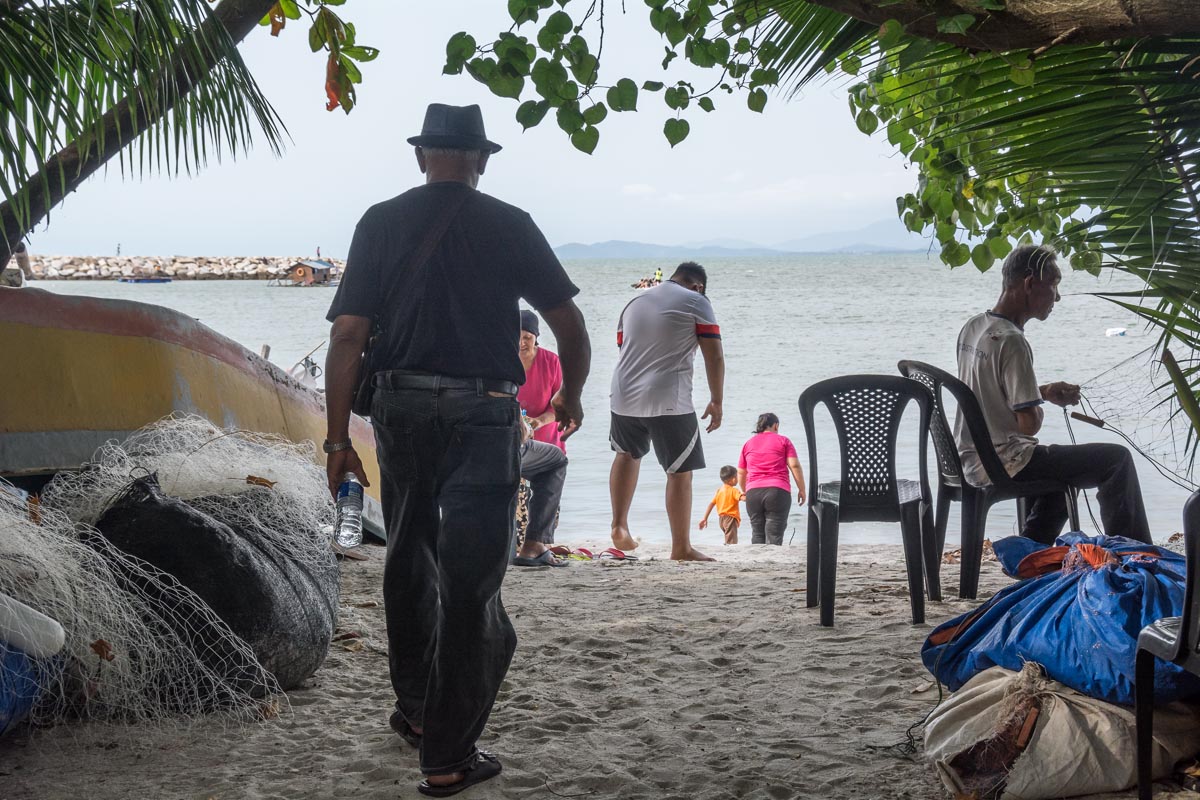 Fisherman Mr Mohd-Ishak (left) is Chairman of the Northern Fishing Community Group of Tanjung Tokong on Penang Island. On Penang island schemes are increasing, especially to build high class housing. The projects require large volumes of building materials, especially sand, and have an impact on the environment especially marine biodiversity....
Fisherman Mr Mohd-Ishak (left) is Chairman of the Northern Fishing Community Group of Tanjung Tokong on Penang Island. On Penang island schemes are increasing, especially to build high class housing. The projects require large volumes of building materials, especially sand, and have an impact on the environment especially marine biodiversity....

